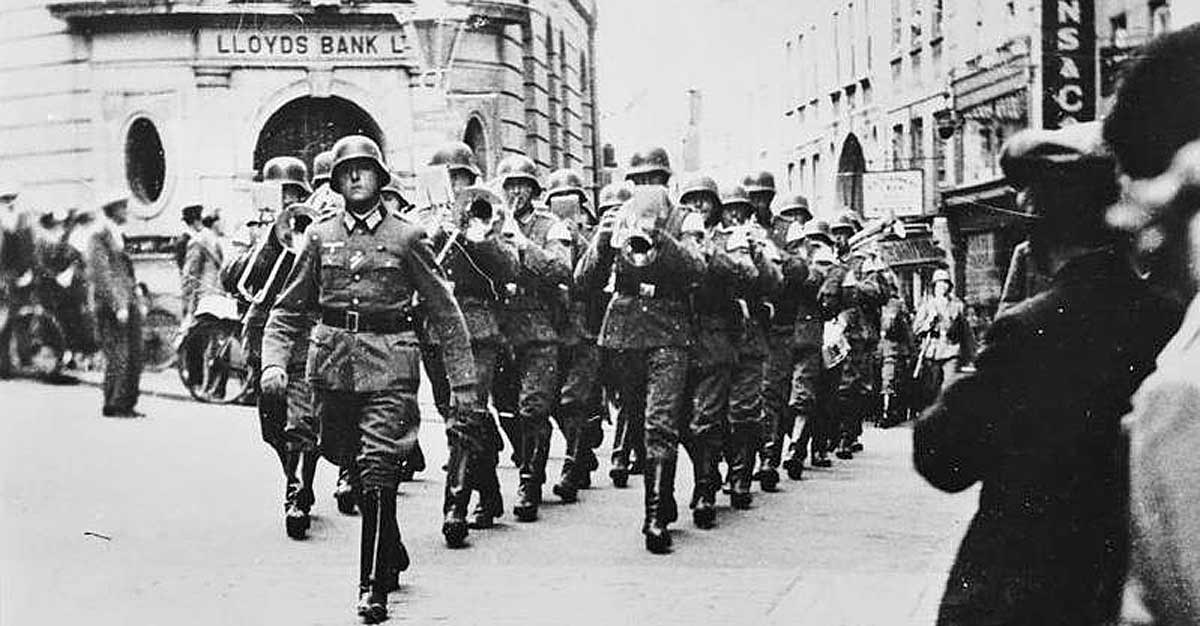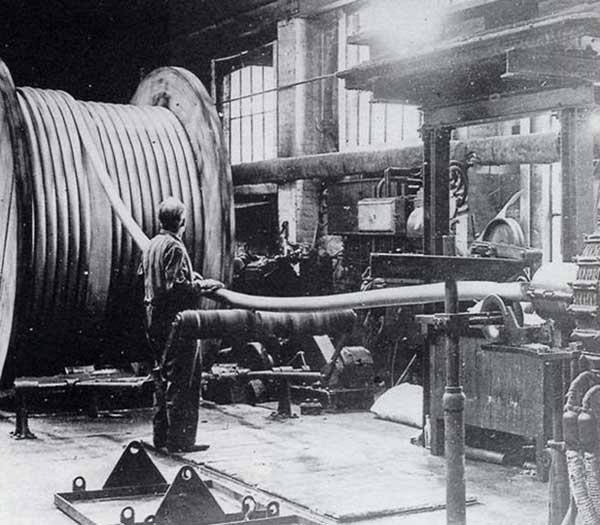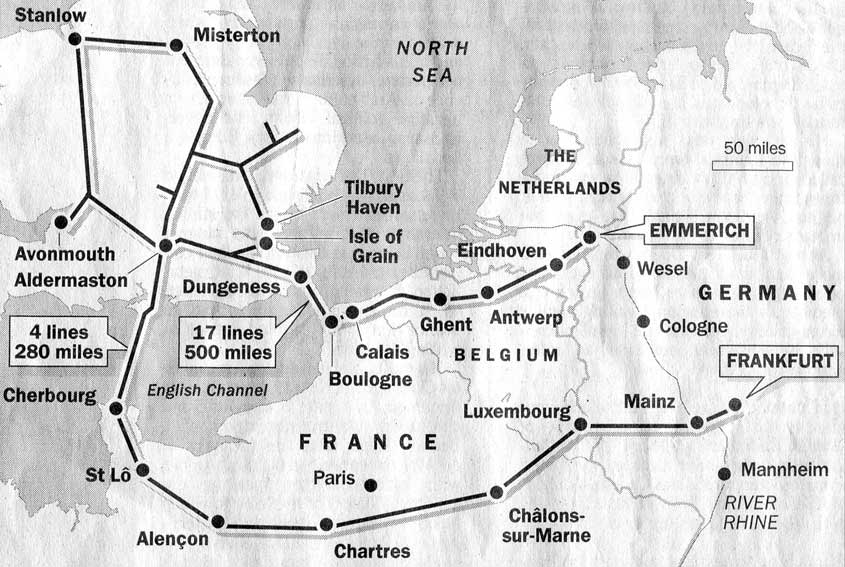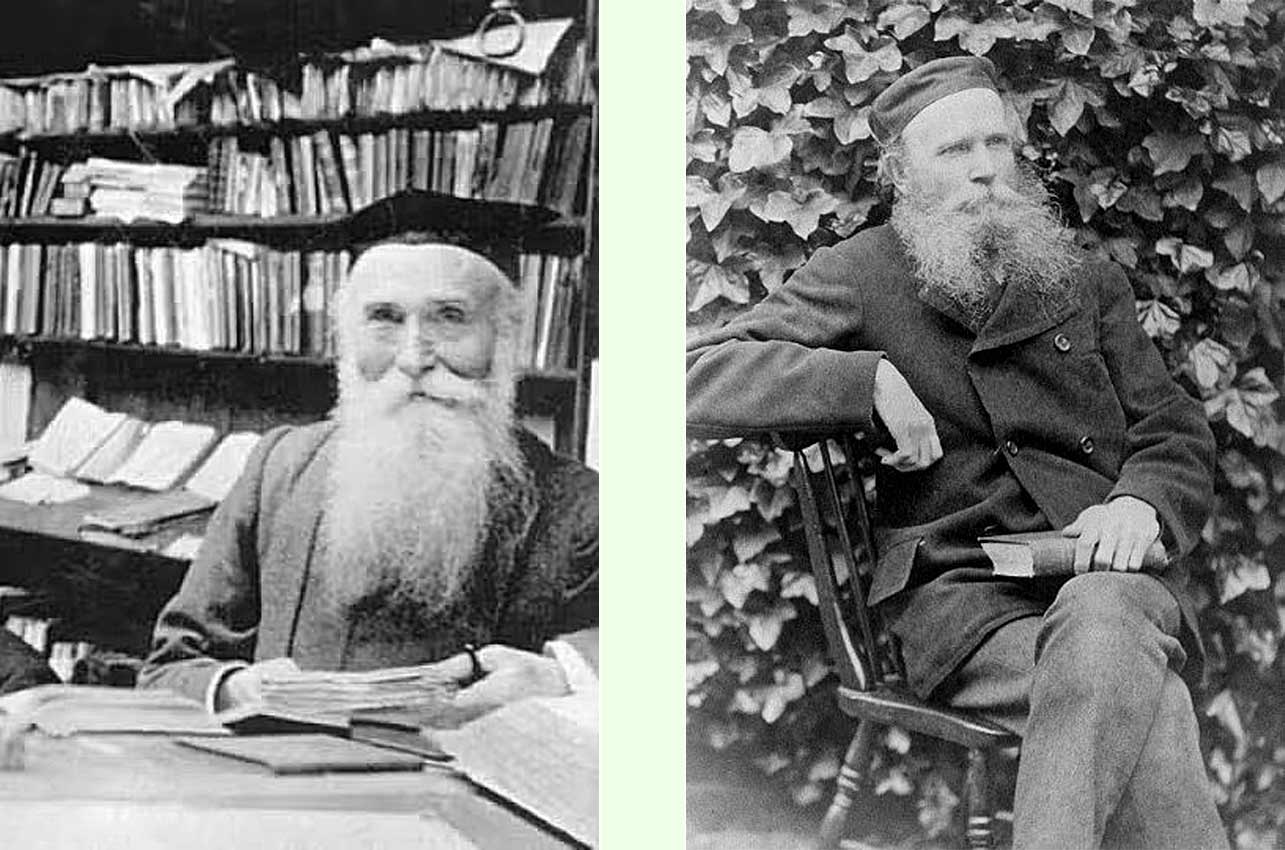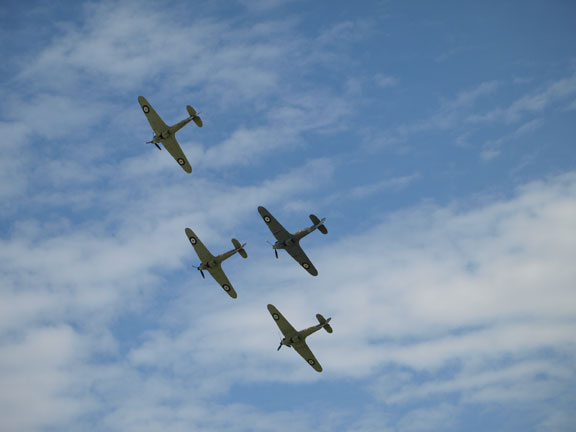
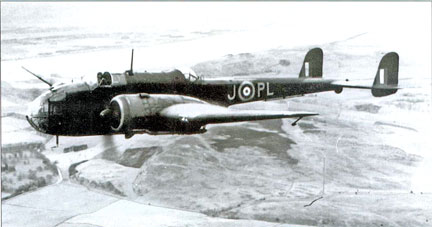
Previously in Readers Write...
Readers Write #1 March 09
News
from the author, now and then.
Readers Write #2 May 09
Robbery in the Library, Gender Confusion, and a Dog Named 'Moggy'.
Listen, I just write the books. Who knows where they end up? I've
had mail from Norwegians on oil platforms, and from a pilot who
flies jumbos for a South Pacific airline, and from Jim in Alberta
where it's often 30 or 40 below. I'm told the U.S. Marines in
Iraq enjoy my WW2 desert story, A Good Clean Fight.
Nothing surprises me, not even the email from Tim in Australia that
began: "The first book I stole was
Piece of Cake." He
nicked it from the school library when he was 16. "I probably
read it another six or seven times before it fell apart." By then
he was old enough to pay for books, so he bought another copy.
Should have bought two, and given the other to the library.
These thoughts are prompted by the steady stream of letters (and
cheques or PayPal requests) that followed
Nicholas
Lezard's corker of a review of
Hullo Russia, Goodbye England
in The Guardian a couple of weeks ago. David in Maryland ordered a copy
and wrote that he came across Goshawk
Squadron over 35 years ago and still re-reads it, along with other
yarns of mine. Helen in Dublin said she 'enjoyed' my writing,
then thought that 'appreciated' was a better word, and finally upgraded
that to 'enthralled'. W.B.T. in Southampton has read and re-read all my
books, and (he says) so has his wife, which is pleasing.
Paul in Dublin ranks me as "one of 3 or 4 authors all of whose work I
own"; and Matt in London "recently read
Goshawk Squadron on my
honeymoon and absolutely loved it." (Let's hope that marks the
start of a long relationship.) And many more
letters, saying more of the same, including the nice lady in
Wales who addressed me as 'Dear Sir or Madam'.
Readers Write #3 June 09
Thomas Keneally
is a very good researcher, By chance, he met the owner of a Californian
leather-goods shop who was one of the Polish Jews rescued from the
German death camps by Oskar Schindler. After that, Keneally worked hard
to find the facts that became
Schindler's Ark, which became the film Schindler's List. He
could have written another Holocaust history. Instead, he wrote his
book as fiction - not because he wasn't sure of the truth, but because
he didn't want it to end up on the packed shelves of Holocaust volumes.
Keneally wanted his story to be read by people who never look at World
War Two histories. And he succeeded.
I think I know how he feels. I parted company with one publisher
because my fiction always ended up in the Military History section of
the shop. That wasn't why I wrote it. I wrote it for the Keneally
reason, so that people might get an idea of what war is like at the
sharp end. Not the daily scores in, say, air combat in the desert war
(which is how military historians tend to see the battle) but how a
fighter squadron lives, kills and dies in the sand, flies and blood of
the Western Desert. A Good Clean Fight is good history; I
researched it thoroughly. But it takes you where the military histories
never go. I hope that's true of all my flying stuff.
Including the latest, Hullo Russia, Goodbye England. I've had
some feedback from former Vulcan pilots and groundcrew. Chris in London
flew Vulcans and said: "It was a good read, and took me back." Brad in
Lincoln said, "Have just finished it. Grand read!" Having been
front-line ground crew for 15 years, he noticed a couple of places
where I slightly bent the truth - for instance, each Vulcan airbase was
either a Blue Steel or a bomb station, but not both. My mistake.
And here's another detail I might have included: "There is no mention
of the dreaded P Tube, a rubber bladder with a fitted chrome receptacle
into which you could pee, if you really had to. After a sortie, each
crew member emptied their own, normally at the side of the Crew Chief's
hut on the pan." I suspect that's the kind of info my readers like to
know. Some people thought Baggy Bletchley bought it in a portable loo
at the end of Piece of Cake, and were pleasantly surprised to
meet him again in Hullo Russia. He survived
Cake, and A Good Clean Fight; he may surface again.
I was happy that Brad confirmed the problems of arming a Vulcan with
the Blue Steel missile. The fuel (HTP) was so toxic that any groundcrew
splashed with it had to dive into a nearby plunge bath instantly, or
his clothing caught fire. And loading the missile meant 230 gold studs
(the Butt Connector) made perfect contact; if not, download and start
again. An exercise involving Blue Steel began hours before take-off. A
far cry from the famous 'four-minute warning' of an attack.
Peter, a former Vulcan captain now in France, got the book and
wrote: "I sat in a deckchair at the week-end and I pretty much read it
straight through. I think that says a great deal, and I found it a good
read. The story perhaps stretched the imagination a little in some
areas. Certainly our hero Silk could not have been disposed of quite so
quickly." Well, endings are often the most difficult part. Peter adds
that he joined the Vulcan OCU eight years after Silk. By then, the
aircraft was a truly low-level machine, Blue Steel had long gone, and
so had the WW2 veterans in the aircrew. (Maybe some of the mindset of
those who had bombed German cities went with them.) But Peter also read
Piece of Cake. "I think you have caught the repartee and banter
of aircrew magnificently," he says. "My first Vulcan squadron used the
Snow White party trick." (That's the one with everyone in line astern,
marching on their knees, arms folded, singing 'Hey Ho!' - it's in Cake,
page 75.) "With 55 aircrew on the squadron, there were sometimes more
than seven dwarfs!"
Thanks to all who wrote. And welcome to several public libraries who have bought copies, including Enfield (in London), Hartlepool, North Yorkshire, Dorset and Wrexham. Glad to have you on board.
No Guinness in Mongolia, a shrink's view of Silko, and "Jag tycker om det," in spades.
Amazing
how many people steal books, especially books by me. I've heard from
honest,
upright citizens who wouldn't think of cheating on the golf course, but
who
admit that they stole a copy of 'Piece of Cake' or 'Damned Good
Show'. Often it was the school or college library
that was plundered. That's how Jan in
Am I?
Aren't most
authors? Before I wrote 'Goshawk
Squadron', for instance, I worked hard on the research, and learned all
I could
about what the R.F.C. was doing in
Okay.
Now for something brighter, as they don't say on TV
news. Imagination. I
use it all the time. How it works, beats
me. I'm just grateful.
Take a story of mine called 'Kentucky Blues'. It's about a small,
not-too-bright town called
That
episode came
partly from my imagination and largely from my experience when I was
playing
for the Manhattan Rugby Club in
Quick
round-up of some readers' messages. Ron in Walthomstow
found 'Hullo
************************************************************************************
Readers Write #6 October 09
Heroics,
Tin Pan Alley, and a First from
Someone remarked
that there are no heroes in my books.
Plenty of courage, no lack of sacrifice, a lot of death. But
heroes?
The word itself has been done to death.
I was in New York when US soldiers, marines and airmen returned from
the First Gulf War, nearly twenty years ago, and they got a
tickertape
reception. New Yorkers called them all
'heroes', and many servicemen looked uncomfortable with the
label. In any army, for every frontline fighting man
there are six or seven or even ten men behind
him, providing support. Cooks,
medics, dentists, truck drivers, guys organising supplies, keeping
records,
sending signals. All doing essential
jobs, but are they all heroes? When
everyone is heroic, the word has lost all meaning. Let's save it
for those who truly deserve
it.
Moving on: I've always believed
that a good writer can
write convincingly in any style that's needed
- tabloid journalism, song lyrics,
boring bureaucratic jargon,
whatever. I'm sometimes disappointed by
crime novelists who include chunks of newspaper
reporting for the sake of plot.
They've obviously never worked on a paper. When I wrote 'The
Eldorado
Network' -
which is
about a double agent reporting allegedly secret info -
his style often had to be boring in order to be convincing. The facts seemed more exciting because the
writing was so dull. I worked hard on
that, just as I did in 'A Good Clean
Fight' where I wanted to quote the lyrics of a certain popular song. (Good contrast with the bleak
When you don't care...
I'm bound in iron bands.
When you don't care...
I'm lost in desert sands.
In this wilderness, with none but you to guide me,
I'm in heaven with your tenderness beside me...
And if you think any
fool could have written that, just try
writing the next verse. But don't steal my
words. They're my copyright now.
Fresh insights from
readers' messages. Anthony in London
bought 'Hullo Russia...' and mentions what a pleasure it is "to find a
novelist who is able to produce books that you can't put down - I
finished 'Piece of Cake' in a few days and felt totally wrung out
by the sense
of tension and fatigue you managed to sustain..." By
contrast, a different reaction from John,
somewhere in
And Richard in
Readers Write #7 November 09
Viewers are
smart, readers are far-flung,
The television adaptation of Piece of Cake still attracts questions. (It was first shown in 1988, so if you're under 25, ask your parents.) All five hour-long episodes are now available on DVD, at what strikes me (and I can be impartial because I sold the rights and so I don't make a penny from the DVD) as a very low price. If you can't find it locally, try Ian Allan Publishing - that's where I bought mine. For a drama, the TV showing pulled in a big audience. I think the final episode attracted 13 million viewers in the UK, and LWT sold the series around the world. In the US it went out on Mobil Masterpiece Theatre, a much respected viewing slot. And don't tell me they spell it 'Theater' over there. Mobil called it 'Theatre', and I have the poster to prove it.
Tim in Victoria, Australia was 12 at the time, watched Cake with his Mum, bet her that Moggy would survive, "which of course ultimately resulted in my having to make both our beds for a week." This throws an interesting light on the novel and one reason why I think it keeps on getting re-read (and re-shown): it's the unpredictable nature of events. A good story should surprise. I set out to tell the events of the Phoney War, the Battle for France and the Battle of Britain, just as they might have happened to one RAF fighter squadron. All the research I did (and that was a lot) confirmed one thing: many pilots got killed, some in battle, some not, some by inexperience, some by sheer bad luck. Flying was risky in those days. On a typical fighter squadron, of those pilots who had begun the war, most would not be flying a year later. Sometimes none.
This is the unpredictable element that keeps Piece of Cake on edge. When the television series was being cast, I was pleased to see that I recognised hardly any names. Viewers are smart. They know that the star they meet in episode one is not going to be killed in episode two or three, and probably not at all - television has paid that actor a ton of money and it's not going to be wasted. Nearly all the pilots in Piece of Cake were played by young unknown actors. Some became better known later (Jeremy Northam, Nathaniel Parker) and Tom Burlinson had already made a name in Australia but not in Britain. So viewers could never guess who would live and who would die. Tim, aged 12, guessed wrongly, and that both reflected the truth of the war and upheld the dramatic tension of the story. Incidentally, I thought Neil Dudgeon, who played Moggy Cattermole, was excellent. An RAF fighter pilot who actually led a squadron in the Battle of Britain read the book, saw the series, and wrote to me. He had known men like Moggy, and he summed him up very neatly: "Bad for discipline, good for morale - every squadron should have one. Just one."
Other questions I get asked: (1) Did I write the screenplay? No, I didn't. I'd put four hard years into the novel, and I was very happy when Leon Griffiths (who created Minder) wrote the screenplay. (2) The novel says Hurricanes, so why use Spitfires? Very few Hurricanes survived, and none were aerobatic, so it was Spits or nothing. (3) Did I like the TV version? Well, naturally I pefer the book, but it's a long story and if they'd shot the whole of the printed word, the series would never have ended. It's pretty good. The music is haunting. I wish it were on CD.
Back to readers write. Among the more exotic messages have been those from Bernice, who runs Crooked Timber Books in what sounds like a very rugged corner of Nova Scotia; Jarmo in Finland (ordering the RFC trilogy); Anette in Sweden (ditto); plus Karen in Switzerland (Hornet's Sting), Jules in Holland, Charles in Prague and Werner in Vienna (all for Hullo Russia, Goodbye England).
Which prompts two thoughts. First: that I'm lucky to write in English, a global language. When an Egyptian airliner talks to Bulgarian air traffic control, they talk in English. I'm sure Finland is a delightful country, but if I'd been born there, writing in Finnish would not have made my career any easier. And my second thought is that there are translations of my work sitting on my shelves that might make an unusual gift if you have a friend in another country. I have copies of Goshawk Squadron in French (Les Abattoirs du Ciel), in Spanish (Escadrilla Azur), and in Dutch (Het Havik Squadron). There's The Eldorado Network in Spanish (El Spia Dorado) and in Dutch (Het Eldorado Netwerk); and Kramer's War in Finnish (Luutnantti Kramerin Sota) and in what may be Belgian but is probably Dutch (Kramer's Oorlog). I've even got Polish versions of A Good Clean Fight (Pustynny Ogien), and of The Eldorado Network (Siatka Eldorado) and of Artillery of Lies (Artyleria Klamstw). If you're interested, email me and we'll take it from there.
_________________________________________________________________________________________________
Readers Write #8 December 09
Rumblings in Cornwall, the Forgotten War, and three helpings of 'Cake'
I sense a smouldering impatience in Cornwall. K.M.D. of St Ives writes to say how much he's enjoyed my previous books, especially the RFC/RAF trilogies. 'Damned Good Show' meant much to him because his father-in-law was in Bomber Command in WW2, got shot down in a Wellington, spent four years in Stalag Luft III, and then in the 1950s instructed at RAF Finningley, a V-Bomber base. Which is why K.M.D. particularly wanted to read 'Hullo Russia, Goodbye England' - it echoes much of his father-in-law's experience.
But then he adds: "I've been disappointed that there aren't more of your RAF books. After all, there's still a lot of WW2 left for Hornet Squadron after 'A Good Clean Fight', and there's also Korea, Suez etc."
Well, I wish I could oblige. The money would be nice. I see other writers who, year after year, produce a succession of novels that play variations on the same tune, and a small voice inside me says: Why don't you do that? Dick Francis writes a horse-racing novel a year. His fans love him. Write an RAF novel a year and your fans will love you. Why not? And a loud voice inside me says: Because you'll be bored rigid. Even the great Conan Doyle grew to loath Sherlock Holmes and tried to kill him off. His fans wouldn't wear it and Doyle went back to grinding out more variations on a tune that must have made him want to throttle someone. If not Holmes, then Watson. Or Inspector Lestrade. Or Mrs Hudson.. Or, ideally, the whole gang.
I'm not in the grinding-out business. I write novels because I find an idea that strikes me as different, even surprising. I try to write a story that I enjoy - something fresh and unusual, maybe something that upsets what most people think they already know. Every novel is a gamble. I like risk. So I can't do what K.M.D. of St Ives suggests, which is to put Hornet Squadron into Suez or Korea simply because those wars happened. I need an idea as well, a hook to hang the story on.
One of the hooks I found, and used in 'Damned Good Show', is the forgotten war waged by Bomber Command from the outbreak of war to 1941/2. Say 'Bomber Command' to most people and they think of Lancasters flattening German cities. But the Lancs weren't much seen on ops until mid-1942, and not in large numbers until 1943. Take the Thousand-Bomber Raid on Cologne on 30th May 1942; only 73 Lancs took part in that, as compared with 79 Hampdens, 131 Halifaxes and 602 Wellingtons (plus others). In fact, Bomber Command's first operation was on the very day that war was declared, 3rd September 1939. During the next couple of years, the Command learned how (and how not) to take the battle to the enemy homeland.
So I was very pleased to hear from someone who was there at the start. Lawrence Wheatley in Bude, Cornwall. He qualified as an Air Observer (soon to be renamed Navigator) in summer 1939, and joined 'B' Flight of 144 Squadron. The squadron flew Hampdens, a compact twin-engine bomber that plays a big part in 'Damned Good Show'. Lawrence suffered from chronic air-sickness and was grounded by the medics, which almost certainly saved his life, because on 29 September 1939 'B' Flight was searching for targets north of Heligoland and ran into German fighters. All five Hampdens were shot down. Soon people were calling it the 'Phoney War'. It was real enough for the RAF. Throughout WW2, Bomber Command losses were heavy. Of the 48 men who completed Lawrence's Air Observer course, 28 died in action or in flying accidents.
Lawrence said he's enjoying D.G.S., "though slightly disappointed" that it's centred on the officers "and little is said about the Sergeants' Mess where the majority of the crew would live." It's a fair point. My problem was numbers. I told the story through the pilots, who were usually officers. That involved a dozen (or more) characters. If I had included the Sergeants' Mess too, it would have doubled the cast. That would be more than I, or most readers, could handle.
Meanwhile, my other flying stories have been prompting some mail. Bob in Ottery St. Mary flew Canberras and Buccaneers (both types were capable of carrying nuclear weapons) and he writes: "I don't know how you do it, but the atmosphere and the characters on the squadrons I've served on are often reflected in your books." Steve in Nottingham, having just read 'Hullo Russia, Goodbye England', says: "The flying descriptions - absolutely brilliant. I presume you leaned on some former pilots to get that right." Well, I certainly had my stuff doublechecked for accuracy, but in essence it all came out of what's left of my mind. Chris in the Borders "liked HRGE immensely. You have a way with character dialogue that, in my opinion, is second to none....Also the story had me from the start; these are characters that I may not necessarily care about, but I revel in their ups and downs, and ultimately they mostly win me over by the end; including Luis Cabrillo from 'The Eldorado Network' trilogy..." (It's actually a quartet, with the new book 'Operation Bamboozle', which Chris bought.) Jonathan in Basingstoke is now on his third copy of 'Piece of Cake', having worn out the other two: "Still an old favourite that I revisit every few years....and it has the rare gift of giving something different every time." While Susan of Colchester bought HRGE and 'Hornet's Sting' as a Christmas gift for her husband, "a devotee of your writing"; and when Richard in Kent got his copy of 'Operation Bamboozle', he was "really chuffed to have a shelf full of your produce." And I'm chuffed too.
***********************************************************************************************
Readers Write #9 February 2010
Barrel-rolling a Boeing, our forgetful MPs, and a nice line in scams.
For the filming of Piece of Cake, the Spitfires were flown by professionals, and they took it seriously, which is understandable when (a) the aeroplane was worth half a million pounds (more now), and (b) it was irreplaceable, and (c) your life depended on it.
Nevertheless, I remember a day when the weather was too gloomy for filming, and one pilot got very bored with hanging around. When the cloud-level lifted the light was still poor, but he was itching to fly, and so he took off and threw his Spit around for ten minutes. Just for fun. No charge on the producers. But the pilot got a big charge out of it.
I mention this because I imagine that inside every commercial pilot is the ghost of a fighter pilot who sometimes looks at his Airbus or his Boeing and wonders what it would be be like to perform a sweet barrel roll, or play leapfrog with the clouds. Just for fun. Then the fighter pilot gets firmly put back in his box and the pro pilot returns to another day in the cockpit. Or, as many call it, the office.
Maybe that explains why quite a few working pilots like to read my stuff. Rowland in New South Wales spent eight years flying in police helicopters, and he read his paperback Piece of Cake so often that it fell apart. He says: "Many of my vintage aircrew read it in our many and lengthy downtimes. We read parts of it to each other across the crewroom, office and hangar floor...Good memories." (He's now bought a hardback copy from me.) "A sincere thank you for the many hours of enjoyment Piece of Cake brought to very bored aircrew waiting for the telephone to ring." Robert in Cologne is another pilot (he's with Lufthansa) who keeps returning to Cake (now on his sixth reading). "For me, it is maybe the best book about flying fighters I have ever read," he writes, "apart from being a very good book." And he adds something it's always good to hear from a pro pilot: "You got the flying scenes right - and I'm very sensitive when it comes to that." But it's the humour and the characters that keep drawing him back: "I just read the part where Squadron Leader Rex elaborates on fighter tactics in October '39 - with Reilly (his dog) yawning and wandering away. That is so good." Dogs often make useful contributions in my books. My wife reckons that Othello, the elderly basset hound in Operation Bamboozle, has the best lines. Nobody hears him, of course, but he knows what he thinks.
Moving on: Gordon in Suffolk worked for Rolls-Royce engines until recently. He enjoyed Hullo Russia, Goodbye England, and he's not the first to tell me he's "absolutely appalled that you could not find a publisher. If you can't get this type of book published, who can?" It's a mystery to me too, but commercial publishers go their own sweet way, which is why I self-publish my stuff. Gordon, having found my website, says: "It was like discovering a treasure trove of undiscovered goodies." (He meant the books, not my author's photograph, which a friend said looks like a benevolent Balkans dictator. That's what friends are for.) Gordon passes on a story he was told by a veteran aerospace journalist who went to a reception given by a defence manufacturer. Many youngish MPs were there. The journo remarked to them that it was marvellous to see the Vulcan, greatest of all V-bombers, flying again. Blank looks. 'V-bombers....Vulcan, Victor, Valiant...Cold War... nuclear deterrent in the 1960s...' More blank looks. Gordon quotes Alan Bennett: "There is nowhere more distant than the recent past." Too true. It's one reason why I wrote HRGE. People forget. Even things like the motto of the nuclear powers - Mutual Assured Destruction - can slip their mind.
Readers continue to intrigue me by their sheer stamina. David in Barnes SW13 reckons he's read "just about every one of your books at least 5 times (beginning with Goshawk Squadron) and I have now recruited my present wife, my ex-wife, my two brothers, my daughter, her husband and soon, I hope, their two boys." To which, with the Cake DVD, he's just hooked his son-in-law. Truly amazing. John, somewhere in Oz, is reading Damned Good Show for the fourth time, and - because his dad flew in them - would like me to write about the dangerous, low-level work of four-engine Halifaxes dropping supplies to partisans in Italy, Jugoslavia, even Poland. Very hairy ops. And Peter in Ontario got a kick out of reading A Good Clean Fight, since his dad flew Kittyhawks with the Desert Air Force, went on to fly Spits in Johnson's Canadian wing at D-Day, and survived the war. Peter ("I'm a big fan") bought Hornet's Sting, Op Bam and Hullo Russia. Then Karen in Switzerland, having just read War Story and Hornet's Sting, says: "I loved both and 'missed' reading them when finished." She's always been interested in vintage aeroplanes and in photography (she sent me some fine airborne** shots taken at Old Warden, especially one of the Bristol Fighter), and her partner is a retired pilot. Add her interest in the history of both World Wars and (she says) "You managed to tick all the boxes that make the perfect book for me. I adored all the characters and found myself completely absorbed by the pilot psyche of the day." Lastly, Stephen in Nottingham "enjoyed Bamboozle, which managed to combine a page-turning plot with some lovely period detail (as ever), and a nice line in scams." He then raises an unusual point. In Cake, he says, I supply the background to every main character - except Moggy Cattermole. Stephen wants to know more about him. I'll give it some serious thought.
** If you would like to see Karen's pictures, Click HereReaders Write #10 March 2010
Humour can be more dangerous than gunpowder. With gunpowder, you get a choice of two: either it explodes or it fails. With humour, the choice may be three. Ideally, people laugh. But some people may not see the point. When that happens, the silence is deafening. And yet others may find the alleged humour so unfunny that, for them, it backfires. It offends them. This is the risk you take, because there is no such thing as a joke that cannot upset somebody, somewhere. So humour is a gamble. Ask any stand-up comic. He'll tell you of nights when he had to fight the audience to make them laugh. Other nights, they would laugh no matter what he said, even if it was "Corrugated iron". Humour is a battlefield.
Maybe that's why it's such a big ingredient in
my books. I write about battlefields (some of them in the sky) and
humour keeps
cropping up, even in the most desperate situations. It might be gallows
humour. In my first novel, Goshawk Squadron, a very
young
fighter pilot is so twitchy about going on patrol that he can't face
his
porridge at breakfast. Woolley, the CO, comes in. "Are you going
to
eat that,
Richard
Briers ('The Good Life') is one
of the best comic actors in
"My
fave is A Good Clean Fight,"
he writes. "Such vivid imagery!" He's a Flight Lieutenant,
RAAF, an Air Traffic Controller and amateur pilot, and his Aussie
grandfather fought tank battles in the Desert War (where AGCF takes
place), so it's no surprise that the book rang bells for
him. But
what strikes him especially is the humour. "Your wicked satire
style
is contagious, and I must control myself when dealing with difficult
people for
weeks after reading one of your books, lest I drop slightly too barbed
comments
in response to their 'unhelpfulness'."
Cut
to
Last
month I promised Stephen in
**************************************************************************************************
Readers Write #11 May 2010
Risky Hits, Inedible Cakes, and the shock of Woolley's Twin Brother
When
he was being interviewed on television, Stephen Sondheim remarked that,
at the
opening of
West Side Story on Broadway, many of the audience walked
out. The
show wasn't what they expected. Their idea of a good musical was lots
of easy
laughs, gorgeous girls, and songs you could whistle on the way home. West Side Story,
by contrast, was about love and hate between street gangs, and it
changed for
ever the way musicals were written. Sondheim (lyrics) and Leonard
Bernstein
(music) - with some help from Shakespeare -
wanted to
stretch their talents and challenge the audience's expectations.
They
wanted to move on, to create something fresh and new and surprising.
This
is satisfying but dangerous. Bizet's Carmen was fresh and new and
it got
panned by the critics. When Stravinsky's Rite of Spring was first
performed in
This
knowledge only goes to boost my respect for those big-hearted
readers who strongly recommend my stuff to their children, wives,
ex-wives,
working colleagues, neighbours, librarians, and someone they met in a
bar.
Peter, in
Some of the
emails I get rank me so highly amongst the Great Writers of
the World that I haven't the nerve to repeat them here. But Alan of W5
simply
says, "Big fan - keep doing it!" while D.E.W. in
The obit ran
in The Guardian on
22 March 1995 and it was
written by Christopher MacLehose (by far the best editor I ever
had). It
was for Edmund Fisher, a brilliant figure in the publishing world,
described as
"fabulously intolerant of dead wood" and "militantly
unpompous" and "a severe trial to his corporate masters".
MacLehose also detected "an inadvertent likeness in him to Major
Woolley,
the RFC commander in Goshawk
Squadron by
Derek Robinson whom Edmund later published (and what a terrifying
airman he
would have made): a brave, passionate, rebarbative officer,
always
seeking out the best in his men, a tireless inspiration to them, always
minding
about winning, having a huge appetite for combat, insufferable to his
superiors, a rattler of cages, a hater of pretentiousness and snobbery,
cutter
of swathes, not going to be forgotten."
Certainly not by me. Although he published Goshawk Squadron when he was at Sphere, I never met Edmund. My loss.
Readers Write #12 June 2010
Shot down by Rex, Lambs into Tigers
in
Some
actors say they get inside the skin of the characters they're playing
by first
mastering the way that character walks. I knew an actor like
that,
normally a charming chap but he couldn't get out of character during
the run of
the play; and sometimes that was rough on the family, especially when
he was
cast as a crude and selfish oaf. Every morning he would lurch
downstairs, slump
into a chair, curse the cat and demand a mug of tea in a voice made of
gravel.
Not easy to live with.
Actors live the part. When the TV series of Piece of Cake was
being
filmed on location, Tim Woodward - a pacifist in his
younger
years - played Rex, the squadron CO, a hard, ambitious and
arrogant
man. During a break in the filming I unexpectedly met Rex, in
uniform,
still looking hard, ambitious and arrogant. For a second, my
right arm
wanted to salute him. (I'd done my National Service, and you can take
the boy
out of the RAF but you can never take the RAF out of the boy.)
Woodward, as
Rex, looked right through me. Quite right. He was a squadron leader. I
was an
erk.
With authors, it's often names that help to create the character.
Rex was
perfect for the CO (we never know his first name). Before I could
begin Goshawk
Squadron I thought a lot about that CO's name, and until I
settled on
And
then there's Moggy Cattermole. I named him because he's lanky,
and it
helps if tall characters have long names. I knew someone at
school called
Cattermole, always nicknamed Moggy, and the combination seemed right
for
someone who is - as a
Which leads me to the Luis Cabrillo books, not so much lamb-into-tiger
as the
saga of Tell 'Em What They Want To Hear. It began with The Eldorado
Network,
inspired by the feats of a real double agent in WW2, codenamed Garbo.
He was
born in
Enter a man who sees the true worth of Luis. Graham Thorne, of
"I
loved the classic Robinson opening paragraph, which brought me straight
into
the plot and made me want to know immediately what was going on. I also
loved
the headlong twists and turns of the plot and the fact that, for ages,
I could
not figure out what on earth the map on the cover had to do with the
book I was
reading.
The
rapid-fire and amoral style in which the book is written seems to me to
capture
perfectly what it would be like to know, and live with, Luis Cabrillo.
He has
immense charm and wit but also that whiff of danger - and
borderline lunacy - that makes us ordinary readers secretly
glad to
know him from a distance.
It
was
a joy to meet the gorgeous Stevie Fantoni again and a privilege to be
introduced to the Princess Chuckling Stream. Among the superb
supporting cast
of hoods and enforcers, I particularly liked the psychotic Vito
DiLazzari. He is the classic, indulged son of the tyrant,
over-educated,
so that he knows too much for his hereditary role -
Fox
instead of Hedgehog.
So
where now for Conroy and Cabrillo? I hope we hear more of them. For, as
Luis
gets older and that little bit slower, and as the world gets more
conformist
with less room for the maverick, then life for Luis will get steadily
tougher. Like a late Western, there is a great book to be written
about a
man running out of room, and Derek Robinson is the man to do it."
Well, time will tell. Are con artists an endangered
species? Recently,
an unemployed lorry-driver conned a property developer out of £1
million by
persuading him that the Savoy Hotel in
So: thanks to Graham, and to far-flung readers who recently asked for books - Anders in Sweden, David in Malaysia, Matt in Wisconsin, Fred in Virginia, Christopher in Spain, Lars in Denmark, Blair in Minneapolis, and many more.
Readers Write #14 September 2010
Readers Write #15 October 2010
Snoopy dies again, A quartet of Hurricanes, And never enough Cake.

Readers Write #16 December 2010
Caesar's slave rides again, Exploring the Canadian military, and a double whammy from the US.
Hanging on the wall of my bathroom is a message I got in the mail when the series based on Piece of Cake was on television. I got quite a bit of hate mail then, but this one was a classic, being not only anonymous but also written in crayon and all in capitals. It said:HAVE YOU EVER CONSIDERED TAKING UP MORE SUITABLE EMPLOYMENT?
LIKE BEING A BROTHEL DOORMAN.
TROUBLE IS, YOU MIGHT HAVE DIFFICULTY IN FINDING SOMEONE TO GIVE YOU A REFERENCE.
HANG ABOUT, THOUGH - HOW ABOUT A TELEVISION PRODUCER!!!
Not too subtle, perhaps, but I couldn't fault the writer for spelling or grammar, although a good editor might have queried the triple exclamation marks. I keep it on the wall for much the same reason that Roman emperors who were making a triumphal procession used to keep a slave standing behind them whose job was to whisper: 'Remember, Caesar, you are mortal.' In my case, the warning is: 'Remember, Robinson, some of the punters out there think your stuff is crap.'
And that's their
privilege. In the long run it's readers,
not authors, who decide whether or not a book makes the grade. I
mention this
because I get some very generous emails which may not be statistically
representative. Kieran in Buckinghamshire reckons that the RFC
trilogy is
'without doubt the best aerial combat books I have ever read'. From
Chris in
All that is on the plus side. I don't hear from readers who throw my book at the cat, say it's unreadable, and go down the pub instead. I don't hear from them because they're not going to waste a stamp on me, but I'm sure they exist. They probably won't read this, which is a pity because Chris Buckham, who is a major in the Canadian Armed Forces, found depths in the novels that surprised even me. He recommends that Junior Air Force Officers under his command should read them, and his analysis of Piece of Cake tells why:
'Dark humour underscores a theme throughout that speaks to the individual character's means of dealing with the realities of war. The strength of the book lies in its development of its characters and its insights into the human psyche. The Commanding Officers and Flight Commanders struggle with the changes that war brings in their relationships within the Squadron between themselves and the young line pilots. Conversely, the line pilots struggle themselves as they grapple with the deadliness of their chosen profession. Leadership strengths and weaknesses make themselves felt more keenly and shortfalls are quickly tolerated less or are forgiven. This novel captures the essence of the effects of combat on unit cohesion and command. It is stark and uncomfortable but it highlights lessons that are best learned and understood before the guns start firing.'
Which - as Chris points out - unfortunately doesn't always happen.
Finally, a double
whammy of praise in another unsuspected
place. John Sandford is an American novelist, much read on both
sides of
the
'The day was a nice one, the beginning of warmer weather, and the college girls were coming out of their winter cocoons, walking along with their form-fitting jeans and soft breast-clinging tops.
Excellent.
Maybe get a novel, Jake thought: he'd just read the first of a series of novels about British fliers during World War 1, by Derek Robinson, and was anxious to get another. And, of course, university bookstores were the most likely place to find his own books; like most authors, he always checked.'
(True. Jake finds a couple of his own books 'in what he thought was an obscure location', so he quietly reshelves them in a better spot. He also buys a copy of Goshawk Squadron.)
'With a sense of satisfaction, he walked across the street, got a bagel with cream cheese and sat on a bench in the sun and started reading about the Goshawks.'
Thanks, John. Always nice to get an unsolicited testimonial from someone in the same line of work.
********************************************************************************************
Readers Write #17 January 2011
Bristle with pride, The wide blue yonder in deepest Texas, and hilarity from Surrey to Florida.
Back in the days
when I was fairly broke, I came up with a
spoof glossary of the
dialect in my home town,
Krek
Waiter's
spawned half a dozen sequels. Today,
forty years on, it's still in print; and
if I'm known for anything in
Which reminded me
of what happened ten years ago, when the
British Society of Paediatric Gastroenterologists, Hepatologists and
Nutritionists met in
Life is full of
surprises. I had heard that copies of A Good
Clean Fight, my SAS and RAF novel set in North Africa, found their
way to
US Marines serving in
A different kind of
surprise came from Joe in Austin, Texas, who
- having read most of my
books -
was "excited to find your website" and decided to
download Hullo Russia from
Audible,
who supply Books On Tape. ("
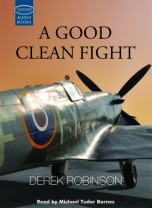
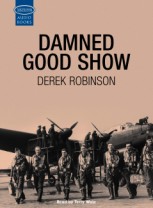
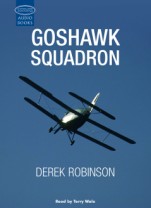
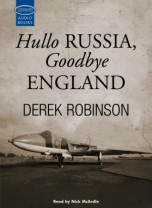
Candidates for my Mile High Club keep appearing. Steve in Surrey, buying Red Rag Blues, says: "I've never read a book that even comes close to captivating me like yours do... I make a point of reading Piece of Cake at least once a year." And to prove it, he did something calculated to turn heads: "I laughed out loud on the train to work when I got to the point where Sticky reads out the cricket scores from the French radio truck." And there is similar laugh-aloud evidence from Edgewater, Florida, where Loraine writes that I'm her husband's favourite author, and she says, "I can always tell by the way he laughs that it is one of your books he's reading." (She bought Operation Bamboozle for him.) Alan in Wellington, New Zealand, bought Hullo Russia, having "recently done a mammoth re-read of all the RFC/RAF books and I loved them all over again." Penny,in Hertfordshire, a "big fan", wanted Hornet's Sting to complete her collection. And John in Portland, Oregon ("enjoyed many of your books very much") did the same.
--------------------------------------------------------------------------------------------------------------------------------------
Hornets in Yonkers, Hilarity and brutality in New Zealand, and Robinson-mania in the Netherlands.
You
may remember the report from a fan, deep in the American West, who
bought a springer spaniel pup, or it might have been a fox terrier, and
christened it 'Moggy', as a way of preserving the memory of that other
maverick creature, Flying Officer Moggy Cattermole in Piece of Cake.
(His girlfriend renamed the pooch to something she could shout in the
park without feeling embarrassed. Trapper, I think. Or
maybe Fang.
Now I hear from Jane, on
America's East Coast. She may qualify for my Double-Digit Club,
having read Goshawk Squadron
many times, and she adapts Woolley's
line: "Ah, bloody (insert name). I hate the bastard" when
she encounters bad drivers in up-State New York - and she
immediately feels better. Which just goes to show that fiction can be
powerful therapy.
More evidence of this from
an old friend, John Walsh (who actually lives in up-State New York).
He's teaching inner-city kids the basics of aviation by helping them
build model airplanes. As a way of developing a group allegiance, he
suggested they adopt a name, and so a dozen kids in Yonkers "call
themselves (very loud and very proud, by the way) Hornet
Squadron!". John is currently deep into my yarn of Hornet
Squadron, A Good Clean Fight,
for the third time. The book went with
him all through the second Iraq war and back, so it's no surprise that
the cover has fallen off.
Meanwhile, Tony in Nuneaton
put another of mine through its paces. He writes: "My copy of Kentucky
Blues has now been read by the whole family, including my
84-year-old
mother-in-law, who loved it as much as I did!" He bought copies
of Damned Good Show and Hullo Russia, Goodbye England. He
builds and
flies radio-controlled models and - perhaps inspired by
Goshawk Squadron -
decided to build an SE5a. Hendon air
museum let him take a close look at their RFC replicas. His
reaction: "Apart from the craftsmanship of it and all the other
aircraft, my overriding impression was of their frailty. Little
wonder the numbers shot down were far outweighed by accidents,
equipment failure and training." Too true. An excellent book on the
RFC, The First of the Few by Denis Winter (Allen Lane 1982) quotes the
official total of casualties at the end of the war: of 14,166 dead
pilots, 8,000 had died while training in the UK. No dual control
in those days. You were on your own, the first time you took
off. All too often it was your last.
They were young (18
or 19 was not uncommon) and the young laugh easily. So there was
humour to be found in every squadron - or, as Alan in New
Zealand sums up my war novels, "hilarious and brutal". Alan writes for
the Journal of the Wellington Science Fiction Society, but he casts his
net widely and it takes in non-sci-fi books as well. He's read
everything I've published and his review in the Journal of Hullo
Russia, Goodbye England - too long to print here in
full - is on http://tyke.net.nz
(go to 'wot i red' and then
go to February 2011). It's the first novel of mine to be set in a
time that he remembers. He was only a boy, but "I was nevertheless
strongly affected by the almost palpable sense of fear engendered by
the Cuban Missile Crisis. It seemed likely that the world I knew would
not be there when I woke up in the morning. If I woke up in the
morning."
And adds: "The thing that makes a Derek
Robinson novel stand out from all the others that surround it is his
impeccable understanding of history, his extraordinary ability to
re-live it in context through the eyes and minds of the people to whom
it is a contemporary happening, and the sharp, crackling and sometimes
breathtakingly cynical wit of his dialogue and of his observations; a
wit that is often laugh-out-loud funny but which makes you weep inside
even while you are laughing so very hard at the piercing truth of
it. Hullo Russia, Goodbye
England is a genuine tour de force."
Mail
arrives from elsewhere. Martin in SW6 has gone through all my books. He
read Hornet's Sting in the
office, "surreptitiously, almost under the
table" - even the most tolerant of offices might have
raised an eyebrow if he'd read it while completely under the
table. The image of the two Russian flyers in France, "playing
both the piano and poker fast and loose, demanding duels, has
remained with me for 10+ years." Now he's suffering what another
reader called 'withdrawal pains' and he asks urgently for "more needed
for the summer please!!" Well, I'm working on it, and I hope
something will appear in the summer, but - just as
Woolley predicted the war would be over by Christmas but which
Christmas he didn't know - I don't know which summer the
new book will be ready. I had a financial adviser called Lewis,
very good at his job, who used to ask me what I would earn next
year. I always said I hadn't the faintest idea, which caused his
brow to furrow. There are writerly types who crank out a novel a
year, fair weather or foul. If only. Goshawk Squadron took me
about nine months to write. (I was young and didn't know any better.)
Piece of Cake took four
years, and got derailed twice on the way.
Kentucky Blues was an idea
that refused to go away, but it took 25
years to germinate. How long will the new yarn take? As
long as it likes.
Paul in Deal discovered Piece of Cake
"when the children were young and to read half a chapter a night was an
achievement". Now they're off to University and he ordered
Hornet's Sting. Erwin in
Holland is one of my repeat offenders, having
read Cake for the 6th time.
He found a secondhand copy in the UK with
his girlfriend - now his wife - 20 years
ago. He's read all the rest ("wonderful books") and now
asked for Hullo Russia.
So did Joe,
three thousand miles to the west in Ramsey, New Jersey. He sends
thanks for my writing: "It puts me directly in a place in history I
never knew (I'm 30 years old), and is so rich and alive that I can
practically smell aircraft exhaust and fresh cut grass." Go back nearly
four thousand miles to the east, where Stian in Rogoland, Norway. wrote
his master's thesis on WW1 aviation and got "much enjoyment"
from Goshawk Squadron, so he
asked for the prequels, War Story and
Hornet's Sting. He served with the Norwegian Army, and says: "You
describe service culture quite well." Well, the military is the
military wherever you go. Streaking south by ten thousand miles
takes me to Steve in Te Anau, New Zealand. He found the same
satisfaction as Stian: "I'm ex-RAAF, so I could relate to the military
BS between squadron and upper echelon - it still goes on."
Of Goshawk Squadron he says:
"I couldn't put it down, really enjoyed
the banter between pilots and the black humour, interlaced with vivid
dogfight scenes." Zooming up to the USA and Michael in central
Indiana ("currently reading A
Good Clean Fight for the 10th
time") works in community theatre and would like to adapt my RFC
trilogy for the stage. I'm happy to give the project my
blessing.
Finally, how about this...
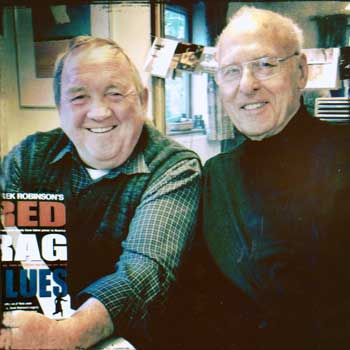
I'm
the guy in the glasses and the slightly worried smile on the right. The
guy with the cheery grin is Bill Hitchings, confident that his camera
is doing its stuff. Bill flew from Melbourne (reading Damned Good Show
on the flight - "just as enthralling" as my other
books) and he dropped in for a cup of tea. Good to
meet him.
----------------------------------------------------------------------------------------------------------
Going where no university dared, Matching Woolley Guinness for Guinness, and the Agony Aunt Flies Again.
What
sort of book is Goshawk Squadron?
One family read it and the
husband thought it was a great adventure, his wife found it a moving
love story, and their teenage son laughed his socks off. I think each
was right - it's a story of young men who fall in love when
they're not fighting for their lives, and make the blackest of jokes if
they survive.
As it was my first novel,
people sometimes ask me why I wrote it. Was it for the combat, or
the romance, or the humour? The answer is all of those and more. I
wrote it for the history. Nobody had written a brutally honest book
about the Royal Flying Corps and I wanted to fill the vacuum. I
wrote it for me, and if anyone else liked it, well, that would be
a bonus. Luckily for me, the bonus happened and Goshawk still
gets readers all over the world.
I realised
the wider truth about that vacuum when I saw a review by David
Aaronovitch of a book called 'Civilisation'
by Niall
Ferguson. One cause of the recent economic disaster, so
Ferguson claimed, was that few bankers knew anything about the 1929
Crash, and he blamed that failure on the last 30 years of
education. Aaronovitch shot that notion down in flames.
When he studied modern history at Oxford 35 years ago, he said, nothing
after 1914 was taught. He got Gladstone but not the Depression.
Same happened to me when I was studying history at Cambridge in the
Fifties. The biggest events of the century, the two World Wars, were
out of bounds. But they had influenced everyone's lives,
including mine, and they were exactly what I wanted to understand.
Later, when I could, I researched them. And wrote some books. My
fiction is based solidly on fact. The stories may be ripping yarns, but
they're also reliable history.
And if a reader prefers the yarn
to history, that's fine by me. Darren in New Zealand writes
that he gets unusual satisfaction from Goshawk. He "acquired a copy
25-odd years ago in a pub in South Wales after a bollox-freezing game
against some feral team from the valleys. I've carted that book around
ever since. To add a bit of realism to the story, every time Woolley
reaches for a Guinness, I do the same." The first chapter
is a bit of a challenge - Woolley sinks a few -
but "after that it's downhill all the way." Amazing.
Equally
impressive are the model-makers. Keith in Leeds bought a copy of
A Good Clean Fight. This
is a sequel to Cake,
and it
follows Fanny Barton and his Hornet Squadron in the Desert War, where
they fly the P40 Tomahawk. Keith plans to build scale models, and
asked my permission to use my initials as squadron recognition letters
on the planes. I'm flattered. And Peter in Nottingham
bought Cake and Hullo Russia, Goodbye England (he
describes himself as
"a complete Vulcan nerd - I've been in the cockpits of six
of the survivors"). He's a semi-pro in the model business
- he's sold a few of his WW2 tanks to film companies
- and, inspired by A Good
Clean Fight, he's not only built models
of the Tomahawk but also photographed them flying low over the
desert. Look closely and you might see the shark's teeth on the
nose. Very convincing.
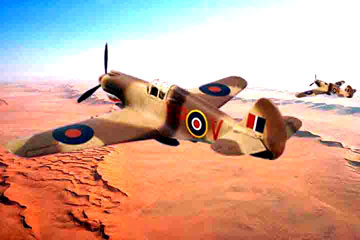
What
next? I'm Stone Age Man when it comes to the more exotic workings
of the Internet, so the doings of Steve in Victoria, Oz, leave me
gasping. He bought Hornet's
Sting (thus completing his
trilogy) and told me that he and a group of like-minded
enthusiasts are "flying Rise of Flight (a WW1 flight sim) over the
Internet". Actually flying? "Check us out on Oceanic Wing ,"
Steve suggested, so I did. These guys recreate
WW1 aircraft (and others) that are so realistic that they can fly
(and fight) them. Astonishing. Their website also has a books
page with some enthusiastic remarks about my stuff, so they're
obviously well-read too.
A quick whizz through
other mail. Christine in Southampton was stumped for something to give
her ex-RAF dad on his 89th birthday, and then found that he'd read my
Damned Good Show and was
"completely blown away by how authentic and
realistic your book is". So she bought him a copy of Cake and one
of Hullo Russia.
Problem solved. Leon in Woking also
bought Hullo Russia,
and added that Cake "remains
for me the
perfect novel in terms of content, pace, characters, dialogue, depth,
everything!" and urges me to keep writing. Well, I do my
best. John in Japan bought an armful of books and asked:
"Why on earth hasn't War Story
been either made into a movie or
televised?" Good question. The movie/TV business is a total
mystery to me too. Howard in Santa Cruz, California, had the
initiative to email my new publisher and tell him that printed editions
of some of my books "are available only in the range of $100" and
he urged him to issue all my stuff as eBooks - which,
in fact, my publisher is now in the middle of setting up.
(100 bucks is a crazy price, brought about simply by the fact that some
books are scarce. At one stage, specialist book dealers were asking
over £200 for a used copy of Hornet's
Sting - which is why
I decided to self-publish it for a fraction of that price.) And finally
Steven, I don't know where, tells me that years ago he bought A Good
Clean Fight, couldn't get into it, threw it down in disgust (too
young
to appreciate it, he thinks), picked it up later and loved
it - especially the relationship between
Schramm and Maria Grandinetti. As a result, he says: "I've always
promised myself, in the event of a lady deciding to 'love me for five
minutes', to take the bull by the horns." Go for it, Steve.
You never know. Five minutes could last a lifetime.
The roller-coaster of books, Shock-horror at MGM, and mobilising the mental juices.
Computers get a bit of
stick nowadays for what they do to
reading and writing - everyone is stuck to the
screen, so
it's said, and nobody writes a real letter any more. But there's
another
angle. The Internet has been good for books (if not for
bookshops). Peter
in Toronto tells me that, 19 years ago, "My father introduced me to Goshawk
Squadron when I was 13" (a round of applause for fathers like
that)
"but I only just started reading your other novels, obtained secondhand
or
over the 'Net, as most seem to be out of print." Too true, but
I'm
leaning on my publisher to revive them. Peter ordered copies of Hornet's
Sting and Hullo
Meanwhile, a longtime fan, David in Malaysia, tipped me off to something my publisher had failed to tell me, which is that their reissue of Piece of Cake and Hullo Russia, Goodbye England has been postponed from this October to next February. There's a reason: the designer we had lined up to create the new covers dropped out and so we're starting from scratch. Book covers are what the Promotion Department needs in order to do their job. One bit of good news: you can now get (if that's your taste) my RFC trilogy (War Story, Hornet's Sting, Goshawk Squadron) as e-books on Amazon/Kindle. Swings and roundabouts. Or snakes and ladders. Maybe ham and eggs. Take your pick.
The moral of the story, I suppose, is to soldier on and hope the good and the bad luck even out. Take the case of the American Hugh Martin, a nice guy and a talented lyricist and composer. He died a few months ago, aged 96. During the Second World War he co-wrote several hits, including a number called The Trolley Song ('Clang, clang, clang went the trolley, Ding, ding, ding went the bell, Zing, zing, zing went my heartstrings. From the moment I saw you, I fell...') which, if you're one of the younger fellahs, you may never have heard. But in 1944 Judy Garland belted it out in the movie Meet Me in St Louis, and it helped make her a star.
Hugh Martin kept
working and in 1957 he had another
hit. Bear in mind that by 1957 the world looked a grim and gloomy
place.
The Korean War had ended in stalemate. Nuclear tests were exploding in
all
parts. The Soviet Union had the first satellites circling the globe,
including
the
Have yourself a merry little Christmas,
It may be your last,
Next year we may all be living in the past.
The studio turned it down flat. Bittersweet and nostalgic they might accept, they said, but not a dirge. Martin got to work and rewrote the last two lines:
Let your heart be light;
Next year all our troubles will be out of sight.
And of course
Martin lived to see his song become as
immortal as anything can be in showbiz. Was he sorry to lose the
lines
which he felt had expressed the world in 1957? Probably.
But he was
a professional. He was in the entertainment business. So am I.
First and
foremost, I write novels that entertain. If they also take the
reader
somewhere he might never otherwise have gone, and make him think
a
little - what the film director Sidnet Lumet
called
"stimulating thought and setting the mental juices flowing
" - well, that's a bonus. Lumet managed it
in
such fine movies as Twelve Angry Men, Network and Dog Day
Afternoon. Whether I manage it is entirely up to the
reader, but I'm
encouraged when I hear from Peter in Portishead (the town, not the
band) who
first read Goshawk Squadron as a boy, "while hunkered
under
the bedclothes with a torch." Since then it's been with him in
the
first Gulf War,
----------------------------------------------------------------------------------------------------------------------------------------------------------------------------------------
Readers Write #21 October 2011
Literary lions stumble, Confessions of an invisible man, And explosions of brilliance in Dublin
Why do writers
write? I ask because Bud, in
And a different
author. I'm not the same scribbler I
was twenty, thirty years ago, and what may seem worth exploring
now was
unknown territory then. As someone once said: How do I know what
I think
until I see what I've said? Except that, in my case, I
often don't
know what I've said until you, the reader, points it out to me.
Every
novel is a gamble, and even the best writers stumble, once in a while.
Robert
Louis Stevenson and P.G.Wodehouse - two names you rarely
see in the
same sentence - each wrote a stinker or two. They
must have
thought the yarns were a good idea at the time. (Nobody sits down
and
thinks: I'll waste a year or two on a real turkey.)
But the
end product was a big mistake. OK, if you insist, I'll tell you
the
titles: Stevenson's Catriona (poor sequel to Kidnapped; David
Balfour falls in love with the childish Catriona who, as Stevenson
admitted, is
"as virginal as billy-ho!") and
Back to the beginning. Why do writers write? Bill, somewhere in the US, came across Piece of Cake in the library of the US Naval Hospital in Portsmouth, Virginia, enjoyed it immensely, cruised through my RFC and RAF series and, he says, "to some modest degree, they shaped the man I am today." He's seen life: after the Navy he became a paramedic and a firefighter. He adds that "Frankly, after my father, you and Bernard Cornwell have been my biggest and most positive role models." I was startled. I take what you said as a compliment, Bill, but I'm not sure I'm comfortable being a role model. After all, I'm the invisible man in the room. I just tell the story and let the reader make what he likes of it. Two characters I've invented - Stanley Woolley in Goshawk Squadron and Moggy Cattermole in Cake - are not the sort of men you'd want your daughter to marry. Yet they score strongly with readers. I don't know where I found them. Sometimes I think the door was left open and they wandered in. That's how Skull arrived in Cake (and other books). They're all lucky accidents. But role models?
It's easy to say why writers don't write. Not for the money. Writing novels is a precarious business. The Inland Revenue taxes me by estimating what it reckons I'll earn next year, which is total guesswork based on what I made last year. Like most freelance writers, my income goes up and down like a roller-coaster, so the Revenue get it wrong as often as right. If you want steady money, I'd recommend a career as a chartered accountant.
What about
fame? It's not much of a reward. It
certainly won't pay for the groceries. A good review in the newspapers
is very
welcome, as long as you remember that it'll wrap tomorrow's fish and
chips.
Fame is fleeting, and so are novels. Nearly all the heavyweight
bestselling authors who dominated the fiction lists when I was a boy
are out of
print now and largely forgotten. Will my stuff be around fifty years
from
now? Do I care? Not much. I'm not writing for posterity (it
never
did me anything for me). And look at what happened to J.M.Synge, who
wrote The
Playboy of the Western World. The play's opening night, in
Synge's crime was
to write a play without Irish
heroes.
Quick round-up of
my mail. Jim in
And Ben, now in his final year at school, having not only read my RFC trilogy but also got his mother and mother to read it - "an achievement of sorts" - is writing a 5,000-word project as an A-Level extension. His subject: Hitler's Operation Sealion and the truth about the role of Fighter Command in the non-invasion of 1940.....a topic I've looked at in my Invasion 1940. Meaty stuff.
-----------------------------------------------------------------------------------------------------------------------------------------------------------------------------------------------------------------------------------------------Readers Write #22 January 2012
Ice cold
in
The Royal Flying Corps is almost a hundred
years old. A reader of my RFC trilogy today is in a comparable position
to
someone in 1912 who was reading about the
Somewhat north of
Perhaps. But if Sealion had sailed in a
flat calm, the Royal Navy was ready and waiting.
Europeans are often so fluent in English
that they put us Brits to shame, and Boris in Frankenburg,
Leap ten thousand miles to the south-east
(which of course is no barrier to the Internet) and Liz in
Now jump another few thousand miles to
From
One thing is definite. I shan't be doing any business in all of February 2012. The shop will be shut while the computer gets thoroughly overhauled, oiled and polished. So - please save your emails for March.
---------------------------------------------------------------------------------------------------------------------------------------------------------A curtain-call for extras, gunplay in the bathroom, and laughing fit to bust
The folk-singer Fred Wedlock, now alas no longer with us, once told me the secret of how to create a statue of a horse. "Get a big block of stone," he said, "and hack off everything that doesn't look like horse." There are days when writing feels like making that statue, except that the chisel is blunt and the mallet has a handle made of rubber.
That's when I
reach for my omnibus edition of Raymond
Chandler's novels, partly for the pleasure of seeing a champion in
action,
partly to remind myself that he had his bad days too, and partly to
remember
that what matters (especially in a crime story) are the extras, the
minor
characters whom Chandler crafted so beautifully. In The Lady
in the
Lake, he has a scene where his private eye Philip Marlowe visits
the
Graysons, a retired couple who can probably provide some
information.
'Grayson was a long stooped yellow-faced man with high shoulders, bristly eyebrows and almost no chin. The upper part of his face meant business. The lower part was just saying goodbye. He wore bifocals and had been gnawing fretfully at the evening paper.'
There is another link.
It goes back to long ago, when Hamish
Hamilton was publishing The Eldorado Network. By good
fortune, Roger
Machell was my editor - and Roger had also been
Raymond
Chandler's editor for his British editions. He told me that one day his
phone
rang and it was Chandler, calling from his home in La Jolla,
California, and
obviously very drunk. "I'm going to shoot myself," he said.
Roger, thinking fast, said, "Don't do that, Raymond. Let's talk about
it..." He heard two loud bangs. Then silence. Roger phoned the La Jolla
police, they hurried over and found
End of anecdote. But
what interested me was that when
Thanks to the Internet,
I get echoes of what I write in
emails from readers all over the globe. Of course praise is
encouraging.
(There is no limit to the flattery an author can absorb.) Bill,
somewhere
in the
John in
Then - surprise, surprise - a letter from Guy, a very old pal (we were at college together, back in the Middle Ages). Recovering from a rather nasty illness, he had time to re-read my flying stories - 'Once again I was totally engrossed among the vivid characters. Their persuasive arguments and caustic banter make them so alive and such good company.' Enter his wife, to give him a copy of my non-fiction book, Invasion. 1940, and he says 'to my astonishment I was so hooked by the reasoning that I finished the whole of it before returning to the interrupted novel.' Well, I worked hard to make that slice of history as readable as any work of fiction, and I'm glad it paid off. Guy spent his National Service on a Motor Torpedo Boat, dashing up and down the Channel, so he has personal knowledge of those hazardous waters.
I'm delighted to hear that Guy's gremlins have been zapped. On the other hand, maybe the Luis Cabrillo quartet should have a health warning on the cover. L.L in New York 'picked up Red Rag Blues, ran across Cabrillo, the Fantonis and Chick Scatola (Mafiosi of varying competence) and began laughing so hard' that he ended up in hospital - although it's only fair to add that he was already suffering from a deep chest cold, so maybe Luis Cabrillo's con-artist doings simply hastened the doctor's decision. Anyway, I sent L.L. a copy of the sequel, Operation Bamboozle and he replied with thanks, saying: 'I look forward to reading BAMBOOZLE with a pacemaker handy.' Both books were fun to write, and I'm glad they're fun to read.
My thanks to all who wrote, and to the many who sent me birthday greetings on Facebook - too many for me to answer. Plugs, Black Eyes, And Other Occupational Hazards
Critics
are readers, too. At least, some are. I've known book
reviewers who, pressed for time, just read the publisher's blurb on the
back cover. Othere, with a little more time, glanced at every
third page of the book, which they reckoned was enough to give
them a feeling of whether or not it was any good. They have my
sympathy. I've done their job myself, and it's a daunting
prospect when you get given four or five thick books, all to be
reviewed by next Tuesday.
That's
why I value the advice of the best literary agent I ever had, the late
George Greenfield. "Don't read your reviews," George said. "Measure
them." Size equals impact.
Nevertheless,
I did read them, if only to spot the mistakes. I remember a
rather sniffy (but quite large) review of A Good Clean Fight
by a man whom I knew to be an academic. He ended his piece by
saying that I was shaky on jargon in the Desert Air Force, and
that "the knowing reader" (meaning himself) "waits in vain for the
squadron's Kittyhawks to be identified as 'Tommy Dodds'." Well, I
research my books pretty thoroughly. I wrote and told him I'd
never come across this nickname, so what was his source?
He
apologised. He'd got it wrong. He had looked in The Concise Dictionary
of Slang and Unconventional Usage and he'd misread the entry. It
happens. I chalked it up to experience.
Authors
who get steamed-up by bad reviews are like actors who storm about bad
notices - too sensitive. After all, it's only one
man's or woman's opinion, and (as I've often said) no book is for
everybody. My first novel, Goshawk Squadron, got
some good reviews and some very bad ones. A respected writer in an
eminent magazine read Goshawk and his review advised me to
quit now and find a better job, such as digging ditches. My local radio
station asked Alan Gibson to review the book. He'd won a Double
First at
Take
away Woolley and the book vanishes. If Woolley had been simply a
four-letter word, he would be shallow and tedious, and the book
wouldn't be worth reading, then or now. Yet, in
the years since Alan's review, there have been at least six
editions of Goshawk Squadron and several
translations. MacLehose Press will bring out a new edition later this
year.
Moving
on from Goshawk Squadron to Piece of Cake. It was
widely reviewed in
"Robinson's
characters are not much more than his historical revelations," he
wrote. "The cast consists of cliches." And he spelled out what he
most disliked: the pilots are "virtual subversives and
delinquents, sarcastic wits skilled at insubordination, drunken,
sadistic, nutty, scared to death, welcoming as an inestimable
benefaction every day clouded over and unfit for flying." Not the
book I remembered writing. And his account was odd, because
later Fussell found fault with the way I 'romanticized' the squadron:
"No group of pilots could be so charmingly intelligent and verbal, so
gifted at Noel Coward repartee..."
It
puzzled me that Fussell could wish to have it both ways, finding the
pilots so repellent yet so charming.And my guess is that one reason why
Piece of Cake has been reprinted so often, and is now
reissued by MacLehose Press, is that Fussell totally misunderstood the
book. Readers like the characters he hated; they even like
dodgy types like Moggy Cattermole. They enjoy the humour. Former
RAF aircrew tell me that the dialogue is convincing, that
aircrew banter was very like mine (and still is). As a
history of the first year of WW2 in the air, the book is accurate and
authentic, but what brings readers to return to it again and again is
their recognition of the characters, of their enjoyment of life and the
abrupt fact of their death.
Well,
Fussell's review was a long time ago, and now he too has died, on 23
May 2012, aged 88, an acclaimed literary scholar. In 1944 he fought
with the
By
coincidence, as I was writing this column, an email arrived from
an old fan, Martin in the
Thanks also to Robert in Texas, Max in East
Sussex, John in Edinburgh, Chris in West Australia, Jonathan in Surrey,
and Sam in Devon - and to everyone who wrote.
Stooging down The Mall, Strafing the literary festivals,
and Moggy on the analyst's couch.
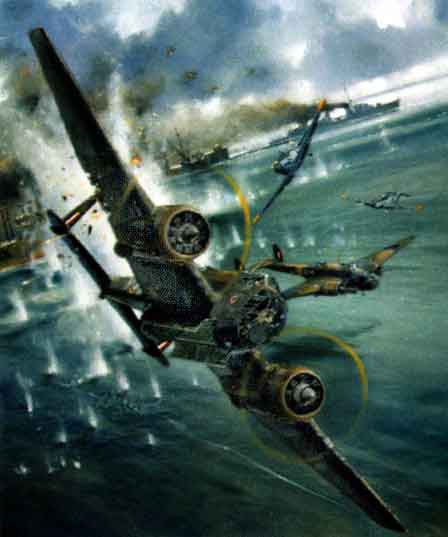
Readers Write #26 September 2012
No Bananas, radiant seagulls, and stoked in the USA.
In my last RW, I took a poke at literary festivals and how they distract writers from the business of writing, so this time I'll have a go at mega-hyper-super-bestsellers. Friends - intrigued by the soaring runaway sales of the Grey trilogy - have asked me how I feel about it. Depressed? (Why not my book?) Elated? (Bookshops full of punters.) Astonished? (Nobody saw it coming.) None of the above.
Freaks happen. Back in the 1930s, someone wrote a song called Yes, We Have No Bananas. It swept the country. People were singing it everywhere Music publishers must have looked at each other and said 'No Bananas is a hit? World's gone crazy.' Well, every now and then it does go crazy, and publishing is no exception, especially when word-of-mouth gets into the act. Many years ago, a New York publisher put out a novel called Jonathan Livingstone Seagull. Without enthusiasm, and with no hopes of making a dollar from it, because the story was about a bored seagull who seeks perfection in flight and finds wisdom, together with two other radiant and loving seagulls. Well, somebody liked it, told his friends, and the rest is history. Also economics, because Seagull not only topped the New York Times Best Seller List, for two years it was the best-selling book in the USA. It became a movie. (Neil Diamond sang the songs.) Critics panned the book - one said that, by comparison, The Little Engine That Could was 'a work of some depth and ambition' - but who cared? It was everywhere. It was a freak. These things happen.
In fact they've been happening ever since the 1890s, when publishing stopped grinding out three-volume sagas to amuse the rich and idle and began offering cheap fiction to the masses. The sales of Mrs James's Grey trilogy aren't particularly huge, compared with the scores racked up by the literary giants of Edwardian times and the years between the wars. When Edgar Wallace was going strong, it was reckoned that, apart from the Bible, one in four books bought in England was an Edgar Wallace thriller. Ethel M.Dell, the Mills & Boon of her day, almost matched him. But for really big money and colossal ego, nobody got near Marie Corelli. In the 1900s, her novels earned her (in modern money) a million pounds a year, and she had the longest entry in Who's Who. She lived at Stratford-on-Avon in a style that makes our own dear Barbara Cartland seem like a shrinking violet. Marie had a coach pulled by two Shetland Ponies, in which she progressed around Stratford every day, with the coachman perched above and behind . Her Venetian gondola took her on the Avon, with a genuine Italian steering it. Why not? The eggheads said her books were sentimental junk, but she claimed to be the most widely read writer, in English and in translation, in the world. And she probably was.
But not forever. In 1908, Hall Caine's novel was (he said) the first to sell a million copies in Britain; and then came Nat Gould's prodigious output - 130 novels, all about horse-racing. By 1927 he'd sold 24 million copies and was still going strong. Corelli had fame, but Nat had more readers. So where does the Grey trilogy slot into this pantheon? Modestly, when you look at (for example) Terry Pratchett's 45 million sales - and he's just one of many in the record books. Thomas the Tank Engine has sold 200 million copies. So has Enid Blyton's Noddy. Erle Stanley Gardner's Perry Mason books have reached 300 million. J.K.Rowling's Harry Potter series tips the scale at 450 million. Vast forests have been felled to make the paper for these blockbusters. So why don't I feel jealous? Two reasons.
One reason is that those authors did things their way, and I do mine my way. I can't crank out a book a year. It takes me two or three, sometimes four or five years to write a book. The other reason is that I have different expectations. I don't aim for the bestseller market (although I'd be happy if it happened). I aim to put all that blood, sweat and ink into writing a book that will stick around for ten or twenty years. The readers who are willing to pay good money for my stuff are probably a minority - a discerning and demanding minority, but too few to generate sales in the millions. Part of my reward is knowing that Goshawk Squadron, for example, is still in print, forty years on. (MacLehose Press's reissue will appear in January 2013.) I hold nothing against Mrs James and the ballistic sales of her Grey books. Good luck to her, especially as a big chunk of the income will go to H.M. Treasury. Meanwhile, I take pleasure in the kind of email that money can't buy, from a fan in Fairfax, Virginia.
Fred, who is one of the discerning and demanding minority, "drifted
back" to my website "after a long absence" and, he says, "I'm glad I
did. I am stoked, stoked about A Splendid Little War. I
am assuming that some of our friends from the RFC trilogy will
appear." Not many, Fred. The year is 1919, and very few of
my RFC characters survived what was known as the Great War. But 'the
whiff of battiness and brimstone' (in the words of one reviewer)
is still there.
Fred being in the U.S., I regret to say that the American edition of Splendid will not appear when the book is published here and in the rest of the English-speaking world, in January 2013. MacLehose Press/Quercus are still sorting out their relationship with North America. You'll know the outcome when I do. Incidentally, Fred's refreshingly new adjective, stoked, is surely one to note. My guess is that it means 'over the moon'. I look forward to its appearance on this side of the Atlantic.
From the opposite side of the globe, Liam in Darwin, Australia sends a short but bracing note. He teaches history. One of his 10th grade students was reluctant to read books of any kind, so Liam gave him War Story, my yarn of the RFC in 1916. "He is powering through it and enjoying it immensely," Liam says. Liam and other teachers "plan to use some historical fiction as sources when we teach WW2." And already, Piece of Cake is going down well at the school. Brilliant idea.
...........................................................................................................................................................................................................................................................................
Readers Write #27 October 2012
Peregrine Delancey gets his comeuppance,
boos and cheers for HRGE, and barnstorming over Winsconsin.
I live close by a large university, and if I'm driving past it when the lectures end and the streets are suddenly flooded with students, I have learned to avoid the deaf and the blind. These are students wandering across the road, with an i-pod in an ear, a bottle of water in one hand and a mobile phone in the other. They are texting the entire world, oblivious to traffic and obsessed with junk. That's just my opinion, of course; but I wonder whether any text message is worth the risk of getting turned into strawberry jam. Especially when you consider the damage already being done to the English language by the galloping impatience of text talk. If enough people go on texting 'u', will the day come when they don't know whether it's spelt 'you' or 'yew'? Good English matters. It can make a big difference to anyone writing to impress as well as to inform. If you don't know the difference between 'discreet' and 'discrete', or between 'affect' and 'effect', or between 'exercise' and 'exorcise', you run the danger of looking like a total moppet instead of the hot stuff you're trying to be.
I mention this because I've just had a letter from a firm of private bankers. I'll call them Peregrine Delancey because that's not their real name - which sounds as if they're waiting to be knighted, and so does Peregrine Delancey. (If there really is a Peregrine Delancey out there, I apologise in advance.)
P.D. made me an interesting offer. They would manage my wealth and take a minimum fee of only £1,250 a year. Now, the writing game is precarious (today, steak and chips; tomorrow, bread and cheese), and by sheer bad luck I not only have no loose wealth but also no spare £1,250. Still, it was nice of P.D. to offer. Then I reached para 3 of their letter, where they talk about 'principle partners', and suddenly their letter turned to ashes in my hands.
'Principle partners' is gibberish. All partners in any bank have principles; it's what keeps them out of jail. What Peregrine Delancey meant was 'principal partners'. Simple mistake - but a bank that plays fast and loose with the English language is never going to gets its hands on my wealth, if I ever have any. That letter was worse than a waste; it was a reason not to trust them. It was an unbusiness letter. Good English matters.
OK. End of pontification. On to readers write. Bad English is about the only thing that Paul (somewhere in UK) didn't find wrong with Hullo Russia, Goodbye England. He felt that I skimmed the surface of the Cold War, produced characters who are two-dimensional and glib, and treated the real issues in a way that was almost meaningless. Also, I made a poor job of explaining the workings of the Vulcan bomber, the book is too short, and in general it descended to the level of juvenile fiction such a Biggles. He's an 'avid lover' of my other stuff, but he rates HRGE as a dud, and hopes I'll do better next time.
This was a comprehensive demolition, and it proves a point I've often made, which is that no book is for everybody. That (and a lot more) is what I said in my reply to him. I mentioned that some readers, including ex-Vulcan aircrew, enjoyed HRGE very much; but I can't, and don't, hope to please everyone. I talked about an old friend who told me that Goshawk Squadron would be a much better story if only I would get rid of that bloody awful Major Woolley. And Paul replied to say that Woolley is 'probably my favourite character', and maybe if he (Paul) had read the prequel to HRGE, Damned Good Show - which introduces Silko - then he might have felt differently about the book. Turns out that Paul is a playwright. (We wordsmiths have strong feelings about stuff.) We parted company amiably. He looks forward to A Splendid Little War, out soon. Will he like it or loathe it? Every book is a gamble.
The madness of Mutual Assured Destruction is at the heart of HRGE, and yet there is comedy too. Gareth writes: 'I am pleased that you managed to reflect some of the humour of the pilots. My recollection (as a small boy) was that they were always laughing.' The novel mentions the black eye patches issued to pilots, to protect one eye if the other was blinded by a nuclear flash. 'Very glad you got the eye patches into the narrative,' Gareth adds. 'I can recall finding one of these and my father telling me that it was for a Captain Hook fancy dress costume he was going to wear to the mess!'
Martin in London has already pre-booked a copy of A Splendid Little War - and 'pre-booked a day off in early January to read it from cover to cover'. And says 'I love the front cover', which is on view on the Quercus website. And an old pal, John in New York State, tells me that he was in Iowa recently, flying a 1934 Aeronca C-3. 'Cows disturbed, probably made butter, and horses none too happy with the thought of a plane that's about 80 years old buzzing just overhead at 500 ft.' Here's what the Aeronca looks like on the ground. Sporty little model.

Cue Garth in Manhattan, who keeps re-reading Cake and A Good Clean Fight, and has a couple of questions. (1) 'How did Baggy Bletchley survive being strafed on the bog (while trapped by his knackers) in Piece of Cake? Re-reading the sequence I can see it's just barely possible, but the mobile lavatory is described as being bowled over and over by German fire. (2) There's a scene in AGCF where Pip Patterson breaks down while remembering an old pal, a guy who saved his life and was such a good pilot Pip was certain the Germans would never get him. Then, of course, they did. Fanny Barton listens quietly, he's seen this again and again.....Once, the narrative tells us, it had even happened to him. So what I'm wondering is, is Fanny thinking about the ultimate fate of CH3?'
My answer to question one is simple. Baggy Bletchley's predicament is based on a true story, involving the master of a freighter, caught with his pants down in a rolling sea; and Baggy survives the attack because, after a quick strafe, any lowflying Me109 would seek out more rewarding targets on an airfield. And air commodores are tougher than they look. Question two sent me to page 264 of AGCF, where Pip's sad memories and Fanny Barton's thought occur. Bear in mind that all this takes place in the spring of 1942. Who knows what has happened to Fanny in the 18 months since the Battle of Britain? Almost certainly, he has known good pilots who got the chop. Maybe he was thinking of CH3. Seven American pilots flew in the Battle and six were killed in action afterwards. The final lines of Cake describe Barton and CH3 emptying their guns on German bombers. After that, anything was possible.
To close, a word about stoked, which cropped up in my last RW when an American reader used it to express his large enthusiasm for the coming publication of ASLW. I wondered at the strangeness of this adjective. Now, a kind and anonymous pal tells me that 'stoked' began life in Southern California, where surfers and skateboarders use it as shorthand for saying they're completely and intensely enthusiastic, exhilarated or excited about something. For example: "I'm stoked about going to California!" The word has reached the East Coast, so it should appear in the UK soon. Tell me if you hear it.
...................................................................................................................................................................................................................................................................
Halley's Comet strikes again, the high price of Norwegian literacy, and 'stoked' spans the globe.
A Splendid Little War is out, and the Daily Express gives it 5 stars (for full
review, click here). The launch took me to a gathering of booksellers the other
night. (What is the collective noun? A volume of booksellers? A sequence? A
binding?) I made a very brief speech, just four minutes - there was food and
drink waiting - about how and why I wrote ASLW. The novel tells the story of an
R.A.F. squadron during the Intervention in
It seems I was slightly wrong. This happens as rarely as a visit by Halley's Comet, but when it does I'm willing to admit it.
Mike, having been 'thoroughly entertained by ASLW, writes that it reminded him that 'I studied the conflict between the White and the Red Russians when at school'. (Sounds like a better school than mine, where the history syllabus said nothing much happened after the Boer War.) Mike goes on: 'I found it fascinating then, but was not old enough to understand the wider implications which come to life so well in ASLW.'
Steve also enjoyed ASLW, in his case all the more so because back in the 1980s he'd read a John Harris novel, aimed at teenagers, all about the Intervention. It was called The Interceptors, and its cover showed a Camel flying low over a line of cavalry. (The book must be pretty rare today - a used copy costs £45 on the Internet.) Steve especially enjoyed ASLW for 'the way you've blended real and imagined events', and he got 'a real sense of what life was like for those men (and one woman!)'. Which is what a novel should do: take the reader somewhere he would otherwise never go.
Speaking of money, my eyebrows jumped an
inch when Jon Gunnar in
Just across the Baltic, Erwin in the
Down in
Graham in the
Something that several people mention is their pleasure at coming across familar faces in ASLW, meaning Lacey (the former Orderly Room corporal) and Brazier (the adjutant). They first appeared in War Story and then played a larger part in Hornet's Sting. Lacey, the least warlike man in the books, believes that war may be hell but that's no reason why the squadron shouldn't live in black-market luxury. Brazier is the opposite: a warhorse who breathes fire and reads King's Regulations for pleasure. I've enjoyed their contribution to three novels. Who knows? They may live again in a fourth.
A last word about 'stoking'. We traced the
origin of this cheerful adjective to the beach boys of
-----------------------------------------------------------------------------------------------------------------------------------------------------------------------------------------------------------
Readers Write #29 March 2013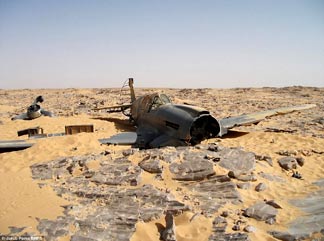
*For the technically-minded, there are two Wikipedia articles you might find interesting:
http://en.wikipedia.org/wiki/Variable_pitch_propeller
http://en.wikipedia.org/wiki/Constant_speed_propeller
-----------------------------------------------------------------------------------------------------------------------------------------------------------------------------------
Lucky, lucky
Charles Dash, rolling a Tiger, and the truth about
Deflection Shooting.
April was a good month. Maybe newspaper editors have a soft spot for authors who hit eighty with the pen still in their hands. Anyway. The Times book section gave Goshawk Squadron (plus all my flying novels) a half-page review, with a photograph that also shows, hanging on the wall, a soft-focus picture of one of the Spitfires used in filming Piece of Cake. (To read the review, click on the link in the panel above.)
Meanwhile, a message arrived by cleft stick from Matthew, who lives not a thousand miles from me. Having read Goshawk Squadron years ago, he took the plunge and read War Story and Hornet's Sting. (All my RFC/RAF books are now available as MacLehose Press paperbacks.) 'Great stuff,' Matthew writes. 'Best novels I've read for years. I gave a copy of Hornet's Sting
to a chum who used to command 2/2 squadron of the SAS and he called me to say he'd finished it quicker than he had a book for years, and praised in particular the pre/post fighting atmosphere.'
Then Matthew raised a question that gets to the very heart of Hornet's Sting. 'Who shagged Dash?' he asked. Most queries from readers are about the horsepower of the Sopwith Pup, or the whereabouts of St Oscar's, an alleged public school where Woolley claimed to have been educated. (He lied. Saint Oscar never existed.) Now Matthew went straight to the nub of chapter 3. Charles Dash was a young RFC pilot who, on horseback, got lost in a snowstorm as night fell. He found himself at a nunnery, empty of nuns but occuped by six stunningly beautiful members of F.A.N.Y., the First Aid Nursing Yeomanry. They gave him a hot bath and a delicious supper and a bed for the night, during which some kind lady entered his room and relieved him of his virginity. Perhaps two kind ladies, hard to tell when everything was totally black. All he knew for certain was that she was, or they were, either Chloe Legge-Barrington, Edith Reynolds, Laura da Silva, Nancy Hicks-Potter, Jane Brackenden, or Lucy Knight. Later, he returned to the nunnery and was similarly rewarded; but by whom? And when he planned a third visit, they'd all gone. Moved on. War is hell.
Now you know as much as I do. Chloe, Edith, Laura, Nancy, Jane, or Lucy? You decide. I just tell the story. Nobody said the author had to know everything.
From
one of your RFC or RAF novels would learn as much (if not
more!) about the experience of the past than from reading just a dry history
textbook' - a point that some teenagers (and even their
teachers) have made in the past. Paraag is working on an RFC novel,
avoiding my style and seeking his own: a wise choice. I wish him
well. Another longtime fan, Jan in
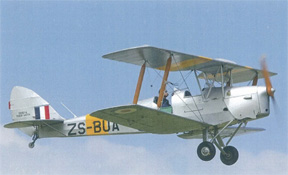
I'd heard that the Tiger is a delight to fly but somewhat lethal if you try to roll it, and Jan confirmed this. He gave step-by-step instructions for attempting to roll the aircraft, including the possible disastrous conclusion, but added: 'Having said that, I have been in a Tiger with a guy that did everything. Slow rolls, barrel rolls, loops, Immelmann's and even a slight tail slide and stall turn. But then there are pilots and weekend warriors. You need to know which tribe you belong to and stick with it.' Good advice.
Finally: I came across an old letter from Ernest (I
know not where) who said good things about my books and urged me to keep
going, which was rewarding since it came from a man who had flown
Hurricanes, Spitfires and even the Me-109 ('an uncomfortable gadget, designed
for nasty midgets,' he said, 'which changed its response from agile to
impossible to handle, depending on the flight envelope. I loathed it.') He
wrote that he didn't understand 'why people describe deflection shooting as
aiming in front. If you do that, you miss behind; you have to swing the
gun/aircraft/tennis racket/golfclub through from behind, fire when you
pass the target and keep swinging, on pheasant, grouse, ME's and golfballs. You
brush the target out of the air. Aiming with the gunsight means you lose the
enemy.' There you have it, from one who has been at the sharp end.
Call me Lance, dear, you can trust me,
News from Nowhere: a Blast from the Past,
and a poke in the chops in total silence.
Moggy Cattermole continues to intrigue readers. A squadron leader
who actually did lead a squadron in the Battle of Britain summed him up very
well: "Bad for discipline but good for morale. Every squadron
should have one - but only one." Now Hugh, who
says he's enjoyed all my books and was happy to find A Splendid Little War
in e-book form (he was in
David, an old pal (
A word about readers' emails. Writing novels is an odd job.
For two years, maybe more, nobody sees the story but me. Then it's
published and vanishes. Who's reading it? Where? Is anybody reading it? What do
they think? Often, the Internet answers. The other day I got this
brief email from Rob, a Scottish librarian: 'I am delighted you have finally a
deal which enabled your novels to be restocked by our libraries. At the moment
I have 5 out on loan which makes me happy as a pig in shit'
- news that I found both encouraging and refreshing: three
cheers for Scottish librarians! Phil in
That same week came an e-mail from Joseph in
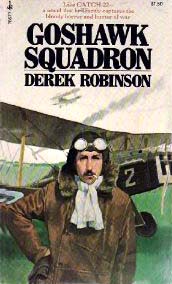
Then came an e-mail from Jim and his wife in
I know the wiped feeling, because Gerry has sent me this
uppercut of an e-mail: 'Hullo, Mr Robinson. I have just read your
excellent book, Invasion 1940. One error in it. You stated that
Bomber Command wireless operators tested their equipment before take-off.
Not true. Radio silence was strictly maintained. How do I know? I was
one.' Wham!
Gerry and I exchanged notes, and I found that he served on 75NZ Squadron, largely manned by Kiwis (although Gerry is English), and highly respected for its 'press on regardless' attitude. Not surprisingly, it was also known as 'the chop squadron' - in all of Bomber Command, it suffered the second-highest casualties. Bomber Command was a huge organisation and the question of radio silence is equally big. R.V.Jones, one of the most brilliant boffins in WW2, wrote that, in his experience, Bomber Command (and indeed USAAF) was 'appallingly indiscreet in its use of radio transmissions'. A lot of bombers, he says, flew with their I.F.F. (Identification Friend or Foe) transmitting, and German fighters detected this signal. And Max Hastings, in his book Bomber Command, wrote about the Luftwaffe's 'Tame Boar' operations in 1943, and said: 'The British discovered that the Germans could often predict a raid by monitoring wireless operators' signals from all over eastern England during the morning air test, and 100 Group began to broadcast fake test signals on days when Bomber Command was not operating, to confuse the issue.'
In the end, Gerry and I agreed that we were both right: on 75NZ Squadron, radio silence was total, but on other squadrons it was a different story. War is never a simple business. And finally some good news: hardbacks of my latest yarn, A Splendid Little War - published in January - have all sold out. To celebrate this success, publication of the paperback edition has been brought forward from January 2014 to November 2013. Whoopee!
-------------------------------------------------------------------------------------------------------------------------------------------------------------------------
Readers Write #32 November 2013Never quit: portrait of a wartime pilot,
Flying in a Lancaster (earplugs needed),
And Baggy Bletchley versus the mobile loo.
The makers of the film A Bridge Too Far, based on Cornelius Ryan's book about the paratroop assault on Arnhem, held a preview before general release. As they left, the audience were asked to write their opinions. Many said it was a good film but the story was farfetched. They simply didn't believe that the force sent to relieve the paras would have to cross so many bridges. Yet the story was true. Arnhem was a bridge too far for the Allied relief columns, and so the operation ended in failure.
Things happen in war that any
writer would hesitate to invent. Take the career of Lewis Hodges. He was
21 in 1940 when his Hampden bomber raided Stettin, was damaged, and he made a
forced-landing in Brittany.
He and his gunner then walked across France
to Marseilles,
got arrested and jailed. Hodges escaped, stowed away on a cargo boat to Oran in
West Africa, got arrested and was returned to Marseilles, where he escaped yet
again, having used a potato to create official-looking stamps on a pass. He
travelled by train and taxi to the Pyrenees and into Spain. This time customs
officers arrested him. He spent five weeks in a prison camp before the
British Embassy secured his release and he went via Gibraltar to Britain
and rejoined his squadron. He'd been on the run for eight months. Asked
what he'd missed most, he said: 'My pyjamas.' Thereafter, when flying on
ops he always wore them under his uniform. He flew many ops.
A long spell of
night raids on Germany earned him a place in a squadron supporting SOE
operations in Europe flying Halifax bombers that dropped supplies and
agents to resistance groups. It was a lonely and dangerous task,
calling
for a calm temperament and superb navigational skills. By 1943 (when
he
was 24) he commanded the squadron, now flying Lysanders and
Hudsons, small enough to land in fields. He flew SOE ops until 1944
and then
went to the Far East, where he commanded a special duties squadron,
using
Lysanders, Dakotas and long-range Liberators to support resistance
groups inBurma, Thailand
and Malaya. These sorties lasted up to
20 hours, often in monsoon conditions. He ended the war with a double DSO and a
double DFC .
That's a brief account of the
extraordinary wartime career of the man who eventually became Air Chief Marshal
Sir LewisHodges, CBE, CB, KCB. His portrait hangs in the RAF Club, in
Piccadilly, and next to it is a picture of the first bombers he
flew, Hampdens, in a low-level raid over the North Sea.
It's the original that Tony Cowland painted for the new cover of the MacLehose
Press edition of Damned Good Show. Those three words are a
fitting description of both Lewis Hodges and the painting.
More transatlantic info comes
from another good guy, Tibor, who is currently mentoring students of English at
the University of Tampa in Florida.
One of his class wrote a thoughtful critique on my output.
"Robinson," he says, "calmly narrates the Goshawk attack on the
Zeppelin and subsequent firefight without getting too popcorn and
relentless. It all goes back to straight reportage", which he
believes I do as well as Hemingway and maybe even slightly better. Well, I just
tell the story and hope for the best.
Meanwhile, Garth in NYC,
who is also in the military fiction business, has achieved the ultimate in
research by actually flying in a
Click on a thumbnail to see a larger version.
Very impressive. You can
see what a beautiful beast the Lanc was (and is). Garth reports that
he could move around reasonably freely, "although clambering over the main
spar that holds the wings on is a bit of a sod, so what it would have been like
in full flying gear doesn't bear thinking about" -
especially in pitch darkness. "The airframe creaks and groans and
screams and shudders, and the noise produced by the four engines is simply
unbearable", so passengers wore ear-protectors. In WW2,
aircrew endured the deafening noise, breathed oxygen, flew at 20,000 feet in
temperatures down to minus 60, and faced flak and nightfighters. Garth
concludes: "My respect for the men of Bomber Command, already high, has
now doubled."
Jumping from the Lanc to the
electronic age, Bob ("a devoted reader since Piece of Cake
in 1991") writes from somewhere in
Lastly, a couple of messages
from the UK.
Rob has read and re-read all my stuff again, "thanks to your latest
publisher who has seen the light in the quality and stark depth in your
writing. Like so many, I read and read again, and each time reveals another
layer in your characters. Some live, many die, but the reader truly cares
about each." Which leads him to wonder: what happened next to
CH3 after Cake and to Barton after A Good Clean Fight?
Fanny Barton's future is spelled out very briefly in the novel
- he goes to Rhodesia
and commands a pilot training base (which, personally, I don't think would
satisfy him for long). I can only guess at CH3's future, but
the hard fact is that six American pilots flew in the Battle of Britain and
five were killed later in the war; so CH3's chances of survival were not
good.
And Phil joins the club of
those who re-read Cake every two or three years, and says:
"Liking Skull and Kellaway more with each reading.... I receive a sort of
holistic notice as I approach Baggy Bletchley's testicular battle on the
portable toilet. I know what's happening, more or less what he's going
through, and I still laugh out loud at each reading." I have a
soft spot for old Baggy. He survived tha
Readers Write #33 January 2014
13 boots on the ceiling, love conquers all, and pooch scoffs predator.
It's been said (probably by me) that fighter pilots take
nothing seriously except flying. An email from Richard gives an example
of this truth which made even my old eyebrows twitch. Back in 1985, when
he was a schoolboy, Richard got invited to visit RAF Binbrook. 5 and 11
Squadrons flew Lightnings from Binbrook, and the Lightning was the supreme
British postwar fighter. Its twin
-------------------------------------------------------------------------------------------------------------------------------------------------------------------------------------------------------
Readers Write #34 March 2014
Knuckle-duster knife, throttling a Camel, and bouncing-bomb Mosquitoes.
Here’s
a remarkable coincidence. Just when Mark (“always been a
fan of your WW1 and WW2 books”) learned about my latest, A Splendid Little War,
he was clearing out the family house, his mother having passed away. He
knew that his great-uncle and godfather John had flown with the RFC/RAF
in WW1 because he’d bequeathed Mark his medals
- the DFC, the Western Front and Great War campaign awards,
plus “a curious thing: the Order of St. Stanislav with Swords”.
Mark had been told that John had flown a Bristol Fighter “in the
Then
another regular fan, Steve, emailed me to say that in the early 1980s,
“as an impressionable teenager”, he’d read John Harris’s story The Interceptors, also based on the Intervention of 1919. Fast-forward thirty years and he saw a copy in an
From
Next, to Oz. Peter in
More from Oz. I heard from Shannon, now in
--------------------------------------------------------------------------------------------------------------------------------------------------------------------
Readers Write #35 June 2014
The low-flying
submarine, hairy bridges,
and ... forget soccer.
The Vulcan attack
on the airfield at
How far and how fast Splendid sailed on that day didn’t alter the
Vulcan achievement, but it made a difference to me. An author needs to
make only one big factual mistake and he’s lost the reader’s confidence. I
research my stuff very thoroughly, and it’s good to hear from Steve in

The locals called it

Readers Write #36 September 2014
Not all over by Christmas, simplicate, and a hop in a Camel
Here’s a thought. Suppose MI6 had killed Adolf in the middle of World War Two. Would that have improved the Allies’ chances? Probably not. It would have made him a German martyr and removed the war’s worst decision-maker, the man who invaded Russia and, seven months later, declared war on America. Two colossal mistakes. There were other blunders. The best way to defeat Germany was by leaving Hitler in charge. The same might be said of Kaiser Wilhelm II, supreme commander of all German forces in WW1. Kaiser Bill was tenpence in the shilling (if you don’t understand that, ask your dad). He believed he was appointed by God and therefore saying something made it happen. In August 1914, just after war was declared, he told his troops: ‘You will be home before the leaves have fallen from the trees.’ When the leaves fell, his troops already knew that they faced a long, hard fight. Confidence in the Kaiser took a knock.
Readers Write #37 November 2014
Missed opportunities,
death in the desert,
and the Tsar rides again.
Here’s a surprise. Product placement has infiltrated the writing game. It’s been part of the Hollywood economy for many years - if your hero drinks beer, make sure he always has a bottle of Old Frothenslosh and the brewery will write you a fat cheque. Even fatter, if you you can get him to say he likes it because it’s old, stale, and has the head at the bottom, that being their slogan. Absurd? Look at what Popeye did for the sale of spinach. And now Land Rover has handed six figures to someone so that he’ll write a new Bond yarn about which I know nothing except it’s a safe bet that a Land Rover has a supporting role, and you can be sure it starts when Bond turns turns the key.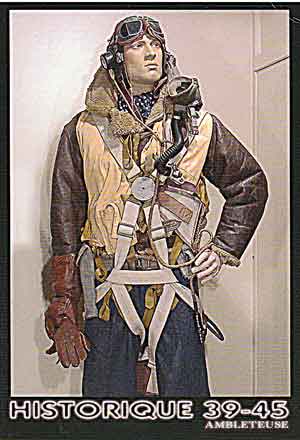
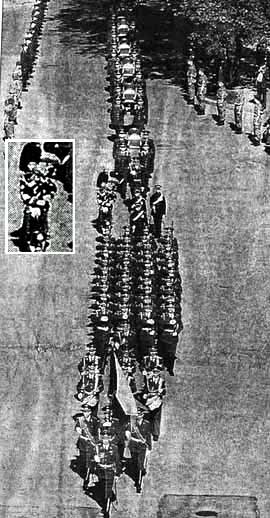
Readers Write #38 March 2015
Much angst in Op Bam,
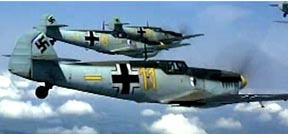
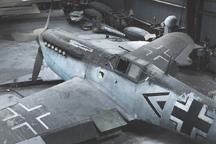
...........................................................................................................................................................................................................................
Readers Write #39 May 2015
The crashes that never were,
the Fortress that tried to fly backwards,
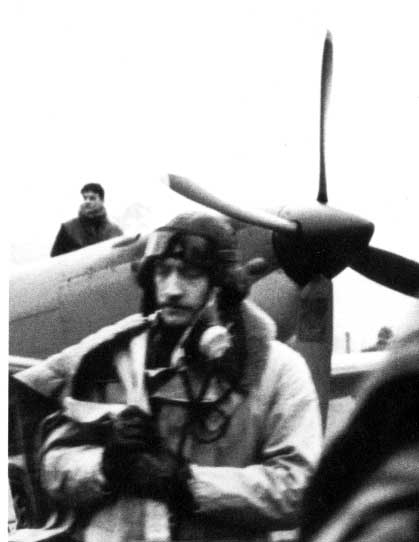
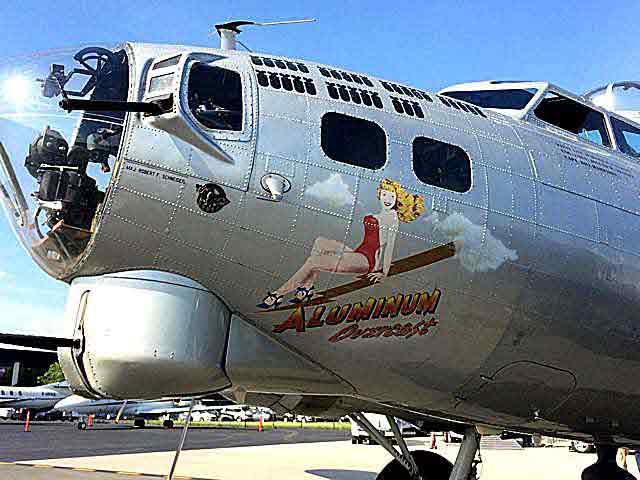
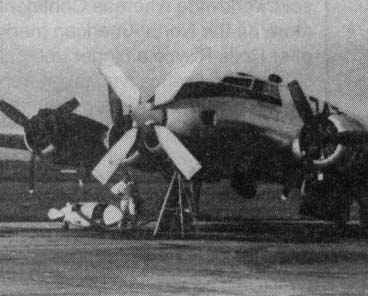
Readers Write #40 July 2015
A shabby Cardigan,
Why Moggy buzzed Protheroe,
We Brits are notorious for celebrating our defeats. Boadicea, famous for losing to the Romans. Harold, second-best to William the Conqueror.
Moving on. An interesting email from Jeff, somewhere in the
Drove my Chevy to the levee
but the levee was dry,
Them good ole boys were drinking
whisky
and rye.
Now, I have seen a levee. Big American rivers have them. A levee is an embankment, built to keep the water out. The word is French; levee means ‘raised’. That’s why it’s dry. Go to a wet levee and the river will wash you away. The reason Don Maclean (who wrote the song) went to the levee was it rhymed with Chevy. If he meant it was dry in the non-alcoholic sense, how could them good ole boys be drinking whisky and rye? Nice melody, but the lyrics go nowhere. American Pie sold three million copies in a single year. When Maclean was asked its meaning, he said: ‘It means I never have to work again.’
Readers Write #41 November 2015
The galloping submarine,
Skull's desert wear,
As the lawyers like to say, the devil is in the detail. My advice to any new author is to read your contract very carefully and with a blue pencil in your hand. Publishers like to insert a clause that gives them a fat share of any sales of screen rights, meaning film or TV money. I always cross out that clause. Publishers are in the book business, not the movie business, and who knows? Screen rights could earn the author more than royalties. Writing is a job, and it’s up to the author to stay in business.
And
the devil-in-the-detail warning applies to writing the book in the
first place. Get one small detail wrong, and the reader is liable
to shout ‘Idiot!’ and fling your book in the fire. For instance,
in a crime novel by a well-known author, a character walks through an
English wood at night and is startled by the sudden noise of an owl’s
wings. Not true. Owls’ wings are virtually silent; that’s
what helps them catch their prey. It was just a detail, but my
belief in the whole story took a nasty knock. Another
example: a book about the Falklands Campaign made such a cock-up
of a British submarine’s journey that I calculated the sub must have
been doing 125 m.p.h. That sort of thing shakes your faith.
Well, I’m human too, and errors can creep in, so if
possible I ask a former pilot to read my new aviation story while
it’s still in typescript. Avoids a lot of blunders. Even
so, I sometimes stumbled. Many years ago, a veteran pilot
pointed out that a book of mine referred to an R.F.C. pilot returning
from a patrol at low level and hedge-hopping over the trenches.
‘Wrong,’ he said. ‘There weren’t any hedges left to hop over.’ I
hadn’t thought of that.
One thing I never had to worry about was what my aircrews wore on duty, since it had to be uniform. Now Steve in
‘His blazer was a size
too large for Skull, and its stripes of dove grey, pillar-box red and
royal blue, with gold piping, had faded to soft pastel shades, but its
cool looseness was just the thing for the desert. Skull wore it with a
pair of corduroy bags bought in
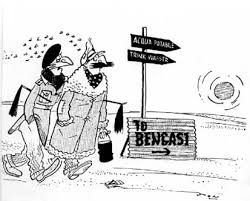
I never thought my ripping yarns would be linked with Philip Larkin. Oliver in Tamworth discovered AGCF (‘utterly brilliant’), moved on to Goshawk Squadron and
wondered if Woolley’s remembering of the whole Aston Villa team in 1913
(when the club won the Football Association’s Cup) might have
prompted Larkin to mention Aston Villa in his poem MCMXIV. Well,
stranger things have happened, although personally I can’t imagine
Larkin enjoying my stuff. Even his friends said he was glum (he
turned down the offer of becoming Poet Laureate) and his output
revealed a dour pessimism. Not much room for humour in Larkin’s
spectrum of talent. Anyway, Oliver now has a chance to compare and
contrast my style with Larkin’s - he has Piece of Cakeand Damned Good Show to occupy him in the long winter nights.
------------------------------------------------------------------------------------------------------------------------------------------------------------------
Readers Write #42 Jamuary 2016
Trust nobody, that's my motto,
with a gong for Gunnar
and rocket-firing long before the Typhoons.
People
sometimes ask me why I don’t write plays or movie scripts, seeing as I have
something of a gift for dialogue. (It wasn’t a total gift. I worked on it
for many years, writing everything from radio commercials to magazine
articles. I churned out two disastrous and unpublishable novels, which at
least showed me how not to write. Goshawk Squadron was one of those overnight
successes that had twenty years’ apprenticeship behind it.)
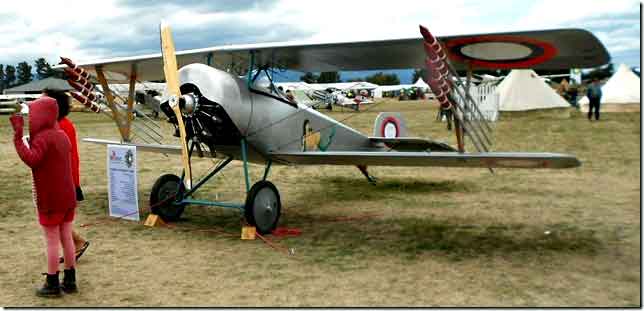
The
artwork on the side is taken from an Italian painting entitled ‘The Sleeping
Venus’. (The Russians liked to show off their artistic skills.) Those
rockets are an authentic detail. Nieuport 16s had them as early as 1916,
and when Zeppelins began raiding
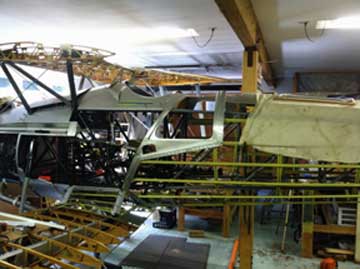
More
news from Oliver in
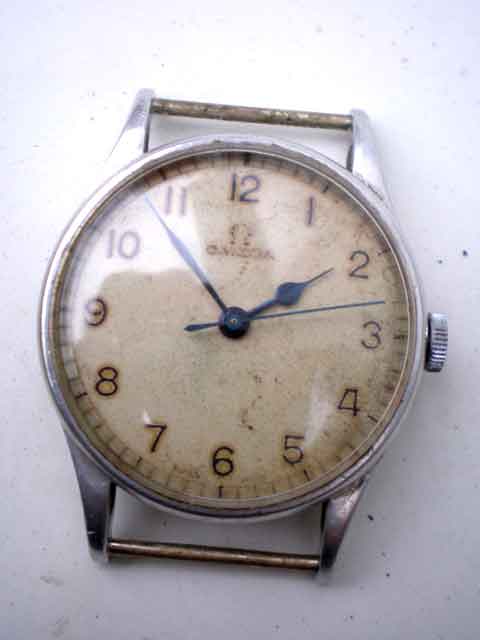
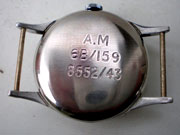

---------------------------------------------------------------------------------------------------------------
Readers Write #43 May 2016
The hazards of fiction,
‘Why 1914?’ rides again,
Years
ago I was the defendant in a case of breach of
copyright - what’s usually called
plagiarism - after I published my novel, Piece of Cake.
It’s an occupational hazard. As someone said to me during the
filming, ‘After the hit, comes the writ.’ In my case, it came
after a national paper announced that Cake would
be adapted for television and the budget was £6 million. Some
people thought that I would get it all. If only. One person
decided I didn’t deserve any of it because, he claimed, I’d copied his
book. (Later I discovered that he had written two screenplays about an
RAF fighter squadron in WW2 and he’d failed to sell them, which may
explain his resentment.) Thanks to the support of my
publishers and some top lawyers, I won the case, but
it took seven years.
One
thing I remember is that in the seventh year, the plaintiff
commissioned a barrister to write a Counsel’s Opinion.
Mysteriously, I got to see it. Their barrister advised them
not to take the case to court, and wrote: ‘Mr Robinson
appears to be a tenacious opponent.’ Too right I
was. One of the accusations made against me was that I pinched
the use of the pilots’ nicknames, in particular Moggy Cattermole,
from the plaintiff’s book. In fact I knew the original Moggy when
I was at school. That, of course, was 40 years ago, but I tracked him
down. He lived in
So what? It was a long time ago, and Cake is
still in print. (In fact, Quercus will reprint all my RFC/RAF
novels next month.) But tenacity is, I think, an underrated quality in
writers. Talent is not enough. The
Today there are Jane Austen Festivals. TV and the cinema can’t get enough of her; the latest
Emails
regularly remind me that I should be grateful for the English language,
which is both marvellously flexible and gratifyingly universal,
and not just in the English-speaking world. In a recent RW,
I celebrated Gunnar, a retired log-truck driver in Sweden who has read
everything I’ve written; and now I’ve heard from Lars in Denmark
who, when serving with UN forces in Cyprus, ‘stumbled upon Piece of Cake and
have been a huge fan of yours ever since. Your books (of which I
have every one) give me great joy and laughs and thrills.
Besides, the books keep me in touch with the English language. I
have just re-read the two books with pilot Silk for the third
time, and will certainly read them again. You are the
best.’ And Lars ends with a request: ‘Please tell me that
more books are under way!’
As it happens, I’ve just finished another novel. Not a flying story; more like The Eldorado Network.
Every novel is a gamble, and I’m too close to this one to know
whether it’s any good. Watch this space.
Lars bought a copy of Why 1914?
Other requests for copies keep arriving, which suggests to me
that the tsunami of books, TV programmes, articles and memoirs has
prompted people to wonder what caused the whole catastrophe.
That’s the question my book tries to answer, and I packed it with
things that most people (including me) never learned at school.
Here’s an example. Nearly everyone has heard about the
assassination on 28 June 1914 of Archduke Franz Ferdinand at
‘Franz Ferdinand went to
Rhys, in
Now to
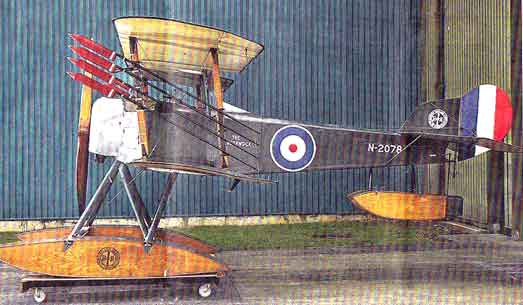
Dave Morris, curator of the museum, says of the rockets: ‘They would be launched just like fireworks. There was a button in the cockpit that would fire them all at once and they would hope that at least one would hit the balloon.’ Le Prieur rockets were cardboard tubes filled with 200g of black powder, with a wooden conical head and a tail. Pilots got as close as possible to the target to make up for the rockets’ extreme inaccuracy. Eric tells me the rockets were set off by a 2-volt battery - ‘presumably that was the norm in those days’. He’s trying to work out how he can fire his Nieuport 16’s rockets without upsetting the Civil Aviation people at the next Classic Fighters Airshow at Easter 1917. ‘If it comes off, I’ll let you know; if it doesn’t then I won’t...’
A last word about names. American authors go in for three names - think of Edgar Allan Poe. Maybe I’ve been shortchanging myself. Is it too late to adopt a longer name? I’m thinking of Miles Farragut Ravensworth. The legal process is surprisingly simple. The UK Deed Poll Service will rename you, in only four working days, for a mere £33. One man changed his name to Bacon Double Cheeseburger. A father and son took the name of their favourite football club, Queens Park Rangers. Someone decided to be called Happy Birthday. Another went for Sarge Metal-fatigue. No. On reflection, I’ll stick to what I’ve got. It’s easier for autographs.Readers Write #44 June 2016
Play dead and don't smile,
Operation Jostle was no picnic,
and the work ethic of Dylan Thomas.
Cops-and-robbers dramas on television often claim to reflect real life. Sometimes the phrase ‘police procedurals’ suggests serious authenticity. Yet the programme makers can be surprisingly squeamish. When murder is committed, the corpse is not dead, of course. It is an actor trying not to breathe. What is odd is that the actor’s mouth is always shut. On television, everyone dies with the lips firmly sealed.This
is such an unbreakable rule that I asked a friendly medic about it, a man
who has seen plenty of sudden death. ‘Not true,’ he told me. ‘Most
people die with their mouths open.’ Murder on TV or in the cinema is
lavish with blood spatter but the victim always dies with a presentable
expression. This is one of the many curiosities of cop shows.
Mobile phones are useful in keeping the plot moving, but they rarely ring when
anyone’s talking. Come to that, nobody enters a room in the middle of
dialogue; they always arrive when someone’s finished speaking. Cops
never fail to kick down doors with ease; building codes on film sets are
pathetic. How often have I seen a cop go into a men’s room and express
his frustration by ripping down a hand-dryer? I hope one day
to see him dislocate his wrist because the device is securely bolted to the
wall. And one day a police car will race to the scene of the crime and find
nowhere to park. It happens to the rest of us. Why not them?
The
answer, of course, is entertainment. In the world of televised drama
there is always a parking space; otherwise the show would never end. I
too am in the entertainment business. Readers spend good money to buy a
novel because they expect it to entertain them; if it’s not readable it’s
unreadable. But it has to be believable too, and that can be
tricky. I understand why murder victims in TV dramas keep their mouths
shut; the director doesn’t want them to look unacceptably dead. But
whenever I see the alleged body, mouth firmly shut, my reaction is to say:
‘It’s an actor!’ And realism goes out of the window.
So
it’s a balancing act. Film and TV directors want to be convincing but not
so convincing that the viewer turns pale and heads for the exit. Years
ago, I had a letter from a very senior RAF officer, written more in
sadness than in anger, who deplored the savagery with which pilots are killed
in Piece of Cake. He accepted that aircrew died, but why did I
have to spell out the brutal horror of their deaths? (Perhaps he feared
the novel would harm recruiting.) Well, I wrote Cake because I
felt that a lot of fiction about air combat had pulled its punches. It
made too much of the chivalry of the skies (which I doubted) and not enough of
the reality of death. A pilot who is cut in half by a burst of cannon
shells at twenty thousand feet is no more romantic than an infantryman
shot through the head. Courage in air warfare is a matter of recognising
the price of failure. Pilots know this, and many of them have told
me that Cake (and my other RFC/RAF novels) rings true.
And
sometimes my stuff prompts a reader to write a book. Margaret, somewhere in the
David
in
Mail
arrives from all over. In
Since my
last RW, a few literary oddities have cropped up. For instance:
Dylan Thomas was not a no-good boyo who wrote best when tanked-up. His
village GP from 1949 to 1953, Dr Hughes, wrote a memoir of this much-loved
British poet, and in it several myths go up in flames. Thomas wrote
best, his doctor says, in conditions of ‘quiet, routine and relative
sobriety’. The routine never varied: he worked in a shed,
undisturbed, from 2.30 pm until 6.30 pm. His wife, Caitlin, was ‘a nymphomaniac
and first-class bitch’. Their rows were vicious: ‘She would
physically attack Thomas, sometimes knocking him unconscious by banging his
head on the floor.’ He died, not from drinking 18 straight whiskeys in a
However,
a comfortable chair always helps, and someone recently paid $394,000 for
the chair that J.K.Rowling sat in while writing Harry Potter. Whether
the bestselling skills go with the furniture is open to question.
Saul Bellow’s desk failed to get a bidder when it came up for auction.
Nobody wanted to own the woodwork on which he won a Nobel. I’d have
offered a fiver. Saul was a Booker Prize judge in 1971. He wanted Goshawk
Squadron to win but he got voted down by the others, one of
whom later admitted he was drunk. Life is full of oddities.
Finally,
something to revel in: a Spitfire in flight, so close and so clear you
feel you can reach out and touch it.
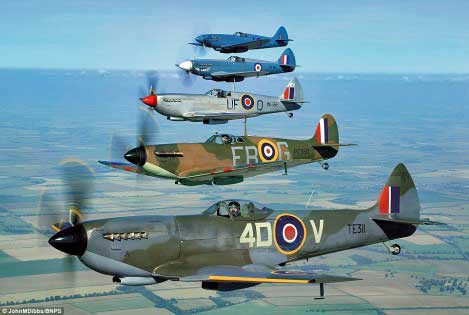
John
Dibbs is an aviation photographer. Working with ex-RAF pilot Tim Ellison,
he got within 15 feet of a Spitfire in flight. By shooting through an
open canopy with a hand-held camera, he captured these remarkable images.
Usually, close-ups of the fighter in the air meant using zoom lenses, followed
by much cropping and magnification. John Dibbs got closer than any
photographer I’ve ever known.
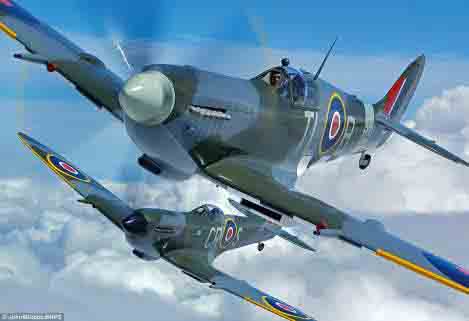
Dibbs has tracked down every Spitfire in the
world that’s flying and photographed them all, brilliantly. They total
fifty - far more than I thought possible;
but, amazingly, several of them were total wrecks that have been restored and
made flyable - a tribute to the Spitfire’s
design.

Readers Write #45 September 2016
Luck, good and bad,Eye-opener in Fiji,
And another blunder for the hit list.
I’ve
sometimes thought of writing a book about the influence of luck on
war. Paddy Ashdown (who was in the SAS) once said: “The
first casualty of war is not the truth. It’s the plan.”
Given the violence of combat and the way it can make nonsense of
detailed plans, it’s likely that some of these unforeseen casualties
will be labelled as good luck by one side and bad luck by their
enemy. Sometimes what looks like luck turns out to change the
course of war.
Hitler invaded
Then there was the
Lastly, a little-known fact about the 9/11 terrorist attack on the
There’s a lot of luck in publishing too, and Shannon (now living in
One of the surprises of writing is the discovery that a book has travelled far and influenced lives. Another reader in America, J.P.M. in Connecticut (“Have been a fan for decades”) ordered copies of A Good Clean Fight, Operation Bamboozle and Why 1914? “Keep on writing,” he urged. And Kieran in Buckinghamshire emailed me: “I have just read Goshawk Squadron after more than 20 years and enjoyed it even more this time around... your books recreate the merciless, raw and terrifying experience those young men went through better than anyone else, in my opinion. And they are hugely entertaining!” And he too ordered a copy of Why 1914?. Which made me wonder why there is ongoing interest in this short (200 pages) book. Maybe it’s because the torrent of thick volumes on the Great War have stimulated a question that they failed to answer. Why did the catastrophe happen?
At the start of Why 1914? I quoted what Liddell Hart, a respected military historian, wrote in 1930. His History of the World War said: “Fifty years were spent in the process of making
Finally,
more on my hit list of blunders by TV and movie directors. In the
last RW, I condemned the practice of filming corpses with
their mouths firmly shut, and of cops who get into a house with a
single painless kick. (In one of Raymond Chandler’s books,
his private eye Philip Marlowe tries to kick a locked door in, and
fails. “I should have known better,” Marlowe said. “The
front door is about the only part of a
Last word: I’ve finished another novel. It’s called Holy Smoke and it’s a heartwarming comedy of deceit, deception, power-seeking and revenge set in the liberated
Readers Write #46 November 2016
Bats in the bomb bay,crashed in the bush,
and Garbo in jail (maybe).
Truth
may be stranger than fiction, but writers like me learn to handle it
carefully. Something can be totally true and yet unbelievable to
the punter. Bizarre things happened in WW2, for instance. One
night in
I came across them when I was researching my new novel, Holy Smoke (out next year). It involves the wartime American intelligence service, the
‘Someone
discovered that you could freeze a bat and then thaw it again with no
evident harm to the bat. Leaping from this to the fact that many
Japanese buildings were made of paper, some scientist came up with a
foolproof idea. Freeze a bunch of bats, wire tiny incendiary
devices to their feet, and drop them from a high-altitude plane. “Bats
away!” As they fell through the warming atmosphere they would
revive and, with the gimcrack buildings of
This loony project was put to the test at an
It seems there is no limit to what some people will believe. In WW1,
large numbers of sober, intelligent English folk believed that a
Russian army had been rushed across England by train, the proof being
that someone had identified them by ‘the snow on their boots’.
People today still believe in ‘the Angel of Mons’, a supposedly divine
apparition that allegedly saved the British army during its retreat in
1914. If you want the truth about these (and other) myths, read my narrative history, Why 1914? Only £8 post-paid in the
So did Liam in
Soon afterward, Flight Sergeant Colin Duncan arrived from

Liam has read my Desert Air Force story A Good Clean Fight, and he writes: “Your description of the heat, the isolation and the stench of the pilots in
From Oz to
Not all my stuff is about aircraft, and Steve in
Last
word: I urge movie directors to stop making an actor take his hat
off at a moment of high drama. If it’s meant to indicate how
surprised the guy is, it fails. I saw a film about
Krakatoa. Local fisherman were on the island when the volcano
exploded, and one immediately took his hat off. Not a wise move
when lumps of hot lava were falling all around him.
Readers Write #47 January 2017
Inscrutably yours,
books as big as bricks.
and
Let’s start with a test. Here’s your question: Which nation was
But from 1941 to 1944,
It
might be said that Japanese leaders were suffering from wishful
thinking. There is a lot of that stuff in war. In 1941,
when Air Ministry planners assumed that RAF Bomber Command’s raids
would panic the German public; in 1941, when Hitler ordered the
invasion of Russia without winter clothing; in 1942, when
Mussolini shipped his white horse to North Africa in readiness for a
victory parade in Cairo; in late 1944, when U.S. generals assumed
that the German army was no longer capable of an offensive, only to be
hit by the Battle of the Bulge - all were
guilty of wishful thinking.
Enough of that. From the sublime to the gorblimey... The new novel, Holy Smoke,
is now being prepared for the printer. With luck, copies will be
available in a couple of months - watch this
space. (If you wish to book a copy, email me on delrobster@gmail.com).
Meanwhile, encouraging messages arrive from readers. It’s always
good to hear from a fellow-author, and Tony Park writes from
Moving
on: here’s a caveat. Novels are a matter of taste, like
fruit: I like apples, you like pears. It’s always
dangerous to recommend a novel; the other person may find it
unreadable. No book is for everybody. OK, now that
we’ve cleared the decks, here comes a broadside. I find
that many of the current batch of novels are unreadable. Often I go
back to re-reading novelists who may be dead but were fine
craftsmen when they lived. Many contemporary authors haven’t
taken time to learn their craft, and too many of them seem to
feel that a novel that’s 600 pages long must be twice as good as one
that calls a halt at 300 pages; what’s more, it’s even better if
it hits 700 or 800. Drop a book like that and you could break a
toe. It’s especially dangerous with thrillers, action stories,
detective fiction, where what is essential is pace. I’ve
just dumped a 623-page whodunnit - highly
praised by the quality press on three continents
- because its pace was so sluggish that by page 119 I was
struck down with narcolepsy and the tome slid from my nerveless
fingers. Also the plot had more holes than Swiss cheese. It was
written by one of those authors who can’t pick up a phone without
telling us that he put it down again. Don’t publishers have
editors any more? That novel cried out for a bucket of red ink.
By contrast, here’s some good news. Dogs are smarter than we are. Tony, an old friend of mine, told me about his boyhood days in
Lastly, here’s a couple of oddities I found in my research. (1) When the German army planned the
Readers Write #48 April 2017
Unreliable journos,
Swindling Spies,
and the Mystery of the Bone-dry Brolly
War, of course, is a great creator of fake news. A
reporter on a quality newspaper once asked my opinion on a story he’d
come across, about an RAF pilot in WW2 who allegedly stole a Hurricane
fighter and flew it to a Luftwaffe airfield in
Often time is a factor; for newspapers, tomorrow is too late. But journalists can be sloppy. I
was the defendant in a longrunning lawsuit when the Sunday Times ran a
big piece, with colour photographs, about the plaintiff’s having to
sell her late husband’s medals in order to finance the action. No
mention of the fact that she had the benefit of Legal Aid, so there
were no legal bills for her to pay. The reporter missed a trick there. (Eventually, I won the case; no mention of that in the Sunday Times, either.) So much for junk. But, once in a while, the truth comes out, and newspapers get it right. Take the story of the umbrella man in
The man put up his umbrella as the motorcade was passing. Why? It was a clear, dry day. Was it a signal to the gunman? The umbrella man must be a suspect. Nobody could trace him. That looked bad, too. Then,
15 years later, somebody did. The truth came out. The umbrella was a
political gesture, meant to remind Jack Kennedy that his father, when
he was ambassador to
Another joke was the British Secret Intelligence Service (MI6) at the outbreak of WW2. SIS operated agents in
Onwards. It’s always a pleasure to hear from a feminine fan, and Meredith in
Aircraft cockpits in WW1 had no purpose-built furniture; cane chairs for the pilot were lightweight, simple and cheap. Also handy in a two-seater for swapping cockpits in mid-air, one of the batty ways aircrews amused themselves.
Another longtime fan is Adam in
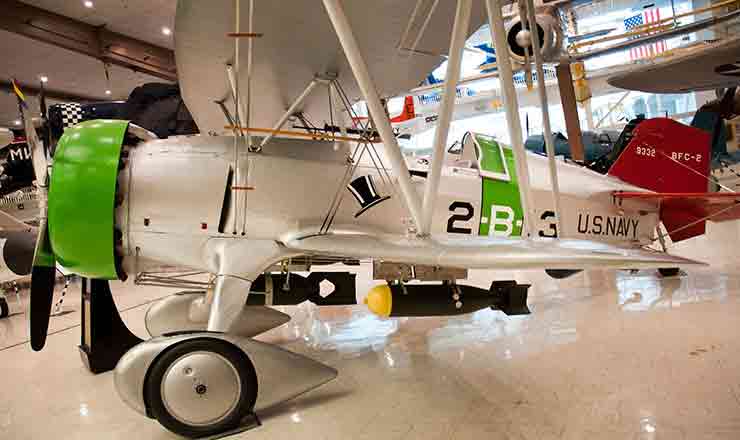
A larger photo and more details at: http://www.navalaviationmuseum.org/attractions/aircraft-exhibits/item/?item=bfc-2_goshawk
.....................................................................................................................................................................................................................................
Readers Write #49 May 2017Hello Hitler, goodbye Britain?
the SE5a flies again,
and the glider-bomb is late again.
Sloppy
thinking leads to bad writing, just as lazy writing points to a
bungalow mentality: nothing upstairs. There are world leaders who
sometimes rush into print and reveal that their ability to handle words
is that of a not-too-bright ten-year-old. Churchill had greater
respect for the English language. After the British army’s escape
from
No
weasel-words there. No spin-doctoring. Churchill did not
say - as so many politicians instinctively
do - “We must address the issue.” (Which means
nothing at all.) He told the truth. We could do with
politicians today who tell us, not what they think we want to hear, but
the hard truth, no matter how unpleasant. Back in 1940, the grim
prospect was Hitler’s plan to destroy a free and independent
Anyone who still thinks invasion was just one of Hitler’s daydreams
should read SS General Schellenberg’s Invasion Plan. Recently,
the BBC showed a television drama called SS-GB (about a German-occupied
Which brings me to Nick Garton’s new book on the WW1 fighter, the SE5 and its many variants. This book is the reverse of sloppy. It’s a hardback, 160 pages, superbly illustrated (many in colour), brilliantly researched and written with the utmost clarity. Here’s a taste of the pix:

Nick tells us everything about the design, building and combat flying
of the SE5, including many things you would never imagine. Its airframe
was wood - Douglas fir and
And - surprise, surprise - there’s an interview with me, all about Goshawk Squadron, which Nick says inspired his book and ‘was a novel that changed popular perceptions about World War One for good’. He quotes my reason for equipping the squadron with the SE5a rather than the Sopwith Camel. It was ‘the same reason that Woolley gives in the book: it was a compromise that was most effective in accomplishing the purpose of the pilots being up there, namely to kill the enemy’. As for the man himself, Nick writes: ‘Then there is the magnetic appeal of Woolley, Robinson’s uncompromising, Guinness-swilling anti-hero, drawn with significant influence from two former ‘camp rats’ who rose to lead SE5a squadrons: Mannock and McCudden.’
Nick’s book is priced at £25. It’s published in
Meanwhile, emails keep arriving from all over. Lars in Denmark was with UN forces in Cyprus and ‘stumbled upon Piece of Cake and have been a huge fan of yours ever since...Just read the two books with pilot Silk for the third time and will certainly read them again...’ Alan in Maryland, USA, writes: ‘I have no doubt whatsoever your existing books are going to delight readers for decades, and perhaps even centuries, to come.’ It’s an encouraging thought. Most art is of its time. Things date quickly. If any of my books is still in print 50 years from now, I’ll look down (or up) and hope they’ve spelt my name correctly. Alan adds: ‘Books like yours are not just adventure stories and not just interesting historical records; they are appreciations of people who risked and often sacrificed their lives for the good of humanity.’ I can’t argue with that.
David in
Minimising Musso,
the secret chequebook,
and three forgotten heroes.
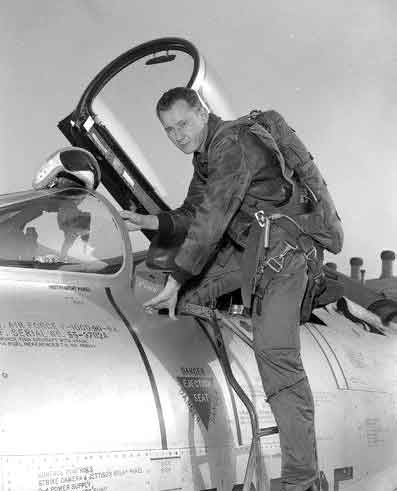 (PIC)
(PIC) Readers Write #51 August 2017
Bang! You're dead.Sometimes the job of the novelist is to think the unthinkable. Years ago, I wrote Hullo
In
those days, atom bombs would be delivered by aircraft, and the
Vulcan was the ultimate bomber - a
four-engined, delta-shape masterpiece that flew fast and high and
handled like a fighter. But there were three problems. One
was the obvious (but unspoken) fact that any Vulcan crew sent to
retaliate would never return, because the
The
official answer to that scenario was that an impetuous action could not
happen because any nuclear strike would be preceded by a State of
“Therefore it follows than an intelligent maniac would strike when there is no diplomatic crisis? No S.M.I.T.? A bolt from the blue?”
“Why would he do that?” Freddy asked.
“Silly question,” Silk said. “He’s a maniac. He can do what he likes.”
“World leaders aren’t maniacs,” Skull said. “Nuclear war kills everyone.”
“Maniacs don’t think they’re maniacs,” Silk said. “Maniacs believe they’re doing God’s work.”
Of
course, times have changed since the days of Vulcans. The great
advantage of manned bombers was that they could be recalled. Now
we have missiles. In all the bluster of Trump and Kim Jong-un, it
is worth remembering the only other occasion when the superpowers
verged on full-scale nuclear war: the week beginning 22 October
1962. Nikita Kruschkev had loaded
LeMay had often talked of annihilating the Soviet Union, and he believed that
It’s worth spelling out what nuclear oblivion meant in 1962. The American arsenal that made
A nuclear crisis is not a poker game. Curtis LeMay planned to play poker with
A Soviet submarine flotilla was in the area. The U.S.Navy was
aware of their presence and had been troubling them with small depth
charges. What the Navy did not know was that the submarines were
armed with nuclear torpedoes. The Navy’s harassment persuaded
some of the Soviet officers to believe that war had started, and
they voted to launch their torpedoes. Fortunately, their
commander, Captain Arkhipov, an experienced man, decided to wait and
see. Arkhipov was the Soviet equivalent of President Kennedy. If
the nuclear weapons in
In the Napoleonic Wars, General Wellington urged his officers always to try to know what was on the other side of the hill - in other words, what the enemy was thinking and planning. General LeMay had no time for that, and many other American generals and admirals agreed with him. He knew only one action. When the Cuban missile crisis was over, he was furious. “We lost!” he said. “We ought to just go in there today and knock 'em off.”
I have a lot of friends in
******
Finally, it is a relief to turn to the relative sanity of Readers Write. David, inBeefeaters and ballyhoo,
my life as a travelling blacksmith,
and me and Bill Gates.
Here’s a question. How would you like to have the International Socrates
Award? You don’t speak Greek? Okay, you want to have the Manager of
the Year Award? Or get the Queen Victoria Commemorative Award? Or the
Best Cities Award? Or join the International Club of Leaders?
Listen, you deserve it. A man of your skills and achievements needs an
Look, don’t thank me, and certainly don’t try
to thank the
Many of the recipients came from
developing countries, places where you can often buy credentials for
cash. If they think the awards are from
It all began in 1971. In that year’s Booker Prize I came second, or so Saul Bellow, one of the judges, said. No money for me, of course, but I was briefly a minor celeb, and suddenly the International Biographical Centre (IBC), based in Cambridge, wanted to include me in their International Who’s Who in Poetry. Two problems: the book cost £18, which I didn’t have, and I hadn’t written a line of poetry.
Their entry form was a bit of a
challenge, too. My education lacked the sparkle that you expect a
top international poet to have, so I spiced it up with a spell at the
IBC printed the lot. Now I was a registered poet. I scraped together a fiver and bought their Certificate of Merit (‘For Distinguished Contributions to Poetry’) and hung it in the loo where it covered the damp patch and impressed the hell out of visitors. And it spawned a steady supply of letters from other publishers, all keen to celebrate my expanding celebrity. (Maybe they swap mailing lists.)
IBC wanted me for their book Men of Achievement. Debrett’s urged me to be included in People of Today, Burke’s Peerage liked me for World Book of Robinsons, and the American Biographical Institute reckoned I was ripe for their Personality of the Year, and - flatteringly - Great Minds of the 21st Century.
All those wonderful people had one thing in common. They wanted money, usually at a special saving. I could get into Debrett’s People of Today for a very reasonable £99. A place in Men of Achievement would set me back £75 or, with my name on the de luxe cover, £295. Rubbing shoulders with Great Minds of the 21st Century meant coughing up $395 for the book, which would give details of ‘how your great mind has worked to influence and pave the way for many individuals’. Or I could order the Great Minds Medal, ‘finished in a radiant golden tone’, at only $595.
The mail kept coming, year after year. Some I binned. Some got the Walter Mitty treatment. My employment record flowered: I had been a roustabout, crop-duster, bit-part actor, plumber’s mate, football referee, bartender and demolition worker. Under ‘Creative Works’ I listed five novels, one each in French, Dutch, Swedish, Spanish and Greek. For ‘Honours’, I created the eminent Theta Phi Omega award. If it doesn’t exist, then it ought to, and I deserved it as much as the next poet. Or non-poet.
No publisher ever questioned my claims. Several reference books listed them. Nobody quizzed me about my career as a private secretary to Lord Lucan. I even told them I was an expert in literary fraud, and no eyebrows were raised. Finally, I almost bought a book from Baron’s, a highpowered American business publisher. They offered me a full page in The Baron’s 500: Leaders for the New Century, with a portrait photograph; and to make me salivate they sent a sample page. It showed a smiling Bill Gates. Hey! Bill and I were two of 500 leaders taking the world into the 21st century!
Me and BIll: a dream team. Just one hitch. Baron’s wanted $895 in advance. No cash, no book. Another great idea got the chop, and world leaders were the poorer by one. They’ll be sorry.
*******
Meanwhile, in the real world, copies of Holy
Smoke have been flying to all corners. (A few are left. When
they’re gone, they’re gone.) Books have gone to readers in
Not surprisingly, most orders are from within
the
Readers Write #53
Bluff, Rockets, and
Runaway Balloons
This isn’t so much about Readers Write as about Author’s Slant on war and
its peculiarities. If that doesn’t interest you, move on.
Hitler spoofs are a brilliant idea. Someone took a scene from
The Last Days of Hitler and changed the subtitles. Instead of
raging at his generals, Hitler savages a local problem - the latest
spoof has him blasting the bus service in my home town. Very funny, very
professionally made, and it cost peanuts. Hitler becomes the voice of
democracy. Nice twist.
Surprise is the key to this spoof. Suddenly a horror story is inverted and it
becomes a joke. Which is fine as long as we don’t forget the
horror. Hitler was a monster who brought death to millions. He
gambled with the future of
That
was the time of the
That
snippet of information has never, to my knowledge, appeared in the histories of
the period. Nor has the opinion of Ulrich Steinhilper, one of the
few Luftwaffe pilots who were sent to the Czech border at that time and who
survived the war. He has rejected the historians who claim the German threat
was real and Czech resistance was pointless. “We were just a hotch-potch
of personnel of very varied experience and training,” he wrote in his memoirs, Spitfire
On My Tail, “in aircraft which either belonged in a museum or weren’t
armed anyway.” He made no mention of the Soviet aircraft in
There
is a lot of bluffing in world politics, and in some cases men are
bluffing themselves. The Vietnam war would never have begun
if
President Eisenhower hadn’t made a speech about the ‘domino
theory’. This
was the belief that if Vietnam went communist,
then all of south-east Asia would be lost, even the Philippines and
maybe Australia or India.
Kennedy inherited the domino theory. (American government knew
almost nothing about that part of the world because all its experts
were fired during
the McCarthy witch-hunt.)
The
Cold War had persuaded
Hitler’s
bluff was based on force, of which he had enough to frighten people. One of the
great what-ifs of history revolves around the timing of his V1 and V2 assault
on
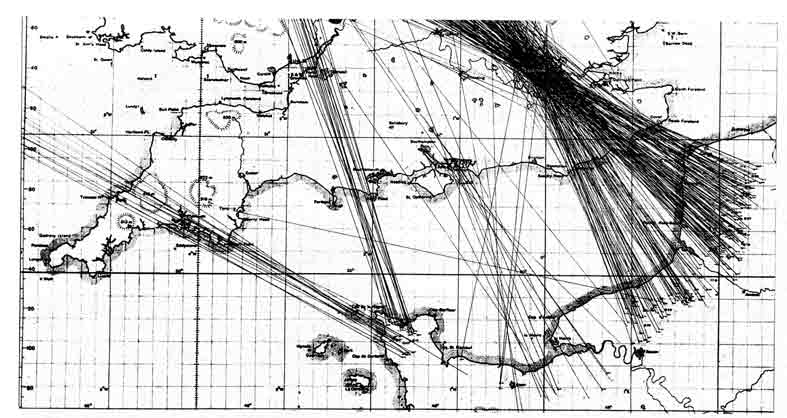
It shows the
firing lines planned by the Germans from launch sites across the north of
A gloomy thought. To end with I’ve found a couple of WW2 believe-it-or
nots that I came across recently.
The
Fairey Swordfish was a slow but tough biplane that the Fleet Air Arm inherited
at the start of WW2. It cruised at 80 knots, so it was useful as a carrier
plane, and also as a torpedo bomber. A Swordfish attack sank a large part
of the Italian fleet in
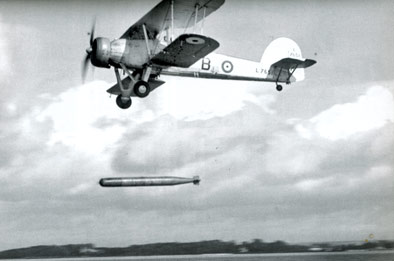
Swordfish carried
torpedoes or bombs, and towards the end of the war they were fitted with rocket
projectiles. One even sank a U-boat with them. The plane’s nickname
was ‘Stringbag’, after the housewives’ shopping bag, because so many
armaments could be stowed aboard it. The Swordfish was the only biplane to fly
on ops throughout the war. American flyers couldn’t take it seriously.
One asked: “Where did that come from?” A British officer said,
“Fairey’s.” The American said: “That figures.”
Finally the humble barrage balloon, fleets of which flew above British cities
like silvery whales. They frightened German bombers into flying higher,
where their bomb-aiming was less accurate. There was a problem.
Strong winds might snap their cables which, dragged across country, could do
damage. Somebody had a bright idea. When the wind was right,
barrage balloons with long cables were released. They drifted
across
Readers Write #54 December 2017
Occupatioal hazards,
Slow Burners,
Stick your neck out and people will try to chop it off. It happened to me. I knew when I wrote Goshawk Squadron that
the book would draw blood, and when the Society of RFC Veterans
denounced it, I wasn’t surprised. Then Alan Gibson reviewed it on
BBC Radio and he summed up its central character, Stanley Woolley, in a
four-letter word that is one of the few curse words which, even today,
is never heard on the air. Well, Gibson won a first in history at
No book is for everybody. The reader has bought it; he’s entitled
to hate it. But Gibson blundered when he called Woolley a ****. Goshawk Squadron is
still in print, almost 50 years later. Half a dozen different
publishers have taken it on, and it’s been translated a few
times. That doesn’t happen to a story about a ****, a character
who by definition is stupid, selfish and unsuccessful. Woolley is
none of those. He rubs people up the wrong way in order to teach
them a lesson that might, just might, save their lives. He knows what
works.

Do brothels have doormen? He sounded very confident. Maybe he knew more about the subject than I did.
His message hangs on the wall as a reminder that, whilst some readers
can’t wait for my next book, others chuck it at the cat. A reader
wrote to say that, after a chapter or two, A Good Clean Fight bored
him rigid. Maybe he expected aircraft and what he got was
soldiers. (The airmen arrived later.) After a couple
of years, he wrote again to say he’d given it a second chance and was
gripped. Same story, different frame of mind. I just write the
book. Sometimes it’s a square peg that gets read by a round hole.
Life is a gamble.
Now David, an old pal living in
Which takes us to the heart of the story. Holy Smoke doesn’t
start with a bang because it’s about a shadow of a man, a nobody,
a jobless yesterday. But he never gives up and life has dealt him a
hand with one ace. It turns out to be a joker. He plays his
ace, and by great good luck it makes a little money. Then -
unknown to him - it grows into a huge swindle that leaves
an American intelligence agency with egg on its face.. The novel
is based on fact. (I have the paperwork.) It’s a slow
burner, which explains the opening. Sometimes I think it
would do no harm if everyone in the CIA, MI6 and whatever the KGB is
now called were to read Holy Ghost. Even a nobody can make them look foolish.
Time for a picture. Here’s a rare photograph of the German retreat after D-Day.
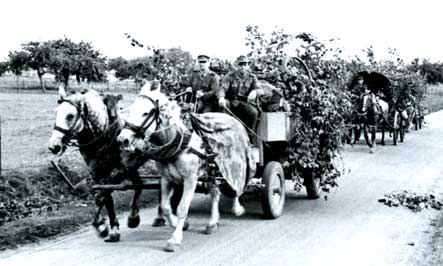
The vehicle is a military wagon, towed by horses and camouflaged with
foliage against rocket attacks by Typhoon fighter-bombers. In
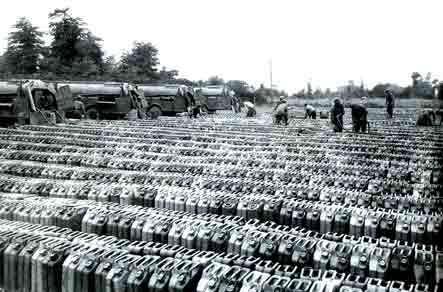
For the invasion of
Lastly, an email from Dave in
“ It strikes me that most writers would have been bogged down by the
narrative...Instead, you’ve kept the events as obscured as they would
have been for the participants...You’ve woven the characters
beautifully. They face each day, each event as it comes...Events
such as Eagle Day (when the Luftwaffe launched its assault on
England) aren’t signposted as such; they’re just especially hard
days at the office... It would have been so easy to get bogged down
with hindsight and the big-picture view. I’m very glad you
didn’t.”
Me, too, Dave. One of the great strengths of the novel is that it can take the reader to places he would otherwise never go. Cake puts him in the cockpit and let's him see what happens. Often it's not what he - or the reader - expected.
Readers Write #55 January 2018
Woolley rings bells,
there’s nowt so queer as folk,
and Hornet’s Sting rides again.
My first novel featured the SE5a biplane, After that, I worked my way through the Sopwith Camel, the Bristol Fighter, the Hurricane, the Tomahawk, the Hampden, the Wellington, and eventually the Avro Vulcan - all of which are now museum pieces, if they survive at all. So it’s good to hear from a pilot who has read my stuff and has known the trials of military flying at first hand. Since he’s a serving officer, I’ll call him Peter (not his real name). Operational security, he tells me, is the flavour of the month.
Peter tells me he “first encountered Piece of Cake via the TV series when he was still at primary school.” He next came across the book at the age of 18, when he joined the University Air Squadron. He recalls: “Reading Piece of Cake for the first time as an adult was a game-changer for me, and immediately I bought the sequel (A Good Clean Fight) and your RFC trilogy, which I also loved.” He flew with the Fleet Air Arm. Fast-forward a few years. Now he’s still flying but he has a son and they’re both deep in aviation history. He says: “A large part of that is due to the influence of your writing... Please accept my sincere gratitude for your thorough historical research combined with your incredible flair for storytelling, and for writing things the way they were rather than the way many people think they were.”
Peter has sometimes been at the sharp end of military aviation and he knows the symptoms. He writes: “I was intrigued by Woolley in the RFC trilogy - the fact that he ends one book (Hornet’s Sting) as a level-headed, approachable good egg, and then begins the next book (Goshawk Squadron) as a complete bastard. I liked this transition - particularly that there isn’t any obvious and telegraphed reason why - because it is a fascinating and realistic depiction of a man suffering from the effects of real fatigue and stress, and the reader needs to work that out for himself. Whilst the reasons why have changed over the years, the symptoms are exactly the same and we occasionally still see those transitions in aviation today - although thankfully for us the understanding and care provided in the industry in this day and age have come on leaps and bounds.”
Moving
on. One of the problems of writing fiction is that some readers
think a character is unbelievable while, in real life, people are
even weirder. I’ve been looking back at previous editions of
Readers Write, and examples sprang out. There was Stephen, reading Goshawk Squadron in
front of a log fire until the early hours, when he nodded off,
“When I awoke, a puppy had eaten the last pages.” People have
been known to steal my books. One man read Hornet’s Sting
in the bath, dropped it and all the pages stuck together. Jim was
so obsessed with my RFC quartet that his wife gave him a flight in a
Sopwith Camel for his 50th birthday. A chap in
And various people have told me that my stuff helped them survive being in the army, or fighting in
Time for a picture. Here’s a clue: it’s 100 octane, and don’t light a match near it.

I used to get a bit of flak, mainly from the top brass, about the amount of alcohol drunk by pilots in the RFC quartet. Especially in Hornet’s Sting. When you look at the cover illustration - Bristol Fighters battling with a thunderstorm, painted by the brilliant Anthony Cowland - you get a taste of the everyday dangers that those aircrew faced. Patrols were hazardous, with or without the enemy, and a pilot’s life might be short. While it lasted, it was celebrated for all it was worth. In the book (it’s on page 136 of the paperback), Cleve-Cutler, the CO, knows how to revive the squadron on special occasions, whether good or bad:
“He let whim and inspiration guide him as he emptied bottles
into a galvanised hipbath. Brandy and champagne were a good
base, followed by port, gin, apple juice, fresh ground pepper,
more champagne, a couple of bottles of Guinness, some rum,
a blast of soda water for fizz, a splash of Benedictine for good luck.”
That was just the beginning. If you want to know what the results might look like, see above.
Garth, an old pal in
Just time for another picture.
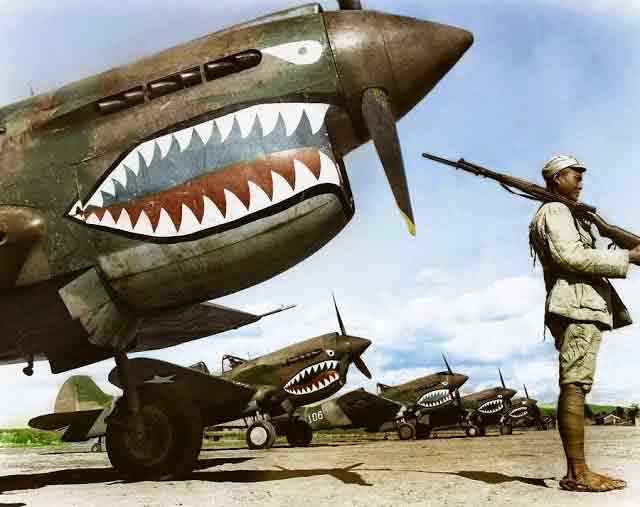
Curtiss built fifteen thousand of these Warhawks in World War Two, and supplied them to 28 nations. In
A footnote from
and Charles Dash’s magic moment
In the
“And then my body, like a cathedral, broke out into ringing. The hunchback in the belfry
had jumped and was swinging madly on the rope.”
If you find that hard to imagine, try this:
“Her hands were all over me, four hands it seemed, or more than four, and as she touched
me she made me weightless, lifting me off the table in a prolonged rite of levitation.”
Later, when things got steamy, she urged him: “Pray, pray at my portal.” As euphemisms go, portal wins the wooden spoon. Perhaps the wooden ladle. (And it wasn’t the worst entry.) I keep a file of advertisements that amused the reader for all the wrong reasons. In one ad, the makers of a vacuum cleaner claimed: Nothing sucks like an Electrolux. And a magazine for church furniture ran this ad:

Well, anyone can stumble, even me. Ian in Helsinki (an Aussie who moved to Finland, married, and speaks Finnish, one of the most difficult languages to learn) has a question about a rare episode of sex in Hornet’s Sting, my RFC novel set in 1917. He finds it difficult to understand “the significance of Dash’s affair with the nurses he cannot identify and what they represent or symbolise in the story.”
Let’s start with Lieutenant Charles Dash. He arrives
at Hornet Squadron in
One day the mobile cinema truck fails to arrive. Probably stuck in heavy snow. Dash sets off on horseback to find it, gets lost and ends up at a house where half a dozen English nurses live. They are enormously pleased to welcome a handsome young RFC pilot, give him supper and a bed where - in pitch-black darkness - one of them introduces him to the excitement of sex. No words are exchanged. For months afterwards he searches for the girl. In vain.
The significance of Dash’s affair (a small detail in the novel) is that it illustrates the innocence and ignorance of most men who joined the Royal Flying Corps, as well as providing an example of the haphazard nature of their life in a time of war. Many pilots were very young, sometimes only months away from school, and sex was a mystery. At the same time, they were flying high in a machine designed to kill, eager to destroy a Hun aeroplane yet well aware that they risked being shot down. Dash’s affair took this contrast to extremes. By day in the sky or by night with a nurse, chance was everything. War is luck.
Ian’s email reminded me that I had an unpublished memoir by
Dr Martin Herford, who was Medical Officer for the British Volunteers who
went to
Fast-forward from then to now. Email arrives
from all corners as well as
Hitler stumbles,
and seeing nothing in the dark.
There is a lot of World War One in World War Two. Nothing new in that idea, but it helps to explain a few hoary myths, such as the belief that machine guns were the most lethal weapon in the Great War. The late John Terraine was a tireless myth-buster (he did a good hatchet-job on the Angels of Mons) and he took a hard look at the casualty figures. What he found was that bullets caused less then 40 per cent of British casualties in WW1. What did most of the damage? Artillery. Shells and bombs accounted for nearly 60 per cent. Machine guns could kill men in the open, but for most of the time the infantry was in the trenches, safe from bullets. But not from artillery. A soldier who survived it said: “Sustained shell-fire was the most trying and terrifying thing to be feared by all.”
It was an artillery war. In the third German offensive of 1918, 6,000 guns fired two million shells in a little over four hours - and that was only part of the attack. The tragedy of that war was that all sides delivered ever-larger bombardments that caused massive carnage, and yet for most of the war it made little difference; until the last year, the Trenches survived. The generals, of course, were far beyond the gunners’ range, which meant that, once the battle began, they were out of control.
Adolf
Hitler knew this, better than most. For almost the entire war he
was a messenger, what the British army calls a runner, in an infantry
battalion. He ran messages from the staff to the trenches and
vice versa: dangerous work. He took part in the
The second war began with quick success in
Bertha
weighed so much that it could be moved only by rail. It had a
barrel of enormous length that could hurl a shell 26 miles high, which
put it in the stratosphere. Three minutes later it fell on
It
is well known to meteorologists and aerospace experts. If you
fling something high enough and far enough, it will eventually come
down - but meanwhile the planet keeps
rotating, and the missile will not land where you aimed it.
Bertha’s three minutes in the air meant that the shelling was never
accurate. The supergun was a terror weapon. Nevertheless,
after 1940 Hitler put a lot of time and effort into trying to shell
Hitler never learned the lessons of history. He invaded
Hitler
believed that Russians, being Slavs, were inferior beings; they
would collapse in the face of his armies. (After only four
months he declared the war won: ‘The foe was broken and would
never rise again.’) He knew little about
This is not to diminish the stunning success of his Blitzkrieg. In 1940,
It
was a story of the wrong aircraft, poor equipment, and
frustrated aircrews. The first night fighters were
Blenheims, already obsolescent. There were a lot of
accidents - airfields had no homing
beacons, aircraft radios were feeble, blind-flying
instruments were unreliable. Night after night, the Blenheims
found no enemy bombers. “Our failure was due simply to our
inability to see another aircraft in the dark,” said an air
gunner. Eventually airborne radar sets appeared, and
they baffled everybody. They were subject to an infuriating
number of faults. When the Blitz began, the night skies were full
of enemy bombers; the Blenheims searched and always landed
empty-handed. Morale suffered. The hard fact was that
Desperate times call for desperate remedies, and some strange solutions were considered, including airborne searchlights, showers of magnesium flares, minefields dangling on parachutes. Some wanted anti-aircraft guns mounted on balloons. Others wanted aircraft to fly above raiders and drop sand in their engines. At one stage, Blenheim aircrew believed that they were losing radar contacts because enemy bombers escaped with incredible speed. Then it was found that their radar sets could show an enemy aircraft that was behind it as well as in front. If the pilot believed the bomber was in front, and he increased speed to catch it, the result was that he ran away from the target behind him. With that discovery, the mythical superfast bombers vanished,
Better
radar sets appeared, and the excellent Beaufighter replaced
the Blenheim. On 20 November 1940, John Cunningham made a
radar contact and shot down a Junkers 88. This good news was
flashed to Group HQ, to Fighter Command HQ, and to Air Ministry. It was
very encouraging - but it was just
one bomber at a time when hundreds were raiding
................................................................................................................................................................................
Readers Write #58 July 2018
the B-25 with nine guns,
and more cunning ack-ack schemes..
One of the pleasures of having readers in distant corners of
the globe is the unusual addresses they live in. For example:
This has nothing to do with ingratitude. Peter
explained the origin. Go back to Saxon times and the word meant ‘rough or
unclaimed common land, often settled illegally by squatters’. It happened
elsewhere; villages named ‘Unthank’ crop up in the North of
England. Then, in Victorian times, the estates running south-west from
Peter is one of many readers who discovered my books a
generation ago (sometimes two generations), and he values them because
they provided ‘enormous pleasure’ but also for ‘greater insight into the early
years of the RAF’ - where his grandfather served in
World War One, and after that in the Indian Air Force. Werner, in
When I first published Piece of Cake, my American
publishers thoughtfully sent me a first sketch of their proposed cover
design. It showed RAF fighter pilots in
The picture is from John Dill in
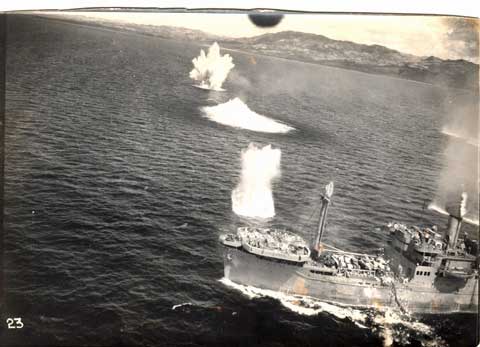
The detail is astonishing. B-25s skip-bombed Japanese
ships; with no fins on the bombs and minimal fusing, this gave the aircraft
just time to escape the blast. Enemy ack-ack guns tried to track the
bombers; enlargements of the photograph show an individual Japanese
gunner on the bow, pointing at the plane. A bomb from a second B-25 has
hit the deck cargo and flung debris over the port side. In 1944 the B-25
was, for a twin-engined bomber, very heavily armed: this particular aircraft
had no less than nine 50-calibre machine guns. As John says, ‘They often sank
thin-skinned ships such as naval vessels by strafing alone.’
John collects military history and fiction; he’s read my books several times. ‘My favourites are the ‘Hornet Squadron’ series, which I’ve read to the point that they’ve fallen to pieces and I’ve had to replace them... With authors like you, I get the benefit of very hard work without doing the research myself.’ He ends with an invitation: ‘If you’re ever in the Florida Panhandle, there’s a draft Guinness waiting for you.’ He suspects that Stanley Woolley was a distant uncle.
In my last RW, I looked at Fighter Command’s failure to make
a dent in German nightly raids on
Since then I’ve learned that, in World War One, far more
wild and wonderful solutions reached the Inventions Department of the Ministry
of Munitions. Suggestions for dealing with hostile aircraft
included: freezing the clouds and mounting guns on them; covering
the moon with a big black balloon; arming aeroplanes with scythes, like
Boadicea’s chariots; and attaching a searchlight to an anti-aircraft gun
and firing along the beam. Other proposals were dismissed as absurd, but
in essence they looked forward to a different war The WW1 suggestion of
getting cormorants to fly to
---------------------------------------------------------------------------------------------------------------------------------------------------------------------------------
Readers Write #59 September 2018
what really happened at Pearl Horbor,
and hello cock-up, goodbye conspiracy.
Statesmen are
human. In photographs, they look infallible: calm, confident
and wise. Yet they have failings, just like the rest of us, and war
sometimes brings out the best and the worst in them. Stalin was vain. He
was short and squat, only five feet three, and when he stood on a reviewing
stand at parades, he made sure that his colleagues stood well behind
him. If he had not been so self-centred, would he have refused to believe
that German armies invaded Russia in 1941? It was a week before he
admitted the truth. Churchill never liked the microphone and he made very
few broadcasts. (Some were made by actors who mastered his
style.) Roosevelt’s ‘fireside chats’ made the most of
radio; to the American people he was a neighbourhood friend. Perhaps
he was too friendly. At times a leader has to knock heads
together, and a recent book gives hard evidence of Roosevelt’s reluctance
to do so.
The book is The
Secret World by a Cambridge historian, Professor Christopher
Andrew. It’s a chunky volume of 948 pages, but very readable:
Andrew explains the tangled world of military intelligence with remarkable
clarity. It’s a big world - his index runs to 69 pages
and his bibliography of the sources he’s used amounts to 57 pages.
I zeroed in on his chapter about World War Two, and especially Pearl Harbor and
the President.
On Sunday, 7th December
1941,the Japanese bombing of the U.S. Pacific fleet in harbour at Hawaii
left America stunned, then infuriated, and finally puzzled. It was an even
greater shock than 24/11. The attack on the Twin Towers happened at a
time of terrorist atrocities, whereas Pearl Harbor was bombed after twenty-two
years of peace. Americans asked themselves: How can this happen?
Why was there no warning? Japan is 3,000 miles from Hawaii. Surely
somebody must have known? The conspiracy theorists looked hard at
Roosevelt. Did he allow Pearl Harbor to happen because he knew that war
was inevitable and this was his way to bounce America into the fight?
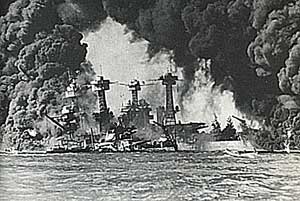
There are two sides to
SIGINT (Signals Intelligence). One is the ability to decode the enemy’s
message; another is the ability of a nation’s leader to comprehend what is
in the decrypt (the decoded message). Professor Andrew makes it
clear that, in 1941, both were lacking in America. In September 1940,
America broke the Japanese diplomatic code, known as PURPLE. A year later, on
26 and 28 November 1941, Tokyo sent coded signals to its foreign embassies that
it intended to break diplomatic relations with the U.S., Britain and the Soviet
Union, and on 1 and 2 December certain embassies were told to destroy all
codebooks and secret papers. The decrypts, known as MAGIC,
provided clear evidence that war was on its way. Hindsight says that the
U.S.Navy should have been on the alert. It didn’t happen. The Japanese
diplomatic code made no mention of naval action, and in 1941 the U.S.Navy’s
codebreakers could not break the Japanese naval code. In the months
leading up to Pearl Harbor, the U.S.Navy intercepted thousands of Japanese
naval signals but they were all meaningless. The Navy gave a low priority
to breaking that code. Usually only two cryptanalysts worked on it.
The President himself is
ultimately responsible for the importance of military intelligence, and in 1941
the handling of SIGINT in the White House was in a state of confusion.
The code and cipher sections of the Army and the Navy were bitter rivals, and
in an attempt to keep the peace, someone came up with what Professor Andrew
calls ‘an absurdly bureaucratic formula’. Both sections would work on
intercepting PURPLE, but ‘the Army would receive all traffic on days with an
even date and the Navy all traffic on days with an odd date’.
What’s more, MAGIC was to be supplied to the President by his naval aide in
even-numbered months and by his Army aide in odd months. Their
rivalry damaged efficiency: in at least one month the Army refused to
supply any decrypts to the President. Intelligence, it seems was not high
on Roosevelt’s list of priorities. The evidence shows that there was no
conspiracy about the ‘infamy’ of Pearl Harbor. What emerges is explained
by the ‘cock-up theory’. It applies to a lot of military
history.
*****
Back to the present
day. Years ago I knocked out a piece about how I write my kind of
stuff. Since then, a few people have asked for advice, so here’s the nub
of the piece:
Writing is hard
work. Easy writing is hard reading. Never say a person is brave.
Show him acting bravely. Let the reader do half the work. A lot of
writing is thinking. Before I start, I re-read a few pages. This is
the flywheel principle - it keeps the momentum going. Everything is
in longhand, double-spaced to leave room for change. It’s
easier to cut in longhand. When you re-read a page or two that you sweated over
and you realise it’s junk, one slash of a pen deletes it. That’s satisfying.
Get the details right or you will lose your reader’s confidence. In a
book by Eric Ambler, someone with flu takes antibiotics. Since
antibiotics do nothing for flu, the detail did nothing for the reader’s faith.
Moral: check everything, trust nobody. Especially
yourself.
****************************************************************
Readers write, and they
are not all male. Emma, somewhere in the UK, began with Goshawk
Squadron and is steadily working her way through my stuff. ‘Military
fiction isn’t normally my bag,’ she says, ‘but your style is black and funny.’
Her pick of the bunch is Damned Good Show, ‘mainly because of Silk,
closely followed Kate as a favourite character’. Silk has no first name,
and she wonders about that. It just happened, Emma. Silko was
enough. He never seemed to need anything else. Simon in
Surrey discovered Hullo Russia, Goodbye England: ‘Vintage
Robinson,’ he says. Then he read Kramer’s War and enjoyed ‘the
unexpected encounter with Rommel. Never thought I’d get to meet him.’ But
‘ultimately Piece of Cake can never be bettered’. Colin in
Oxfordshire is ‘slowly, but very enjoyably, re-reading all your
books - and keeping my wife awake as I am accused of
shaking the bed with laughter every few minutes’. (Reminds me of
the American fan who laughed so hard that he was at risk of cracking a rib.)
And requests for Holy Smoke arrive from far afield - from Jan in South Africa, David in Helsinki, and Marcel in The Netherlands, who has ‘spent many hours reading through the RFC and RAF novels and enjoyed everyone of them’. Emails are always welcome but Barry in Bath brightened up my breakfast with a picture postcard from Italy. He writes: ‘Decided to save Holy Smoke from last year to this - so that the Italian ambience would flavour the sauce. It worked a treat and the book was really enjoyable. As always with yours.’ The novel’s anti-hero is a con artist with a talent like Luis Cabrillo, and Barry reckons he ‘deserves to join the ranks of van Meegeren and Tom Keating et al, as one who fooled the experts, albeit but a brief flame’. The story is based on fact. Maybe Scattolini/del Pronto (every con artist has an alias) has a new lease of life.
============================================================================
Readers Write #60 November 2018
the Bloody Paralyser,
and two right hands.
Britain
was lucky to have squadrons of Hurricanes and Spitfires when World War
Two broke out. We were also lucky to have Roy Fedden, a brilliant
engineer whose team at Bristol Aircraft Factory had designed
Pegasus aircooled radial engines, smaller, lighter and more powerful
than online aero engines. A Pegasus delivered over 900
horsepower - high performance in those
days - and the Pegasus proved its reliability
in the 1930s when it powered a single-engined Vickers Wellesley
non-stop from Egypt to Australia, a world record of 7,162 miles.
(Still a record for a single-engined aircraft.)
Fedden’s
team had another triumph: mass production. By 1939 the Pegasus had a
supercharger, automatic boost control, and provision for variable-pitch
propeller, and well over half the RAF’s bombers had Pegasus
engines. Roy Fedden may be a forgotten hero to many people, but
not in Bristol. For the first two years of the war. most Bomber
Command aircraft flew on Pegasus engines, and that included the
first raid on Berlin. Flight Lieutenant Frank Lowe, DFM, flew a
Hampden bomber to Berlin in 1940. I was lucky enough to meet
him.
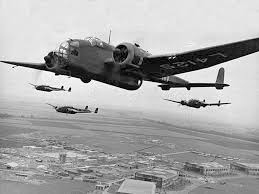
The
Hampden was nicknamed the Flying Suitcase because it had a short, deep
fuselage connected to the tail by a narrow boom. The crew of four had
little room to move. It was a round trip of 1,150 miles to
Berlin, which might take five hours, often more if they faced a
head wind. They flew at night, which had its hazards apart
from enemy flak and unpredictable weather; it was bitterly cold
at 15,000 feet. Frank Lowe bombed Berlin (which came as a shock to
Hermann Goering, who had promised the German people that their country
was impregnable) and his two Pegasus engines brought him back. He liked
the Hampden and admired the Pegasus. There is no substitute for
meeting a man who has been at the sharp end of war, and my novel Damned Good Show was
all the better for my having met Frank. I wrote the book because
I felt Bomber Command had been shortchanged: few people realised
that RAF bomber crews were in action from the very start: the
first Hampden operation was on 3rd September 1939. Later I
learned about the Bloody Paralyser.
Berlin had been the target a generation earlier. Before Bomber Command, there was the Independent Force of World War One. Hugh Trenchard, looking for ways of using the RFC to shorten the war, urged a bombing campaign that would damage Germany’s war production and weaken morale. Then twenty Gotha bombers raided London in July 1917, and that prompted a demand for reprisal. The result was the Independent Force, separate from the RFC, mainly equipped with the DH9 and the Vickers Vimy. Handley Page saw the need for a bigger aircraft, able to carry a heavier bombload further; and it designed a monster.
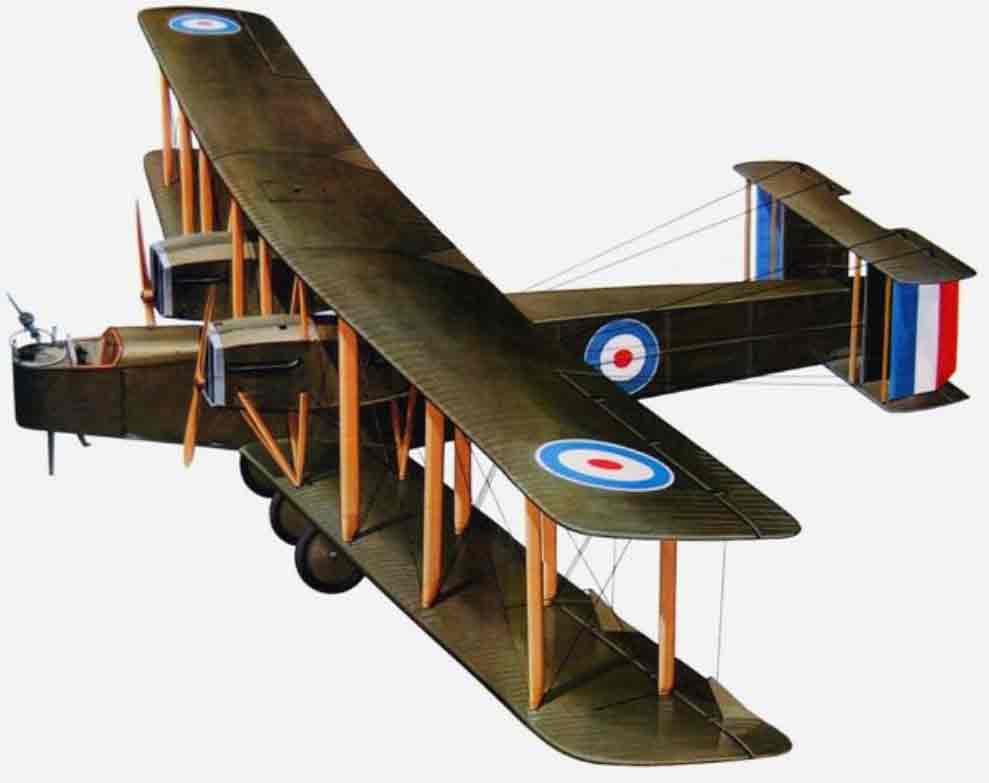
Their
V/1500 bomber had a wingspan of 126 feet (the Lancaster’s was
102) and four Rolls-Royce Eagle VIII engines, each with 12
cylinders; they produced an astonishing 1500 horsepower;
hence the name. The engines were mounted in tandem with
propellers that were 12 feet long. The ‘pusher’ had a four-bladed
prop, the ‘puller’ was two-bladed. The short-range bombload was
7,500 lbs, and the bomber had enough range to reach Berlin with 1,200
lbs of bombs. There was a crew of five and anything from 4 to 8 machine
guns, including an innovation: a tail gunner. The RAF
(as the RFC became in April 1918) liked the monster. They called it the
‘Bloody Paralyser’.
It
came within a whisker of bombing Berlin. A V/1500 was about to
take off when news of the Armistice grounded it.
Nevertheless it saw action. A year later it took a week to fly to
India, just in time for the 3rd Afghan War. The Amir,
annoyed because he had not been invited to the Peace Conference at
Versailles, was about to invade India. Nobody was looking
forward to yet another bruising campaign in the mountains of the
North-West Frontier, and somebody had the bright idea of using
the V/1500. It worked. The sight of the Bloody Paralyser above
Kabul - probably the first aircraft ever seen
in Afghanistan - panicked the harem, who rushed into the
street. The bomber made a few leisurely circuits and dropped some small
bombs on the palace. It was enough. The Amir gave in. Peace
rapidly followed, but India had the last word. Termites
found the V/1500 and reduced it to scrap.
Back to the present. Authors would be nothing without readers, and I get messages (delrobster@gmail.com) from all over. Bill in Chesapeake, Virginia, asked for Holy Smoke, Why 1914? and Operation Bamboozle, which
should complete his collection, and said: “I can’t wait to
read them, and anything else you write in the future.” Mike
Ripley in Essex publishes a column on crime fiction called Getting Away With Murder. He enjoyed Holy Smoke and identified the picture on the back cover as Constantine’s Finger.
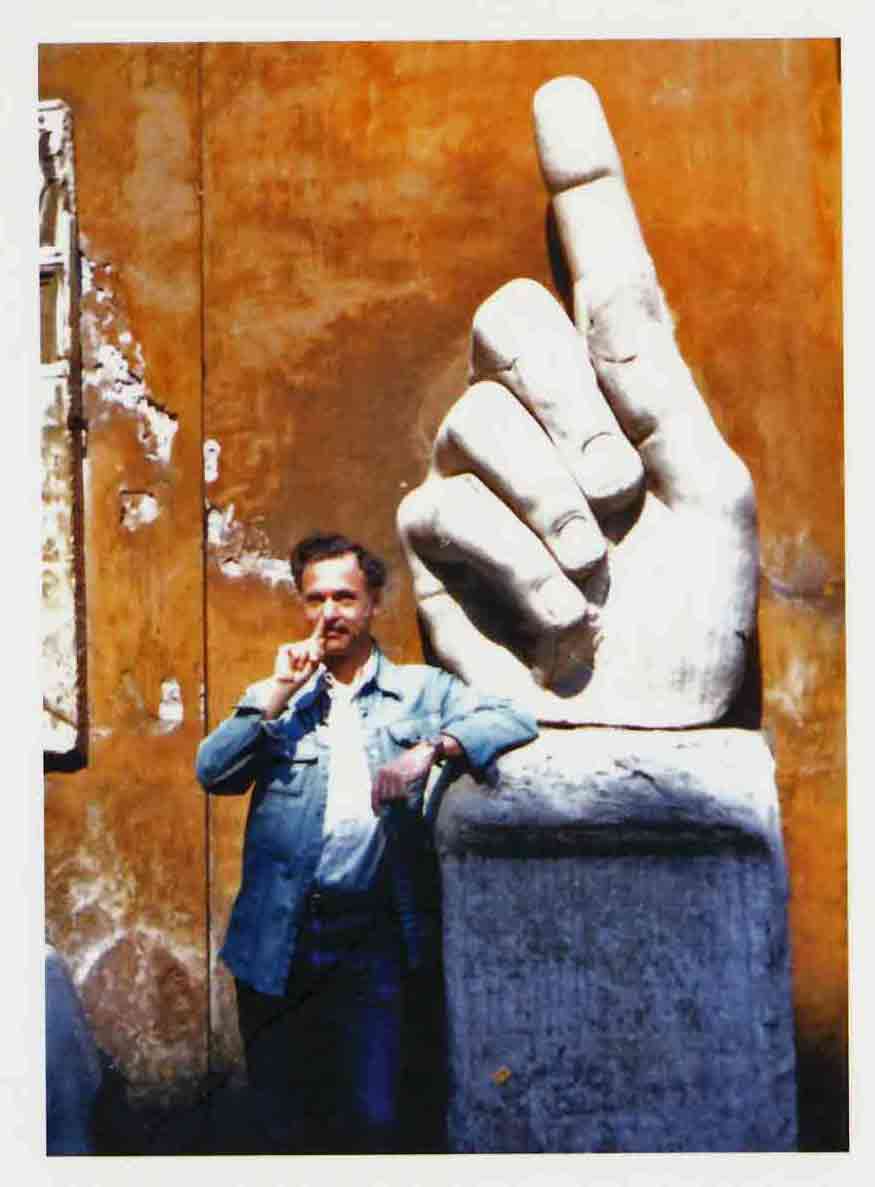
Readers Write #62 March 2019
Hot Spit! in Delaware,
and the birth of XX
After fifty years at the coalface, I have a fan club in England.
The combined membership doesn’t reach three figures, so they aren’t
likely to storm the BBC, Amazon and Netflix and demand that A Good Clean Fight,
for example, be televised. This is reassuring, not because AGCF
would not make a very watchable 10-episode drama but because my fans
are a discerning and astute bunch who know what they like. Rob
Hughes, who manages the club, tells me it is ‘running along quite
nicely with 79 members who regularly convey their love of your books.
They come from all over the world and from all walks of life, from a
Canadian film scriptwriter and an American film producer to a humble
gardener and car valeter,’ the last being Rob himself. He
welcomes ‘anyone who likes to read about the unheroic and darkly absurd
nature of air fighting in WW1 and WW2’, for which he recommends
my stuff. The club is on Facebook at:
https://www.facebook.com/groups/34475831549/?ref=share
Here is the proof:
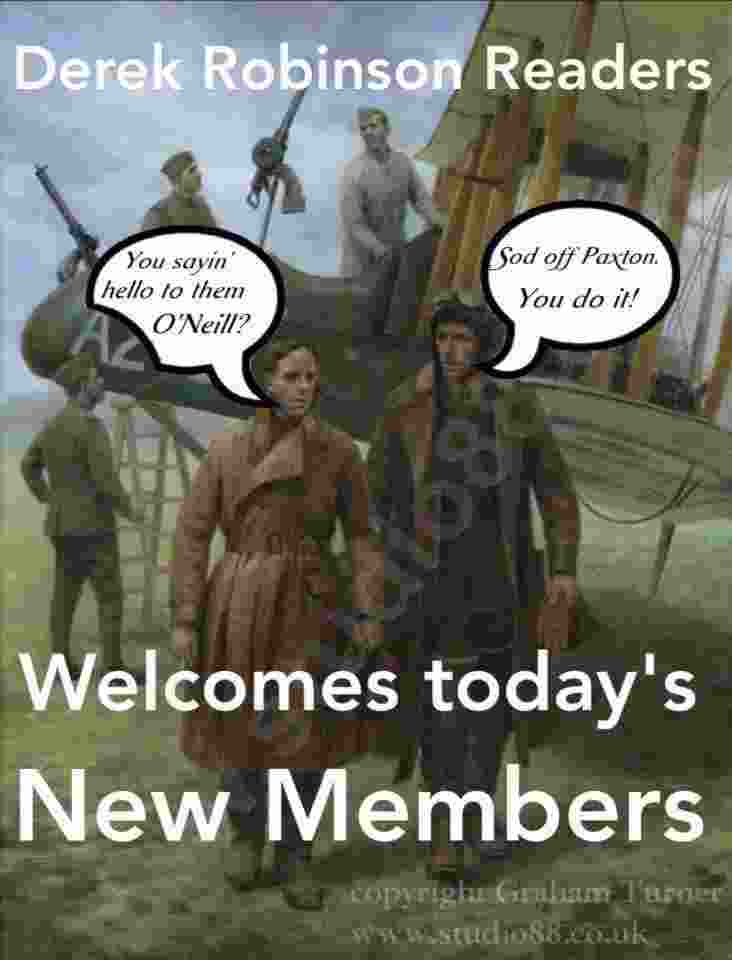
The
aircraft is an FE2b, a pusher-prop machine of 1916 which gave the
gunner (Paxton), a clear view ahead, although he had to stand in
order to fire over the tail, which required the pilot (O’Neill) to fly
straight or level, not something he enjoyed, thus leading to
arguments. The novel is called War Story.
Back to the fan club and to anyone who is on Facebook. I
am not, and I have no wish to be on Facebook. Please
stop sending me your photographs and gossip. They are
beyond my reach and they get promptly deleted. I suspect that
this Facebook plague is a side-effect of the fan
club. Members see my email address on my
website and they add me to their Friends list. This is a
large mistake. Please UnFriend me now.
Leave me in peace and I will have no reason to track you down
with a blunt putty-knife.
To happier news. Aimee, in the State of Delaware, finished reading my flipside ofGone With The Wind which was published as Kentucky Blues. ‘I
had a ball!’ she writes. ‘I kept reading passages out loud to my
brother, who has a similarly warped sense of humor as me. Great story,
lots of plot twists, colorful characters, and plenty of nasty-funny
dialogue and actions.’ She adds: ‘Of course, if you didn’t
intend for the book to be so funny so often, then I guess I’m in pretty
deep trouble about now. Or, as they said in Rock Springs, “Hot
Spit.”
Hot Spit! was
the fashionable exclamation in backwoods Kentucky in 1856. The
novel is longish (630 pages in paperback), so I lubricated it with
plenty of laughs. There is a murder trial in KB that is deadly serious
to the folks of Rock Springs, a remote township where they had to make
their own entertainment. Everything goes wrong, which is
always a formula for black humour.
There’s a happy ending to Aimee’s message. She told me about an American outfit, www.bookshare.org
which converts books into accessible, downloadable formats including
Braille, for blind or print-disabled people. Bookshare has
a library of 600,000 titles, free of royalty, including all my
books. (‘You never know what you’ll turn up when you browse
Bookshare, to a big reader it’s like a kid in a candy story,’ Aimee
says.) The cost is nominal. So: good for
Aimee - but, strangely, my publishers
have not made my books available to a similar facility in the UK.
If my books are available to sight-disabled people in the US, why not
in the UK? I jogged my publishers’ elbows, and heard that they
are in discussion with the Royal National Institute for Blind
People. I hope they can see their way clear.
My
luck, of course, is to write in English, which helps my stuff
find its way around the world. English is an amazingly flexible,
meaningful language, and I came across a couple of examples of its
history. Today we use the phrase ‘by hook and by crook’ to mean
‘any old how’. Seven centuries ago it meant the right to pull
branches from standing trees for fuel - an important
privilege when fire meant warmth. The other phrase is ‘double
cross’, which turns out to have its origin 200 years ago in the
world of prize-fighting in England. Pugilism was illegal,
and prize-fights happened in remote places where huge crowds gathered
to watch. It was bare-knuckle stuff, and much betting took place,
so inevitably some matches were fixed. If one of the fighters had
agreed to lose, this was called a ‘cross fight’ and the records carried
an X. If a fighter agreed to lose but didn’t, this was a ‘double cross’
and the records showed XX. Thus it entered the language.
The
Double Cross System in World War Two was a counter-espionage
agency. It controlled the ranks of double agents in Britain,
believed by Germany to be sending valuable intelligence but in fact
they transmitted a stream of deception to fool the enemy. I told
the story in The Eldorado Network and its sequel Artillery of Lies,
and now John in Colorado finds them helpful. ‘In addition to lines that
cause me to laugh out loud, you have a way of giving me useful lines. In Artillery of Lies,
when Julie, miffed at Luis, is asked by Freddy, ‘Is there
anything I can do?’, her reply is to the point.’ I looked it
up. Here’s it is. ‘Sure,’ she called over her shoulder.
‘Kick the living shit out of him. Should keep you busy for the
rest of the week.’ Which puts John in mind of his response
to leading politicians. He also hopes I have more books in the
pipeline. A new novel is in the expert hands of the typist. Watch
this space.
|
Readers Write #63 May
2019
shark-infested airways,
and picking plums in Norway We live in an age of conspiracy
theories. Much of it is a knock-on effect of social media. Anyone,
anywhere in the world, can shoot his (or her) mouth off, accuse anybody of
anything, and there are enough lame brains around to agree. (A
recent mini-conspiracy in the U.S. accused a restaurant of keeping children in
tunnels under its basement. The restaurant has no basement,
and the armed conspirator who attempted to release the non-existent
children in now in jail; but that hasn’t stopped the restaurant owner
getting death threats. And I recall the passion that raged for two years
in an English village over an alleged plan to turn a meadow into a school
playing field, until someone phoned the county council who told him that
there was no such plan. Much indignation had been
wasted. ‘You have to understand,
what you are dealing with is a thriving industry. People are making lucrative
livings off of selling conspiracy theories to the public. What happens to the
truth? Hell, it got lost under a lot of dollar signs.’
These three Curtiss
Kittyhawks, lined up in Tunisia in WW2, display their shark’s teeth; you
can even see the red tongues inside them. In A Good Clean
Fight, Kittyhawks (or Tomahawks: much the same) are
useful ground-attack aircraft, rugged enough to take punishment. At
height, not so hot. Built like a brick and flew like one.
Fighter pilots often marvelled at bomber pilots who spent long hours in the
cockpit; which may have prompted an email from John, somewhere in the UK,
who is writing a book based on 50 letters from his father in Stalag Luft
3. Before that, he flew Hampdens on 83 Squadron in
1940-41, and ‘had a very close shave with stabilised yaw... while turning
at low level, he lost control and crashed, hitting a tree. The crew got out
relatively unscathed. I knew nothing about stabilised yaw before reading your
book.’ That’s Damned Good Show. Flying Hampdens - a
twin-engined bomber - had its hazards apart from flak and fighters,
and one was yaw. It was a design fault: if you banked the aircraft too
much, the wing and fuselage might block the airflow to the tail unit. Lacking
air to bite on, the twin rudder and elevators would be useless and the Hampden
might well topple sideways, sometimes with fatal results. John’s father
was lucky: a week after he hit a tree, he crashed on take-off and hit a Nissen
hut, again without injuries. He completed a tour of operations, won the
DFM, and began a second tour, flying Lancasters. He ran out of luck over Augsburg
in 1942, got hit, caught fire, crash-landed and spent the rest of the war in
Stalag Luft 3 - which, John reckons, ‘almost saved his life’.
The odds were against finishing a first tour, let alone a second. He was
awarded a well-deserved DFC. Messages arrive from all
over. Mike in Indianapolis has read ‘about everything you’ve penned,
including Kentucky Blues’, which he found ‘enjoyable and
enlightening’. That story never found an American publisher (it’s available on
Amazon). Mike thought it was a good ‘American History’ novel but he suggests
that ‘Americans aren’t fond of stories that reveal the messiness of their
past.’ The life of everyone in KB is certainly untidy; but
then, American history is untidy. Lee Hutch grew up on the Texas/Louisiana
border, and discovered Piece of Cake in high school. He
says: ‘Your book made me want to be a writer’, and now, in retirement,
he’s found a publisher for So Others May Live. I never thought
I’d be a role model. And Jon, in Norway, sends me birthday greetings in
Norwegian. (I think it’s birthday greetings; it could be a recipe for
reindeer stew.) Then - in fluent English - he
lists his favourite quotes from eight of my novels. I’d forgotten all
about the one he chose from The Eldorado Network: “Chaps like us
have to be damned careful. You get invited round for sherry and the next
thing the bank manager’s wife whips your bags off and seizes you warmly by the
origin of species. Terrifying.” Did I write that?
Goodness gracious. 
|
|
Readers Write #64 June
2019
Here is a test. Below is part of the reports made by two radar stations
concerning a raid by bombers on 7th October 1943. The test is: What town
was being attacked? And what made radar control of night fighters
‘practically impossible’? The reports said:
(1) “...the number of echoes increased rapidly and by 2025 hours a considerable
area of tube blanked out. Accurate control of fighter aircraft became practically impossible, IFF (indications) could not be
seen, and the height/range tubes were swamped.
It was not observed for some time that the mass of echoes was
stationary...”
(2) “At approximately 2043 hours the raid had increased to about 200
echoes (i.e. indications of aircraft) and split into two main
parts, a northerly and a southerly mass with a gap of six miles between
them. Fighter aircraft were difficult to control because their IFF was
not visible through the interference on the cathode-ray tube.” Anyone who
knows anything about European bombing offensives in WW2 will have said:
‘Window.’ By 1943, German ground-controlled night fighters were
shooting down so many R.A.F. bombers that an antidote was urgently
sought - some means of neutralising the enemy radar
system. The answer was strips of aluminium foil, measuring 12 inches by
1½ inches, packed in bundles of 2,000 and dropped by each aircraft at the rate
of one bundle a minute. By doing this, a bomber stream could saturate radar
antennas with blips, stifle their controlling function, and leave the night
fighters without direction. The British codename for the foils was
Window; Americans called it Chaff. Normally, the echoes of aircraft moved
on the radar tubes. Window appeared as a cloud of interference, which is
why one radar station was puzzled when ‘the mass of echoes was
stationary’.
Another clue is IFF, which stood for ‘Identification - Friend
or Foe’ (codenamed ‘Pipsqueak’). It was a device transmitted by Allied
aircraft so that radar stations could identify them. If Window made
fighters’ IFF unreadable, then the bombers must be German. That leaves
the target, and the answer is Norwich, in the east of England. Window was
not exclusive to R.A.F. Bomber Command. The Luftwaffe used it too. They
called it ‘Dueppel’, and on the 7th October 1943 it was very effective.
R.AF. night-fighter crews found themselves chasing shadows. Of 35 German
bombers attacking Norwich, only one was destroyed -
when it had left the Dueppel cloud and was on its way home, over the North
Sea. Germany woke up late to
the potential of radar. The Battle of Britain was a shock. (Ulrich
Steinhilper, a fighter pilot. complained that ‘just like passengers waiting for
a scheduled service, the Spitfires would be on station waiting for the next
wave’. Radar was a mystery to him.) In 1942, German scientists found the
same solution as British scientists: metal strips. Both sides now
had a secret that could disarm radar stations and liberate the bombers from
night fighters. Both sides were reluctant to use it, for fear of giving
away the secret and then being made to suffer from it. By
24th July 1943, Bomber Command first used Window in its highly successful raid on
Hamburg. Inevitably, the Luftwaffe would respond, and three months later
it used Dueppel when it bombed Norwich. (Window/Dueppel were part of
bombing strategy for the rest of the war, although advances in radar technology
made it less effective.) The difference was that the Luftwaffe sent 35
bombers to Norwich, while Bomber Command sent 791 bombers to Hamburg.
Perhaps the cloud of foil strips confused the German aircrews: none of
their bombs hit the city. Their inexperience was a more likely cause;
by 1943, Luftwaffe training was rushed. In the blitzkrieg years, Hitler
had praised the Luftwaffe as the spearhead of his conquests. By 1943 it
was understrength, struggling, and out of favour. The Germans
hoped for ‘secret weapons’ that would transform the war. They developed
the JU86R, a bomber that could cruise at well above 40,000 feet, higher than
any fighter could fly. At that height, and armed with only one bomb, it
was incapable of hitting any target smaller than a town. Its campaign was
brief. They developed a radio-controlled gliding bomb , which sank an Italian
battleship in the Mediterranean; the Allies quickly learned to jam its
radio beams. The plans for a German four-engined bomber, the HE177,
looked good, but it had endless technical problems. (The engines tended to
catch fire.) It never became operational. Such
research was not helped by Hitler’s anti-Semitic policies. Before 1939,
many Jewish scientists escaped to Britain and contributed to the war
effort. Hitler made light of their exodus; he remarked, ‘If science
cannot do without Jews, then we will have to do without science.’ This
was his attempt at wit, but his formula was not a winner. As it was,
Germany startled the Allies when it launched the V1 and V2 weapons
against England, and when the world’s first jet fighter, the ME262,
outflew the escorts for Allied bomber fleets over Germany. If those
new weapons had appeared a year or two earlier, the war might have taken a
different course. They were all too little and too late. And,
whatever the innovations, any man is gambling recklessly when he declares
war on Britain (and its Commonwealth), on Soviet Russia, and on the United
States of America. Hitler attempted to win a short war. When that failed,
he had no Plan B except the destruction of Germany. He said his people
deserved it. They had let him down.
********************************* I have been reading
Erich Maria Remarque’s 1929 novel, All Quiet on the Western Front, a
book that was - in the author’s words - ‘an
attempt to give an account of a generation that was destroyed by the
war - even those of it who survived the shelling’. When the
Nazis came to power they cancelled his citizenship and burned his book, saying
it betrayed the German soldier in the Trenches. Remarque was lucky
(conscripted in 1916 and having served in the Battle of Passchendaele, he
deserved some luck) and Marlene Dietrich got him a visa to the United
States. In 1939 he sailed on the last transatlantic voyage of the Queen
Mary, went to Hollywood, kept writing, married the film actress
Paulette Goddard, and lived to the age of 72. A remarkable life. Not many
1929 novels survive in print. But is it a
novel? Some have said it’s more of a historical document, since Remarque
certainly used his own experiences in the German trenches; indeed, it’s
impossible to write a book like his without having been there and seen the
effect of shellfire, gas and dum-dum bullets. But every author draws on
what he knows. Evelyn Waugh’s Officers and Gentlemen includes a
convincing account of the British retreat from Crete in the summer of
1941 - convincing because Waugh was
there. If Paul Scott had not been in India, he couldn’t have written the Raj
Quartet and Staying On. Recently I
heard an interview with Thomas Keneally, who won the Booker Prize
for his novel Schindler’s Ark (filmed as Schindler’s
List). At the time, questions were asked about whether or not the
book was truly a novel. Keneally has said that he made a decision to write it
as fiction (the story is factually true) simply because he wanted a large
audience to know about Schindler, and a novel would get far more readers
than, say, a non-fiction Holocaust book. He was right. I have been
described as writing documentary history disguised as fiction, and
I can see the reason for this - my stuff is well
researched and it’s reliable history. I’ve told the story; now it’s up to the
reader. Either the novel works or it doesn’t. ‘Writers should write,’ Andrew
O’Hagan has said, ‘and let other people argue about whether they like what
they’ve written or not.’ Finally, as reward for
getting this far, here is another New Yorker literary cartoon.
Bestsellers get publicity; nobody mentions the books that fail. Yet
every author has one. This is by Roz Chast, a cartoonist who regularly
finds humour in failure. |
|
Readers Write #65 August
2019
the secret of Pegasus, This is what the more
honest reporters have added to their lengthy analyses of Brexit; they
have ended by admitting that:
NOBODY KNOWS. I offer this on behalf
of all those who have wasted valuable years of their lives in reading or
hearing the guesswork about Brexit that adds up to:
NOBODY KNOWS. Perhaps the best comment
was by The New Yorker writer A.J.Liebling. In 1953 he wrote
about what Americans call flapdoodle over reports that Stalin had suffered a
stroke and might be dead:
“I had an ungenerous feeling, while paddling through all this
virtually
identical speculation, that I was watching a small boy pull a cud of
chewing gum out to the longest possible string until it broke." The fact was that,
instead of saying that nobody knows, the new media produced flapdoodle. Not
much has changed since 1953.
****** Down through the years,
the Parachute Regiment has had a good Press. I wonder why it still
exists. Today the Paras are regarded as an elite force in the British
Army, yet it is hard to think of a modern military situation where
paratroops would be used. In the Second World War,
they raised as many questions as answers. At first they were seen as an
irresistible weapon of war: in 1940, Churchill warned his military
adviser that ‘parachutists may sweep over and take Liverpool or
Ireland...’ Much was claimed for the success of of German airborne forces
in their 1940 capture of the Belgian fortress of Eban Emael. It is true
that German gliders landed on the roof, but in fact the Belgian garrison
fought hard for a day and a night, and the fort did not fall until
paratroops were relieved by infantry. In 1941, the capture
of the island of Crete was regarded as an airborne success; simple arithmetic
proved otherwise. 22,000 airborne troops attacked Crete
and 6,650 were killed, wounded or missing. The Luftwaffe lost 220
aircraft; half of those were troop-carrying Ju52s. Hitler never again
risked a major airborne operation. The hard fact was that paratroops were
vulnerable and lightly armed. Lowflying gliders might be shot down;
parachutists were a simple target as they floated down. As with Eban
Emael, it was German infantry who secured Crete. Crete was attacked by
day. In 1943, the Allies decided to invade Sicily by night
- darkness would assist the invader. It also cost a large
part of the British and American airborne force that was meant to be the spearhead
of the invasion. Glider pilots were inexperienced and
under-trained. It was 270 miles from Tunisia to Sicily. A dying
gale made navigation difficult. Glider-and-tug combinations lost formation. Too
often, the intercom link between plane and glider failed. Many tow planes
released their gliders too far from the shore. Of 137 gliders, only 54 landed
in Sicily; the rest were in the sea. 605 officers and men were
casualties, of which 326 were missing, probably drowned. Their target had
been the Ponte Grand bridge; only five per cent of airborne troops
reached the bridge and saw action. In the end, seaborne infantry captured
Sicily. Lessons were
learned. In 1944, the airborne force in the D-Day landings suffered heavy
losses but they achieved most of their aims, the most famous of which was the
capture of two strategic bridges known as the Pegasus Bridges, said
to be a Paras’ triumph. In fact, those bridges were captured by
glider-borne men of the Oxford and Buckinghamshire Light Infantry; 7th
Para, who were dropped nearby, relieved them after two hours. Landing the
Ox and Bucks gliders within a stone’s throw of the bridges has been called the
‘airmanship feat of the war’. What most accounts overlook is the
contribution of Thomas Somerville. He was 28, a science
graduate working at the Royal Aeronautical Establishment in Farnborough,
and he was on his honeymoon in Wales when he was urgently recalled.
Sicily had been a grim shock to airborne forces. One answer was to give
glider pilots far more training, especially at night. Another was an
improvement that Somerville devised, tested and proved. Landing Allied gliders
at night, especially when loaded with troops plus jeeps or heavy arms, was
hazardous. They needed plenty of open space, as much as 150 yards before
they came to a halt. Before that happened, they might hit trees, walls,
barns, streams, perhaps other crashed gliders. The fields near the
Pegasus bridges were small and cramped. Somerville designed two 14-feet
parachutes that fitted under the glider’s tail; just before touchdown the
parachutes were released and cut short its landing run. He tested the
equipment, flying as an observer in a Horsa glider; the idea worked. On
D-Day, six Horsas, carrying the Ox and Bucks infantry, landed at night, and
thanks to the skill of the glider pilots and Somerville’s arrester parachutes,
their touchdown was close to the bridges and very short. The capture of
the bridges was vital; it prevented German armoured units from threatening
the D-Day landings. Today, arrester
parachutes (now known as Brake Shutes) are standard equipment for many high-speed fighters. Here’s
the RAF Eurofighter Typhoon showing how it’s done. Somerville didn’t get a
medal - he was a civilian - but he
had a distinguished career and was appointed CBE. He, as much as anyone,
made possible the success at the Pegasus Bridges. *****************************************************
The BBC has announced
that it plans to introduce a device that helps TV viewers who can’t make sense
of their dramas because the actors mumble, whisper, or get swamped by
background music. This gives me an excuse to offer one of the best
putdowns in showbiz by Ethel Merman, a lady whose words were always clearly
heard. She was briefly married to Ernest Borgnine, although they
disliked each other. When she was in her fifties, Merman went for an audition.
She came back and remarked that she had been told she had the voice and face of
a woman in her thirties. “What about your 60-year-old ass?” Borgnine
growled. “Oh, you weren’t mentioned, darling,” she said. Finally, yet another
literary cartoon from the great years of The New Yorker, with
thanks to Mike in Indianopolis who emailed me to say that he ‘gets more out of
your web page than a month of the New York Times Review of Books’, which
is encouraging. This cartoon is for all fans of Stephen King who have
strong wrists. It came from the talented pen of Tom Hachtman. |
Ramming unlimited,
riding a balloon,
and writing on trees
Kamikase has become a joke word in the West, the kind of thing that might
be said of a celebrity who makes a disastrous speech. It was no joke to the
U.S.Navy when, in May 1945, American forces attacked Okinawa, the last
island before Japan. The U.S. naval force was vast. It numbered 288
warships, from carriers and battleships to destroyers and
minesweepers, and hundreds of supply ships. Japan sent 1,465 kamikase
pilots to halt them. Almost all died, but their attacks hit many
ships. They sank 38 warships, including an escort carrier and 13
destroyers. One destroyer was broken in half by a radio-controlled
bomb. What’s more, the rest of the fleet suffered badly. Kamikase
planes damaged 16 fleet carriers, 17 escort carriers, 15 battleships, 15
cruisers, 87 destroyers and 24 destroyer escorts. In the brutal
arithmetic of war, kamikase paid off: for the loss of two
battalions of men (and mainly obsolescent aircraft), Japan had inflicted the
heaviest toll on the U.S.Navy in the entire war, including Pearl Harbor.
Here is the USS Bunker Hill - flagship of
Admiral Spruance, commanding the Fifth Fleet - after
two kamikase aircraft hit her within one minute. 396 of her crew
were killed and she was withdrawn from the battle.
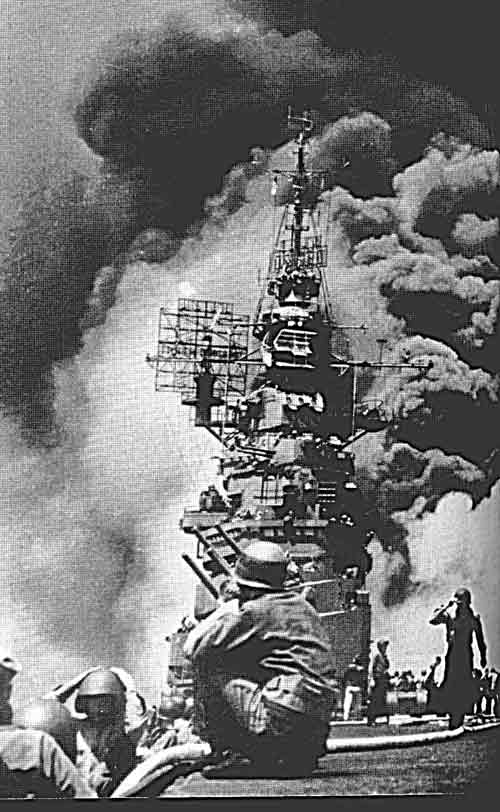
After two months of a largely suicidal defence, Okinawa fell. The mentality of kamikase pilots was inspired by their total obedience to their Emperor; yet Allied pilots were capable of death-or-glory impulses. Over Okinawa in May 1945, a U.S. Navy Corsair intercepted a Japanese twin-engined fighter at 35,000 feet. (The U.S. nicknamed it ‘Nick’; Japan called it ‘Toryu’, meaning ‘dragon slayer’) The Corsair’s guns froze and the pilot deliberately rammed the tail unit of the Nick, which had a rear gunner. It crashed, and he made a forced-landing without a propeller. On the other side of the world, at the tail-end of the Battle of Britain, the Italian Air Force - keen to taste the fruits of victory - made a daylight raid on Britain. 30 Hurricanes were scrambled and knocked down half a dozen bombers. Flight Lieutenant Blatchford, leading his squadron, found himself out of ammunition. (The Hurricane’s guns lasted 13 seconds.) He flew into a CR-42 Fiat biplane and used his propeller to carve a chunk out of its upper wing. The Fiat crashed; Blatchford survived.
These were spontaneous
rammings, made in the heat of battle; probably there were others
that were never recorded, for obvious reasons. Ramming involved a lot of
luck, and nobody was luckier than the German pilot Hauptmann (Flight
Lieutenant) Hajo Herrmann on the night of 22 July 1940.
He led four JU88s from
Germany, down the Channel, to Plymouth Sound. The plan was to lay
magnetic mines in the Sound, approaching it at 300 feet and 180 mph. Moonlight
clearly showed the port buildings, and then showed Herrmann a barrage
balloon dead ahead. His low speed made the controls sluggish. The bomber
landed on top of the balloon and was stuck like a bird on its nest. For a
few seconds the aircraft came to a dead stop, although the engines still worked
and the balloon was intact. Then, “I noticed that the British
searchlights were shining from above - we had fallen
off the balloon and were upside-down...” Amazingly, he regained control,
saw the breakwater and, despite a firestorm from Plymouth’s anti-aircraft guns,
he dropped his mines and headed for home.
Which takes me to the Desert Air Force in 1942 and A Good Clean Fight. Both sides agreed on one thing: the flies were the worst enemy. A squadron might take a couple of hours to relocate at a different airstrip, and within minutes endless clouds of flies would surround them. One moment there were none, the next they appeared ‘in plagues of biblical proportions’, as one veteran wrote. People learned to eat with one hand while the other fought off the flies. Men wondered: Where do they come from? How do they live when we’re not here? And never found the answer.

Alas, in 2017 a wildfire reduced DUX to ashes. 20,000 fir trees burned to the ground. Sic transit, as the locals say.
---------------------------------------------------------------------------------------------------------------------------------------------------------------------------------------------------------------------------------------------------------------------------------------------------------|
Readers Write #68 Jamuary
2020
Stretching the Rock,
the cherry on the Cake, An American
commander once said the way to win was ‘Get there fastest with the
mostest.’ Guy Bolland, a wartime pilot, had a hand in two operations
which proved the truth of that saying. He joined an RAF flyingboat squadron in
1937 and took part in the early radar trials. He repeatedly flew towards
Holland at various heights so that radar operators on the mainland could
practise the detection and tracking of aircraft. This proved to be vital
in the Battle of Britain: German pilots, who had been told that the RAF
was on its last legs, were surprised to find British fighters in the sky,
waiting for them. Later, Germany developed its own radar
network, but Britain got there first. Then, in
1942, Bolland was the commanding officer of RAF Gibraltar. The Rock would
be a crucial supply point for Operation Torch, the Anglo-American landings in
North Africa. However, the runway on Gibraltar was a simple landing strip on
the racecourse - far too small for the great concentration of aircraft
that Torch required. Bolland was in charge of a huge (and fast)
extension of the runway. Tunnels had already been dug in the Rock;
he used the spoil for foundations. His pressure kept up the momentum of
construction; nothing was allowed to interfere. If an aircraft crashed
(and many did), he ordered it to be dumped in the sea. General Montgomery
complained: “There’s a madman at Gibraltar who’s destroying my aircraft.”
Eisenhower, his boss, knew better. Within months, Bolland had created a
broad new runway, nearly a mile long, reaching out into Gibraltar Bay, suitable
for the biggest aircraft and ready for Torch. Bolland’s drive and determination
helped that operation get there fastest with the mostest. Here’s a fine painting
of a Hawker Tempest, sent by Garth, an old pal in New
York:
The Tempest (24
cylinders, 2,400 h.p. Napier Sabre engine, maximum speed 435 mph) was one
of the fastest piston-engined fighters of WW2. Masterpiece Theatre (not Theater) was the
idea of another expatriate, Christopher Sarson at WGBH, and Frank Gillard, a
BBC veteran. In 1970, WGBH had great success with all 26 episodes of the
BBC’s Forsyte Saga. In those days, American television had
nothing like it. The official history of Masterpiece Theatre was
candid:
‘Viewers who weren’t interested in bimbos in peril, or teenagers in heat, were
forced to join the lost audience, doomed to wander the television wasteland looking in vain for entertainment that didn’t
upset their intelligence, their tastes, or their stomach.’ BBC-TV had stacks of
drama serials filed away in London. Mobil agreed to sponsor the best. Cooke
agreed to top-and-tail each episode, which he did for 21 years.
Masterpiece Theatre eventually took the pick of British commercial television’s
productions. Piece of Cake was one. I framed a Mobil poster. It
showed the American actor, Boyd Gaines, who played Pilot Officer Chris Hart
III, better known as CH3. The caption was: War was just a game
- until it began. Those were the days. If you sell the screen
rights of a novel, you sell all control. (When Woody Allen made All
You Want To Know About Sex Without Worrying, the studio bought the rights
to a serious medical book, threw away the text and kept the title.) In filming
a story, many things can go wrong: the screenplay, the casting, the
direction, the music. I was lucky that Cake went right in every
respect. I took a small piece of credit; after all, if I hadn’t written
the story, the series would never have happened. Masterpiece Theatre put the
cherry on the Cake. Ben Cowburn was one of the most succesful SOE agents in WW2.
He made four missions to France and survived because he knew what worked
and what didn’t. Cowburn told recruits that any hand gun, ‘fired by the
average person...would merely be a useless noise at a range of more than a
dozen yards...’ Yet Hollywood and TV still make cops-and-robbers
films and Westerns where hand guns hit the target fifty yards away.
Sometimes more. Cowburn was right. Movie makers are wrong.
They crank out films where the gunman fires from the hip, which
multiplies inaccuracy, and hits a running man several cricket pitches
away. Cowboys (the real cowboys) rarely got into gunfights. They carried
a revolver because the noise of a shot in the air might stop a herd of cattle
stampeding. Or at least divert it. That final scene, beloved of
Westerns, where two rivals end up on Main Street, and go for their
guns, is garbage unless they were so close they could smell each other.
If you can’t tell whether the other guy is using deodorant, don’t fire a
handgun. You’ll miss. It’s satisfying to know
that my books get around. Sometimes around the world. Marc, in
Dinan, France, was part of a Flight Deck Crew on board the aircraft carrier
Clemenceau in 1996, working 12 hours a day bombing-up Super
Etandards. He’d found Goshawk Squadron in a bookshop, and
he read it during the crew’s 6-hour rest time. In fact, he had ‘to
leave our rest room as as not to wake my friends with my loud laughs’.
(Later, most of them read it too.) He kept the copy and re-read it.
Gagan, in the USA, got hold of GS in 2013 when he
was 13 and found it ‘unlike anything I had read until that point...I must have
read it over a dozen times in the next two years’. Then he found my other RFC
trilogy, ‘Hornet’s Sting being my favourite by far’. He’s
now about 19. He had a rough time in his teenage years, and reading my
RAF quartet (plenty of rough times there) helped him grow up and get on
with his life. For which he thanks me. Lastly, I
was flattered to find that an academic in the University of Warsaw reckons my
stuff is worth a nine-page article on my ‘Post-Memory Fiction’. She is
Marzena Sokolowska-Paryz, and she examines the subject from all
sides, including some that don’t exist. She writes about the
way I read two books, Aces High and All Quiet On The Western
Front, that influenced my writing Goshawk Squadron. |
Readers Write #69 April 2020
Random thoughts.
There
has been talk of reviving the Blitz Spirit, but not many remember the
Blitz itself. In comparison with other modern disasters
(including the present virus), it was a lot more lethal. In the five
years of WW2, a total of about 60,500 were killed by bombing, by V1s
and V2s, and by long-range shelling across the Channel. 86,000
were seriously injured. Britain was a dangerous place. The chances of
anyone being killed in an air attack on Britain -
anywhere in Britain - were just under 1 in 800.
Those living in cities (including me) faced shorter odds. In
London there was a 1-in-200 chance of being killed; the chance of being
seriously injured was 1 in 160. The big difference, of course, is
that Covid-19 is an invisible threat - yet it’s worth
remembering that nobody in Britain could see the German V2 rocket. It
travelled in the stratosphere and it arrived at a speed of 3,500 feet
per second. Its victims never knew what hit them. The V2 was
beyond sight and sound, until it exploded. Hitler hoped that
these offensives would bring Britain to its knees, and he failed.
Today we face a very different offensive, but we survived before and
we’ll survive again.
*
All
jokes - especially black ones - are capable of
angering someone. My favourite cartoon, from an old New Yorker,
showed two old ladies looking at a tombstone. One says to the other, “I
told him it wouldn’t kill him to try and be nice once in a while, but I
was wrong.” It has a place on the wall of my workroom, but it might not
work for everyone. One of my top ten jokes carries the risk of
offending anyone self-isolating. It’s about a man who goes hiking in
the mountains. He meets nobody. After three days, he sees a hut
on top of a mountain. He reaches it and knocks on the door, which is
opened by a naked man wearing a bowler hat. The walker asks: “Why are
you naked?” The man says, “Nobody comes here.” The walker
asks: “Then why the bowler hat?” The man says, “You never know.
Somebody might.”
(I
think that’s one of Spike Milligan’s stories. He scored top marks for
me with his proposed epitaph. “I want to go to Heaven,” he said. “But
if Geoffrey Archer’s there, I want to go to Lewisham.”)
A
third story is the shortest. It’s about an amateur bank robber who buys
a toy pistol, goes up to a bank teller, and says: “Okay, you
stickers - this is a fuck-up.” I suppose a
banker who had just been robbed might not enjoy that.
*
A
writer’s life has a few advantages - you work when you
like, eat what you like, wear what you like -
but one of its demands is resilience, even determination. A
writer has to plug away or he gets nowhere. Long ago, David
Lassman was director of the Jane Austen Festival in Bath. He wrote the
opening chapters and plot synopses of Austen’s novels, changing only
the titles and the characters’ names, and he sent them to 18 British
publishers and agents. He was ‘staggered’ when they all rejected
them. He deplored ‘major publishers who can’t recognise great
literature’. Lassman should have looked at Jane Austen’s track
record. She needed all the resilience she could summon
up.
Austen wrote Pride and Prejudice, sent it to a publisher and it was, she said, ‘declined by return of post’. So she wrote Northanger Abbey, sent it to a different publisher who bought it for £10 and never published it. She plugged away and wrote Sense and Sensibility. This
time it got into print - but Jane had to pay for the
printing and the advertising. She paid. And she had resilience.
Eventually her books sold; but it took a large amount of
bloody-mindedness to get her talent
recognised.
**********************************
A
word about the comma. Some want it abolished, others scatter it
like confetti. Yet the comma can make a difference. Properly
placed, it can reverse the meaning of a sentence. Take this, for
example:
Truck drivers said police were driving like maniacs
With two commas, it means the opposite:
Truck drivers, said police, were driving like maniacs.
Punctuation
is like knitting patterns. They both have rules. Otherwise
you end up not with a scarf but one odd sock.
----------------------------------------------------------------------------------
Readers Write #70 June 2020
Flim Flam.
There’s
a bit in my new book, Odds & Sods, (see above) about conspiracy
theories. Some people will believe anything, and the more
you go over the top, the more they follow your lead. Back
in the days when Punch was big, its editors ran a two-page spread
that spoofed the small newspaper ads that sold mail-order odds and
ends. One of their bogus ads offered Do-It-Yourself Brain Surgery
Kits, and for the next several months, Punch had to return the
money that gullible readers sent to the magazine. Evidently
there were many Punch readers who felt they deserved a better
brain.
Spoofing
is not as easy as it seems. Yesterday my computer printed a
lengthy email, allegedly from a bank in Nigeria which urgently wanted
me to have three-quarters of a million pounds sterling. Obviously
it was a scam and just to rub it in the message was littered with
spelling mistakes. By contrast, I remember, back in the 1960s, a
New Yorker (with immaculate spelling) grew tired of fatuous
campaigns and decided to test the city’s credibility. He invented
a preposterous ginger-group called SINA. He wanted to see how long he
could con the public before the spoof collapsed. Instead, it
flourished and he found he was on a non-stop treadmill.
SINA
stood for the Society for Indecency to Naked Animals
- a deliberately contrary name, but nobody noticed. Its
announced aim was the censorship of animals’ sexual organs, and it
campaigned all over town with placards and processions, urging (amongst
others) that all police horses should wear a sort of jockstrap to
conceal their modesty. (The organiser hired Rent-A-Mob to make
the demonstrations.)
SINA
got huge publicity and won public support, and it expanded its
campaign. I worked for an ad agency, and one day there was a SINA demo
against Pepsi, one of our clients. Demonstrators with signs
blocked the sidewalks, claiming that Pepsi caused women’s tights to
ladder. The agency took it seriously. Sales of Pepsi might
suffer.
One
reason why SINA got public support was because there already was a form
of censorship of animals’ private parts. Borden’s Milk and Ice
Cream - a big company - used a family of
cows called Borden in its ads. Beulah Borden was the happy mother and
she was always shown, in artwork, wearing a little pinafore to conceal
her udder. Borden knew that most Americans didn’t want to know
where milk came from. Ad agencies routinely airbrushed the navels
out of photographs. Some people didn’t want to be reminded where
they came from. Qantas Airline once went so far as to
neuter a picture of a kangaroo. In the end, the man who created
SINA called a halt to the spoof. It cost him money and accomplished
little.
***
If
you’re desperate for self-improvement exercises during the lockdown,
here are three tests to improve your pronunciation. The first is
elocution practice:
TWENTY DWARVES TOOK TURNS DOING HANDSTANDS ON THE CARPET.
Too easy? The second is often used by actors;
SHE
STOOD ON THE BALCONY INEXPLICABLY
MIMICKING HIS HICCUPING AS SHE
AMICABLY WELCOMED HIM HOME.
The
third is used by a witness coach in the U.S. legal system. If a witness
speaks these words clearly, he or she is more likely to be credible. I
kid you not.
I
SLIT A SHEET, A SHEET I SLIT,
I SIT UPON A SLITTED SHEET.
***
Readers
Write, and I’m happy to hear from them. Ian, in Down
Under, told me: ‘I started with Goshawk Squadron many years
ago and have worked my way back and forth through your novels, with
great delight.’ Padraig, in the UK, said: ‘I
think I’ll approach every day with the maxim ‘What would Woolley
do?’ And Nick in Kent believes: ‘No
favourites, but Cake, A Good Clean Fight, and Kentucky
Blues are absolute masterpieces.’ While Per in Sweden sent
me: 'Tak sa mychot!’, which I think means ‘Thanks a lot,’ while John in Florida reported: ‘Finished Holy Smoke and I can tell you, you ain’t lost your touch.’ My thanks to all who wrote.
Lastly,
proof that good cartoons don’t have to make you laugh -
they reach parts that other cartoons never reach. This one
is by a great New Yorker cartoonist, George Price, a man whose ‘chosen
terrain was proudly, even defiantly, lower crust.’
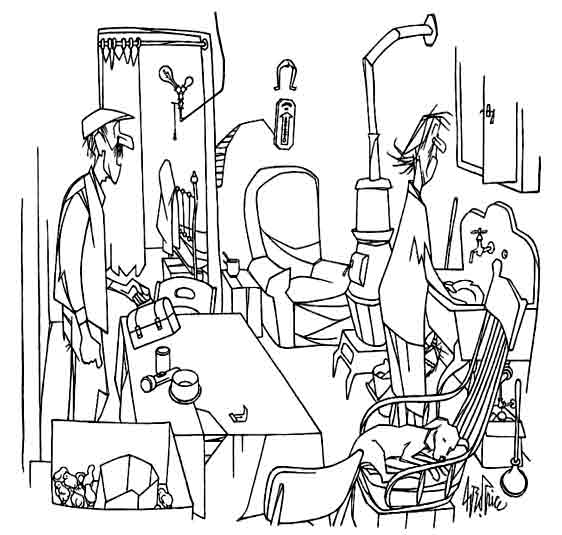
Readers Write #71 July 2020
Gasbags,
Norwegian wreckage,
and better by night.
Balloon-busting on the Western Front in World War One seems like fun,
compared with war in the air. German observation balloons were big. How
could you miss a target that was 70 yards long and 20 wide? The
balloon couldn’t dodge, it couldn’t fire back, and it was full of
incendiary gas. Balloons looked absurd, out of place in a modern
war. Yet balloon-busting was so dangerous that the RFC reckoned
that one balloon destroyed was the equivalent of three enemy aircraft
shot down.. Here (thanks to John Kush) is a German balloon being
towed to its launch pad.
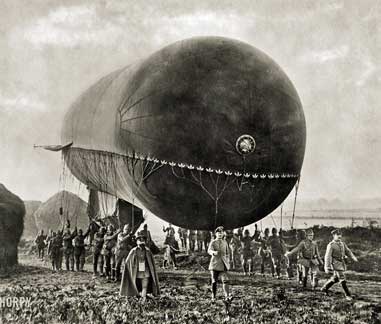
There
was a good reason why observation balloons were valuable, and why the
RFC tried so hard to get rid of them. 1914-18 was the first war when
soldiers never saw their enemy unless one side emerged and attacked the
other. By 1917, the Germans had 170 observation balloons, each four
miles behind the Lines and two miles apart, capable of flying at up to
6,000 feet. (Allied balloons were similar.) In his wicker
basket, the observer with his telescope could see as much as 60
miles. He had a clear view of the enemy’s layout. With his
telephone link he could direct artillery fire onto promising targets,
and correct near-misses. He could identify any unusual activity
that might mean an attack was being planned. Observation balloons
were the spy in the sky, and Allied artillery tried hard to destroy
them. Total failure. So the RFC got the job. First problem: how to get
near the bloody balloon.
Each German launch
site was surrounded by guns that, when the balloon was flying, could
saturate the approaches to it. Their shellfire was assisted by heavy
machine guns whose bullets could reach 6,000 feet, and by rocket guns
that sent ‘flaming onions’, bright balls of fire that soared towards
the aircraft. If the fighter pilot survived this barrage, he had to get
close to the balloon so that his incendiary bullets would
work - beyond 150 yard they would
be useless. And if he hit it, there was no guarantee that the
balloon would burn; wet weather and cold air had odd effects on
its gas. If it did burn, the observer had ample time to parachute to
safety.
Fighter pilots used two ways to avoid
the flak: either fly low, about 20 feet, to the balloon site and
then climb steeply, or fly very high, preferably above cloud, and
power-dive on the balloon before anyone had spotted them. Both
methods had risks of their own. And even beating the defensive fire
might be disastrous. Germans sometimes discouraged attack by
replacing the observer with high explosive and blowing both the balloon
and the fighter to bits.
Few RFC pilots liked
balloon-busting. Most squadrons decided that a pilot who destroyed a
balloon would never be sent to hit another; one was enough.
Balloons, both German and Allied, were a symptom of why the
Trench War lasted almost four years. What both sides could see
was a stalemate.
Fast-forward
twenty-three years. You may be surprised to know that, in the
summer of 1941, the RAF was flying B-17 Flying Fortresses in raids on
German targets when America was, strictly speaking, neutral. Jon,
in Norway, told me that his grandfather had seen the evidence of such a
raid. It happened on 8 September 1941, a few months after the Blitz had
ended and while German armies were storming into Russia. On that
day, Jon said, ‘Messerschmitt Bf109s took off from Stavanger (in
Occupied Norway) to intercept four RAF B-17s of 90 Squadron from
Scotland, aiming to bomb the battleship Admiral Scheer at port in
Oslo.’ (German warships in Norway threatened British convoys to
Russia.) The B-17s never reached their target. One 109 hit
a B-17 with cannonfire, blew holes in it, set an engine on fire, and
the bomber exploded before it could hit the sea. Jon describes how
‘Leutnant Alfred Jakobi shot down another B-17 over a remote valley in
southern Norway. My grandfather, Gunnar Rysstad, saw it crash. It
caused a fire in the hills. The local Nazi asked Gunnar to put it
out. Gunnar told him to sod off - after all, the
Nazis had started it. Nazis don’t like to be told off, and Gunnar had
to run. My grandfather was on the lam when he met a smart and
strong daughter of a physics professor and she wanted the young
fugitive for her huband.’ They married, had a daughter, and
that’s how Jon came to be.
No surprise
that the RAF welcomed the Fortresses. In 1941, every air force in
Europe operated two-engined bombers; now, suddenly, the RAF had
twenty brand-new four-engined bombers, part of President Roosevelt’s
policy of shipping war material to Britain despite strong isolationist
feeling at home.
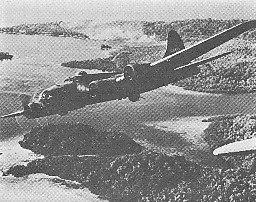
What
America got out of it was an opportunity to test the B-17 in war, and
on 8 July 1941 three Fortresses took part in a daylight raid on
Wilhelmshaven; all returned. Other daylight operations followed.
With a crew of nine or ten and up to fourteen machine guns, the B-17
was believed to be able to defend itself. The op on 8 September
proved otherwise. Two of the four B-17s were shot down and a
third crashed on landing. The RAF ceased daylight raids and donated the
Fortresses to Coastal Command and the Desert Air Force.
The
fact was that the RAF Fortress wasn’t strong enough. It lacked
power-operated gun turrets, adequate armour, and self-sealing fuel
tanks. Boeing - which had experience in making
airliners - got to work and made a better B-17,
yet there was little they could do about its bombload, which was very
limited. The Fortress had been the product of a 1934 requirement, and
it had signs of 1934 thinking. The heaviest bomb the B-17 could carry
was 2,000 pounds. Even the Wellington could carry a
4,000-pounder, and the Lancaster had a bomb-bay that was 33 feet
long and could carry a 22,000 bomb.
When
the U.S. joined the war, it had to fight with what it had,
which included the B-17 with its small bombload. So America
built 14,000 of them. With numbers like that, they delivered a big
punch.
Finally, my thanks to
readers - too many to list - who
enjoyed ‘Odds & Sods’. As one said: ‘You ain’t lost your
touch.’
--------------------------------------------------------------------------------------------------------------
Readers Write #72 Sept 2020
Fat Albert, the Mk.1 eyeball,
and the salty violin.
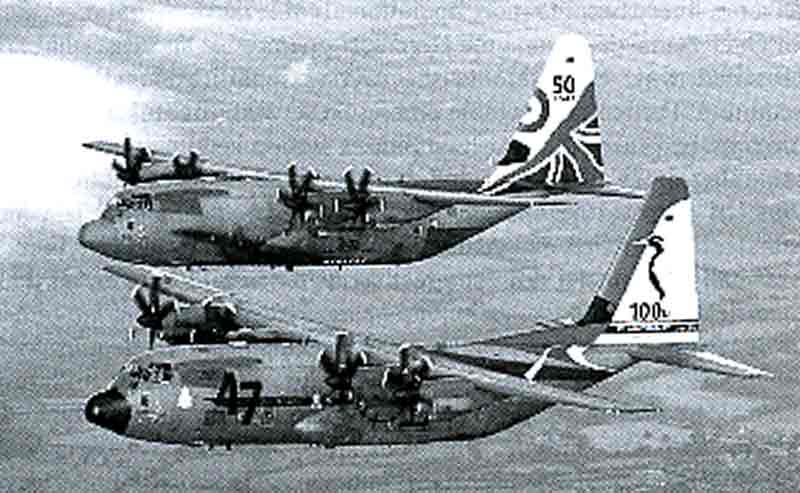
These
two Hercules, with special paint schemes on their rudders, celebrated
their 50th year in RAF service, and No 47 Squadron’s 100th birthday in
2016. The RAF took delivery of 66 aircraft in 1967 and the
Hercules is still going strong, with 1.75 million-plus hours on the
clock. Lockheed designed it as a transport for troops, medevac or
cargo. Its freight bay is 41 feet long, 9 feet high and 10 feet wide,
and the aircraft weighs upward of 100 tons - yet it’s able
to use unprepared runways for takeoffs and landings.
The
Hercules is very strong, very agile, and a pleasure to fly, and it
holds the longest continuous production run of any military aircraft
and the worst nickname - ‘Fat
Albert’ - which in fact applied only to a
single aircraft in the U.S. Navy’s display team. Forget Fat
Albert. The Hercules has successfully tackled many tasks throughout the
world, including Zimbabwe when it was Rhodesia.
In
1979, the civil war in Rhodesia - Ian
Smith’s Whites against Robert Mugabe’s Blacks - had been
going on for the best part of 14 years, until the Lancaster House talks
persuaded both sides to hold elections. A Commonwealth Monitoring Force
(CMF) would ensure fair play. The British Army sent
soldiers; the R.A.F. sent Hercules. It wasn’t going to be
easy. The country was bigger than Germany, with a population of
only 7 million. The Patriotic Front fighters were somewhere in the
bush, there was no way to communicate with them, and they might well
mistake the CMF for the enemy.
A
year later, I interviewed soldiers and airmen of the CMF for BBC
Radio. White Rhodesians, they said, had told them that if they
went into the bush they’d never be seen again. British soldiers
would be wiped out, Hercules would be shot down. Not
surprisingly, the Patriotic Front was trigger-happy - that’s how
they survived. The Army used tact, good humour, promises and
intelligence, and they persuaded the PF not to fire. But the PF
was jumpy. A Scottish soldier told me that, deep in the bush, he
was asked by a PF fighter what his shoulder badge meant. ‘That’s the
Black Watch,’ he said, and immediately realised his
mistake. It took a lot of explaining. The PF had a
cast-iron rule: every fighter must always keep his weapon
at hand, in case of attack. One PF force camped at a ruined
building which had an old bath. A fighter filled the bath and got
in - with his rocket launcher, which fired and killed
him. The camp believed it was ambushed, and it took a long
time for the nearby British camp to reassure them.
For
Hercules’ aircrews, the first problem was to locate the PF, and the
next was how to survive an air drop. It was known that some PF
had SAM-7s, effective up to a height of 14,000 feet, and guns
galore. Bear in mind that the PF were used to seeing South
African Hercules operating in support of their enemy. Also that,
in 1979, R.A.F. Hercules had very little electronic equipment. ‘The
best aid for tactical flying,’ one pilot said, ‘was the Mk 1
eyeball.’ Flying fast and low over the bush seemed advisable.
Practice showed that this was 300 knots and 60 feet. ‘In an
aircraft with a 133-foot wingspan, this required a great deal of
concentration,’ another pilot said.
They
flew three sorties a day. (The PF were large and scattered,
they had nothing, they needed everything.) Bird strikes were
always a danger. Tracer was sometimes seen. The Hercules was both
rugged and powerful, qualities that were invaluable. In the
end, thanks to the Hercules’ resupply (the country was short of
essentials), the CMF kept the truce, the elections were held, Rhodesia
became Zimbabwe.
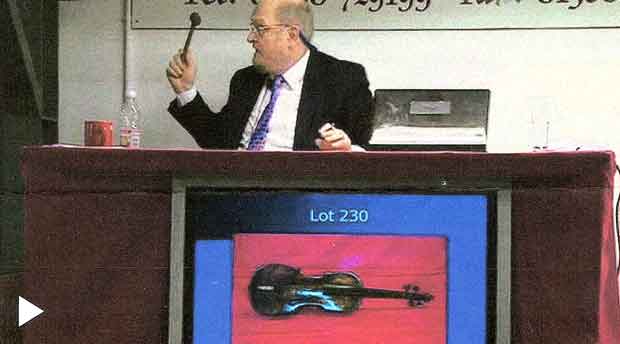
Thanks
to Laurence McMurdie for this picture of the Titanic violin that
fetched £900,000 at auction in 2013. (The bidding started at
£50.) In Never Mind The Facts (a
few copies still available) I exploded the myth that the band played on
as the liner went down - the ship
was listing so severely that the band would have fallen in the
sea. The violin belonged to the band leader, Wallace Hartley, and
it was found in a leather case strapped to his body. The fiddle
is still stained with sea water. It gives a final knock on the head for
the myth.
--------------------------------------------------------------------------------------------------
Readers Write #73 Nov 2020
Pride and Persistence,
Airmail, snailmail,
and Goshawk flies again.
The single great advantage of democracy is that, every few years, we
get the chance to throw the scoundrels out and elect somebody better,
or at least different. Which is a great improvement on the
Regency period, two hundred and a bit years ago, when the Prince
Regent was in charge and he was too fat, too selfish, and too
obsessed with fashion, womanising, and the power of the monarchy.
He was also a great fan of Jane Austen’s novels, so much so that he had
a complete set of them in each of his residences. This must have struck
the author as a backhanded compliment, since she intensely
disapproved of the Prince and her novels made fun of the system that
placed women in the secondclass category. Life for women in Regency
times was a very bad joke indeed.
Every
novel is a gamble, and Jane Austen was a great example of
tenacity. The Regency threw every obstacle in the way of women
authors and she never quit. She wrote Pride and Prejudice, sent it to a publisher and he rejected it without reading a word. She wrote Northanger Abbey and a different publisher bought it for a tenner and never published it. (Years later, she bought the rights back.) She wrote Sense and Sensibility and
a third publisher made her pay for the printing and advertising. The
novel appeared only because it was sold on commission, meaning that a
group of people agreed in advance to buy it. Most novels were
published in editions of only 500 (handmade paper was expensive) and
sold for 15 shillings a copy - at
least £50 in modern money and a price that only the Regency gentry
could afford. So what did Jane get out of her hard work?
Not
fame. In her lifetime, her novels were anonymous, with ‘By
a Lady’ on their title pages. Not social change. She died in 1817
at the age of 41, when the Prince Regent was staunchly
reactionary. What she got from her novels was a sense of
satisfaction and a hope that posterity would read them and learn. Her
tenacity was admirable, and it’s a model for every writer. Talent
without determination goes nowhere.
Moving
on. You may have noticed that the skies are empty of aircraft.
This is a knock-on effect of Covid-19. Nobody is flying anywhere,
airlines are going bust, and one unhappy result of this is that
airmail postal rates have doubled. Six months ago, when I sent Odds & Sods plus NMTF
to readers in the USA, the airmail postage for that package was
£7. Now it’s £14. (Mailing by seamail would cost £4.84, but
seamail is painfully slow.) The Post Office tells me that the big
increase is because Covid-19 means few cargo planes fly across the
Atlantic, and that the new airmail rates apply to every
English-speaking country.
-------------------------------------------------------------------------------------
Readers Write #74 Jan 2021
Prangs,
Before jet engines and pressurised cabins, flying was dangerous. Half the
deaths in the Royal Flying Corps were during training, and the situation was
not much better in World War Two, when RAF Training Command recorded 8,803
deaths in training or accidents. (In the USA, flying training killed
15,000.)
When war broke out, one of the main RAF
bombers was the Handley-Page Hampden. In 1939, Lawrence Wheatley
qualified as an Observer/Navigator on a Hampden squadron. The bad news
was that he was soon grounded by the medics, but this probably saved his life.
Of the 48 men who completed his Air Observer course, 28 died in action or in
flying accidents.

The Hampden was known as the Flying Suitcase, and you
can see why. There were six squadrons of Hampdens in 1939, and it
was popular with aircrews. Its Pegasus engines carried it on 16,541 sorties
(and usually brought it back again). Twenty Hampdens bombed Berlin on 25
August 1940 in retaliation for the German (accidental) bombing of London.
It was one of seven raids that Hampdens made on Berlin. This was a round trip
of 1,150 miles which might take five hours, often more if they faced a head
wind. There were hazards apart from enemy flak and fighters. It was bitterly
cold at 15,000 feet. Navigation was by dead-reckoning and the predicted winds
were sometimes wrong. Nevertheless, Hampdens repeatedly bombed Germany,
which was a humiliating shock to Hermann Goering, head of the Luftwaffe, who
had promised the German people that their country would be impregnable.
The Hampden even dropped a 2,000-pound bomb on the battleship Scharnhorst.
After the final Hampden attack
on 14 September 1942, the bomber was withdrawn from operations. Soviet Russia
was demanding British aid in the battle against Nazi invasion, and the decision
was taken to send 32 Hampdens. It is not hard to imagine the thoughts of the
aircrews at the news that they were to fly to Russia.
The raids on Berlin had been at the
Hampden’s limit of their fuel capacity, and the flight to northern Russia would
be longer: about 1,200 miles. Even with extra fuel tanks, the Russian trip
would be hairy. The Hampden cockpit was cramped: the pilots would be in their
seats for seven or eight hours. What’s more, the aircraft were not new; they
had flown a lot of ops over Germany. One - AE436 of 144
Squadron - had been part of the Thousand Bomber Raid on Cologne in
31 May 1942. They faced a long route from Shetland, around the north of
Occupied Norway and neutral Sweden, to a Russian airfield near the Finnish
border. A Swedish citizen, Per Kjellberg, who reads my books in English,
told the story of those 32 Hampdens, and in particular of
AE436.
The story began in 1976, when a Swedish teenager, Ake
Wahlqvist, was hiking in the remote mountains, alone except for a few wild
reindeer. He climbed the great peak of Tsata, admired the stunning view, and
descended a few hundred metres to a stony slope. He noticed scraps of metal. He
went on and was the first person to find AE436. It was a tangled wreck.
Scattered around were ammunition, machine guns, oxygen bottles, flying
overalls, handguns, parachutes and human bones. Nobody had been there since
1942.
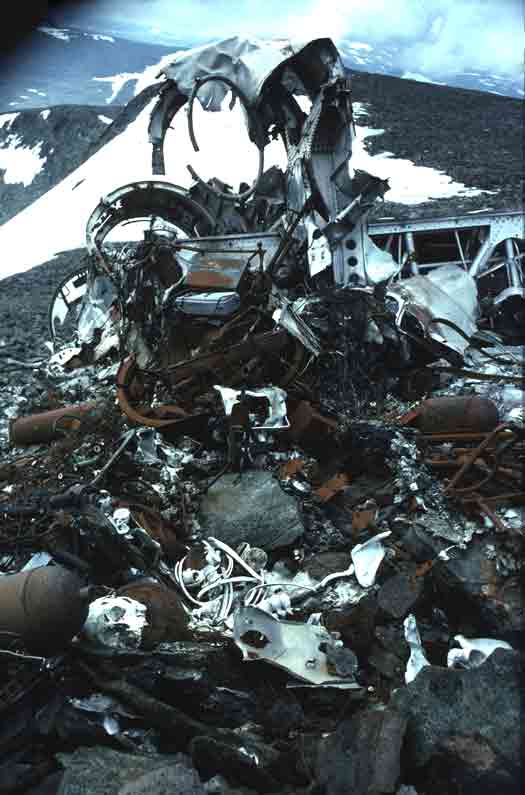
Sweden gave the three Canadians a
military funeral. The Swedish Air Force recovered the wrecked AE436 and shipped
it to the UK.
My thanks to Per Kjellberg.
*****
Back to books. I could never take Henry James’
novels seriously after he wrote of a character that she ‘ejaculated
capriciously’. I once mistakenly promised to contribute a chapter on
Tolkein’s output, choosing to write about the author’s humour. The difficulty
was that there is precious little of it. I found five lame puns in all of
his fiction. This is the trouble with fantasy - it’s too easy
to solve a problem when you can magic it away. A large part of fiction is
things going wrong. In Cake, Moggy Cattermole is often a shit, but
he’s an essential shit. A fighter commander in the Battle of Britain told me
that he recognised Cattermole: ‘Every squadron needs one. Just one.
Bad for discipline, good for morale.’ If I had sanitised Cattermole (as
some Puritans suggested) the story would have been weaker. Tolkein was a
historian before he was a novelist and when he wrote about the Norman Conquest
he was on shaky ground because he hated France and everything French. He
loathed the phrase cul-de-sac and he replaced it with Bag End
in his stories. Every time he saw cul-de-sac on a street sign, his
rage overflowed. Clive James (no relation) once defined humour as ‘commonsense
at high speed’, and he would have found comic elements in Tolkein’s sensitive
ego. Humour is one of the essential colours in the spectrum, and ignoring
humour doesn’t make a book more serious; it makes it less real. When Nina
Bawden reviewed Goshawk Squadron fifty years ago, she wrote: ‘I
laughed aloud, several times. And was, in the end, reduced to tears.’
Laughter and tears are not incompatible.
Odd flying machines, horsemeat, and
lockdown bonus.
Birds have been flying since the world began, and yet few designers of
aircraft in the decade before WW1 copied them. Many of their
designs were highly improbable. In 1910, the Committee of
Imperial Defence advised the Government that 'the experiments with
aeroplanes should be discontinued' and the whole madness be left to
private enterprise. Nobody was surprised. Some army
officers learned to fly; they believed in aerial reconnaissance.
The cavalry dismissed the idea. Reconnaissance was their
preserve. Horses didn't fall out of the sky.
Nevertheless, a Royal Flying Corps was formed in 1912, and it held a competition to find the best type of military aeroplane. The Corps' rules say a lot about the generals' hopes. An aircraft had to reach 55 mph: slower than some Edwardian racing cars. It had to 'rise without damage from long grass, clover or harrowed land in 100 yards' and it had to 'land without damage on any cultivated ground, including rough plough'. Airfields were unknown then, and it seems the judges expected a machine with the same resilience as a cavalry horse.
This may explain the bizarre design of Bleriot's entry, called the Aerial Wheel. It was propelled by a single wheel of 12 feet diameter, big enough to revolve around the wing and the propeller. The inventor claimed it could land on uneven ground without damage. It never flew.
The contest attracted applications for 32 aeroplanes from several nations. Eight never appeared. Others failed to take off. One of the rules required that the pilot must have a clear sight of the country, yet one entry, the Avro Type G biplane, had an enclosed cabin with no forward view. Landing the thing must have been a challenge. Other designs were even stranger. The War office knew nothing about military aircraft, so it was not surprising that the winner was the least practical aeroplane on show. It was the monoplane of Colonel Cody (not to be confused with Buffalo Bill Cody). It had a very long wingspan of 43 feet and a tail unit like a big box kite that was attached to the fuselage by lengths of bamboo. His plane hit a cow as Cody was landing, killed the cow, Cody survived but his machine was wrecked. Not that it mattered. The design was never copied. Here it is:
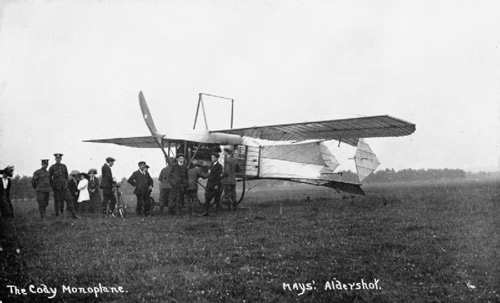
Cody IV experimental aircraft 21 June 1912
This
is photograph RAE-O 561a from the collections of the Imperial War Museums.
World War One was a matter of trenches and artillery. After
the initial skirmishing, the 7,000 mounted cavalry in the British
Expeditionary Force had nothing to do. They had no answer to
German machine-gun fire and the shell-holes that littered
no-man's-land. The RFC (plus observers in baskets below balloons)
provided reconnaissance for the next four years. The cavalry
never gave up hope of pouring through a hole in the German defences and
doing their stuff in the countryside beyond. In May 1915, Sir
John French, who commanded the BEF and was always happy to be on a
horse, wrote: "How I should love to have a real good 'go' at them
in the open with lots of cavalry and horse artillery and run them to
earth. Well! It may come." But it never did.
*****
Readers' emails arrive. Jo in Australia hungered for my novels, but Covid-19 has doubled or tripled the cost of airmail, so he bought secondhand copies from ABE books. Michael, perhaps in Europe, thanked me 'for the many hours of joy that you've given me', especially during 'a very difficult period in my life'. (Fiction can be therapy too.) Eric in New Zealand is 're-re-re-reading Goshawk Squadron for the umpteenth time and still enjoying it'. Martyn, somewhere in the UK, is now 'halfway through your RFC/RAF series' and says my books 'have been a real personal bright spot in this latest lockdown'. Happy to hear it. My thanks to all who wrote.
__________________________________________________________________________________________________________________NEW BOOK - Odds & Sods Mk 2
|
|
This sequel has more of my Notes from Everywhere, including: - Snatch gliders and Doodlebugs ... and much more. |
After a year of lockdown, it's time for a change. Down through the years, I've researched the background of my novels and found much useless stuff, often allegedly humorous. All humour is capable of offending someone. Here's a selection:
(1) A driver stops when he sees a hitchhiker who has three heads, no arms and one leg.The driver says: "Hullo hullo hullo. You look 'armless. Hop in."
(2)The Fabian Society holds a demo.They chant:
"What do we
want? The inevitability of gradualism!
When do we want it? As soon
as is reasonably possible."
(3) This limerick is bound to upset someone:
On the breast
of a barmaid from Sale
Was tattooed the price of brown
ale,
And on her behind,
For the sake
of the blind,
Was the same information in
Braille.
Everyone has a book in him, unfortunately. As someone said:
"A novel must be exceptionally good to live as long as the average cat."
Here's a cartoon about fiction:
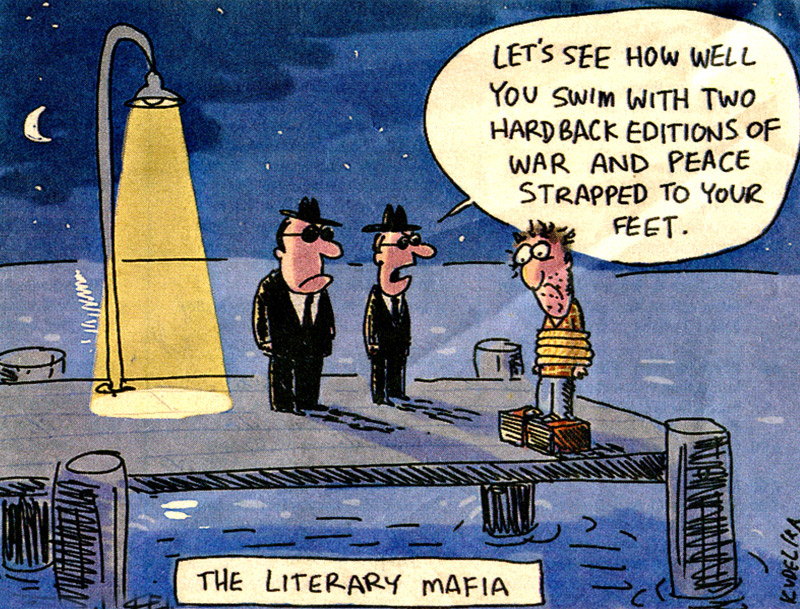
'There are basically four thrusts, known as the cartilage, the
chaise longue, the aubergine and the fromage anglais. These can
be parried by four defensive feints - the pastiche, the penchant, the
demitasse and the salmon en croute. Scoring is on the basis of
one point for a petit pois and two for a baguette. Actually, I
don't have the faintest notion of what goes on in fencing.'
Next, poetry. Dorothy Parker hit the spot in four lines:
Oh life is a
glorious cycle of song,
A medley of
extemporanea:
And love is a thing that can
never go wrong:
And I am Marie of Roumania.
(There once was a queen of Romania called Marie.)
And politics? Abraham Lincoln was once asked if an opponent, Simon Cameron, was honest. Lincoln said: "He would not steal a red-hot stove." Later challenged over this, Lincoln said: "Oh well, I apologise. I said that Cameron would not steal a red-hot stove. I withdraw that statement."
And here's another literary cartoon:
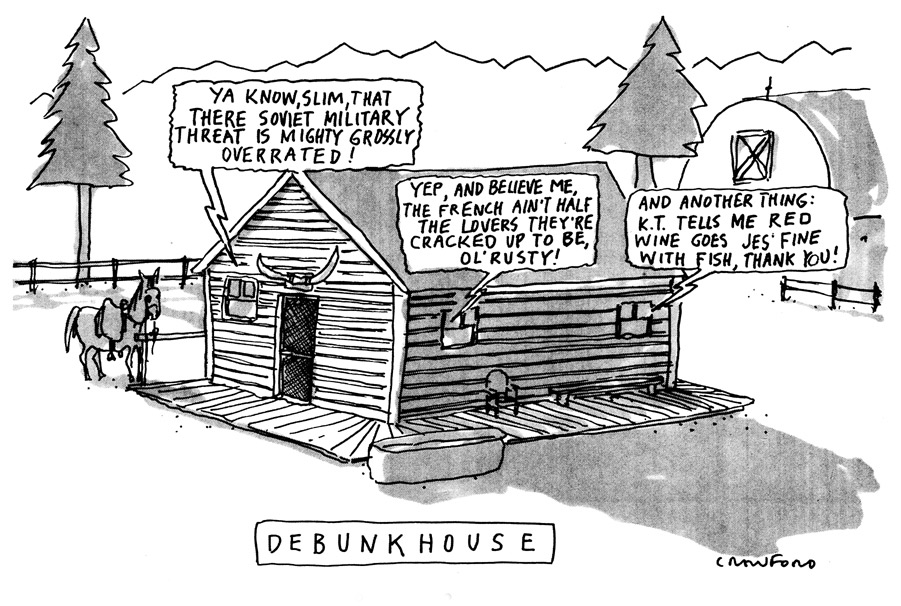
An American senator grew tired of his badtempered mail, and so he sent critics a short letter. It said: "Some crackpot is writing me letters and forging your name."
And a future President of the US, General Ulysses S. Grant, was reviewing his troops when his horse kicked up its hind leg and put its foot in the stirrup. Grant said: "If you're gettin' on, I'm gettin' off."
Lastly: some American companies have a softball team (like baseball but soft) that plays after work. This New Yorker cartoon skewers bad management:
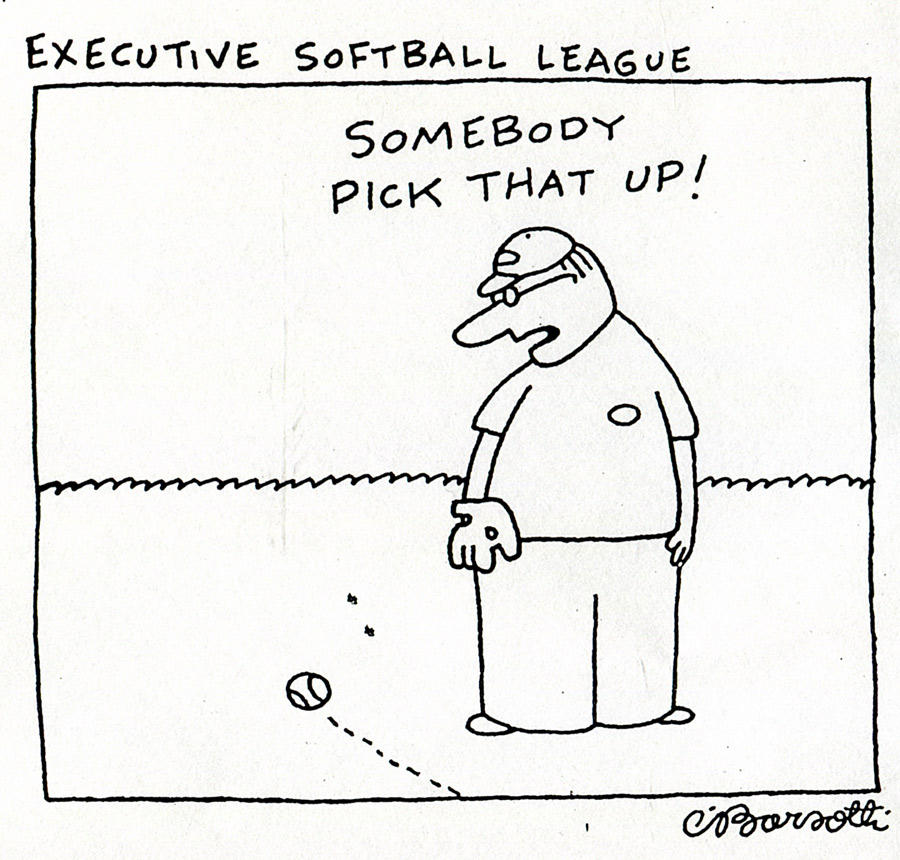
Readers Write #77 May 2021
4,840 Yaks, 1,523 factories, and echoes from the past.
Russia was lucky to have Aleksandr Yakovlev, a brilliant aircraft designer whose Yak-1 fighter first flew in 1940. (Just as Britain was lucky to have Reginald Mitchell and Sydney Camm, who designed the Spitfire and the Hurricane.) The Yak was a small, light fighter, and probably the most manoeuvrable aircraft of its time. The Soviet government recognised Yakovlev’s brilliance: it awarded him the Order of Lenin, a Zis car and a prize of 100,000 roubles.
When Germany invaded Russia, the Yak-3 proved a match for the Luftwaffe - German pilots were ordered to avoid dogfighting the Yak-3s below 5,000 metres. The Yak-3 was armed with a 20 mm cannon in the nose cone, a machine gun in each wing, and sometimes six rockets for ground attack. Its V-12 engine produced 1350 hp, and the Yak’s power-to-weight ratio gave it a top speed of well over 400 mph. At low level, where Yaks usually operated, it was lethal. Here it is, courtesy of Wayne Dingle in New Zealand, who enjoyed his half-hour in the fighter (‘My bucket list for the month’). He found it ‘great fun'.
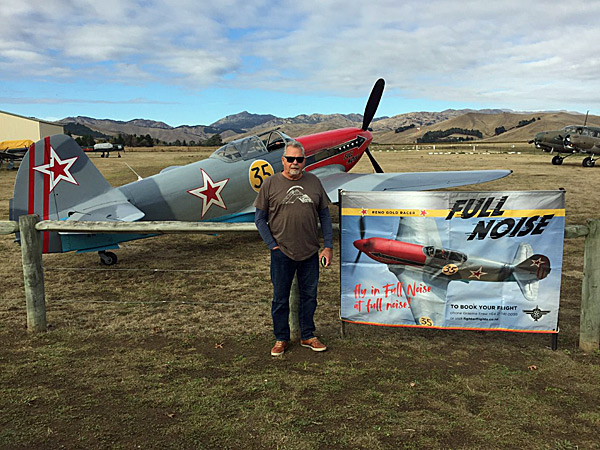
Yaks were remarkable for being partly made of wood, plywood and fabric - aluminium was scarce in Russia. Steel tubes in the fuselage and wing provided structure, but ribs were wooden and the skin was of plywood. A thick coat of polish gave it a metallic smoothness. Inevitably, the Yaks’ construction made them vulnerable in combat. A total of 4,848 Yak-3s were built; few survived, and the survivors are not airworthy. Enter Sergei Yakovlev.
He is the son of the great Aleksandr Yakovlev. He contacted an American company called Flight Magic, and they used the original engineering drawings to build ten new Yak-3s, now with all-metal construction. In 1999 one crashed, and a man named Graeme Frew bought the remains, shipped them to New Zealand and, over the next four years, painstakingly rebuilt the fighter as a two-seater – which made it possible for Wayne to experience a Second War fighter. Aleksandr Yakovlev would be proud of Graeme.
********************
Hitler’s invasion rapidly crushed the Soviet armies in western Russia, but it failed to achieve his planned swift victory. This was partly because, in the first three months of that war, the Soviet Union shipped eastward the machinery of 1,523 factories and relocated them in the Urals, Western Siberia and elsewhere, far beyond the reach of his Panzers. Stalin gave the orders, but the colossal evacuation was directed by a little-known economic genius, A.I. Mikoyan. He made possible ‘a second industrial revolution in the Soviet Union’ by rescuing factories from the Germans’ path, loading their plant on railway wagons, and speeding them to the east.
One example gives a hint of this huge task. In September 1941, Mikoyan ordered the heavy-machine-tool works at Novo-Kramatorsk to empty its workshops (including the only 10,000-ton presses in Russia), and head for the Urals. Once there, the plants were in production again amazingly quickly: the Kharkov Tank Works was transplanted to Chelyabinsk, and just ten weeks after leaving Kharkov it produced its first T-34 tanks. Hitler made the blunder of underestimating his enemy. In 1941, Soviet factories made more tanks, aircraft and guns than Germany did. Men like Yakovlev and Mikoyan, plus the Russian winter, stopped Hitler.
********************
Copies of Odds & Sods Mk2 have gone around the world, to USA, Canada, Australia, New Zealand and several nations in Europe, plus of course to the UK.
Charlie Webster, in Oxford, told me the book ‘has been consumed voraciously’, and he added further information to my report about the unhappy life of Lawrence of Arabia. When Charlie worked at the publishers Jonathan Cape, he found a contract in the archive, signed by G.B.Shaw, who had represented T.E.Lawrence. The document was about the publisher’s right to a second book from Lawrence, and someone had hand-written a comment: ‘If the said author, after the annoyances and vexations of getting Seven Pillars of Wisdom into print, is ass enough to try again!’ The uncrowned King of Arabia was not completely popular at Cape.
Meanwhile, Martyn in Shropshire has read most of my stuff, and said of Why 1914? -‘I found this book really raced along’, which is a rare compliment for a military history. He added: ‘Your books have been an eye-opener for me.’ My thanks to all who wrote.
|
|
Same price: £7.50 including postage in the UK. Interested? Contact delrobster@gmail.com Readers' verdicts on Mk 2: 'Just finished O&S Mk2. it was a delight from SnatchTailpiece.' (From start to finish.) - John Kush to 'Fascinating, with quick wit and twists and turns that take the reader behind the scenes of real events.' - Bill Stroud 'It has left me anxiously awaiting your Mk3.' - Ken Nickel |
*******************************************************
Readers Write #78 July 2021
Pork pies, a Canadian Shark, and a brewer's Stuka.
War breeds myths. In World War One, no German officer ever said that the British soldier is a lion led by donkeys. That was a postwar invention. In WW2, when France fell it was a myth that ‘Britain stood alone’. Many servicemen had escaped from Europe to join the Allied fight: in 1940 3,000 Czechs, 15.000 Norwegians and 18,000 Poles (plus other nationalities) were in the British Armed Forces. What’s more, the Empire and Commonwealth made large contributions to our defence. An Australian infantry division and two New Zealand brigades reached Britain in June 1940, just after Dunkirk; so did a Newfoundland artillery unit. A Canadian infantry division had been in Britain since the spring; a second division landed in September. Canada was especially valuable to Britain. The Hurricanes of No.1 Squadron, Royal Canadian Air Force, flew in the Battle of Britain, and Canadian aircrew made their mark in WW2. One pilot was outstanding, and his son Peter told me his remarkable story.
John Wright, known as ‘Gary’, was 18 when he enlisted in Ottawa in 1940. He trained as a pilot, came to Britain and was 19 when he flew with 1 Squadron RCAF. Then he volunteered for the North African campaign. In July 1942 he joined No.112 Squadron RAF (Shark Squadron) and he flew Kittyhawks until the German surrender in Tunisia, by which time he had won the DFC. Here he is with his fighter in Africa.
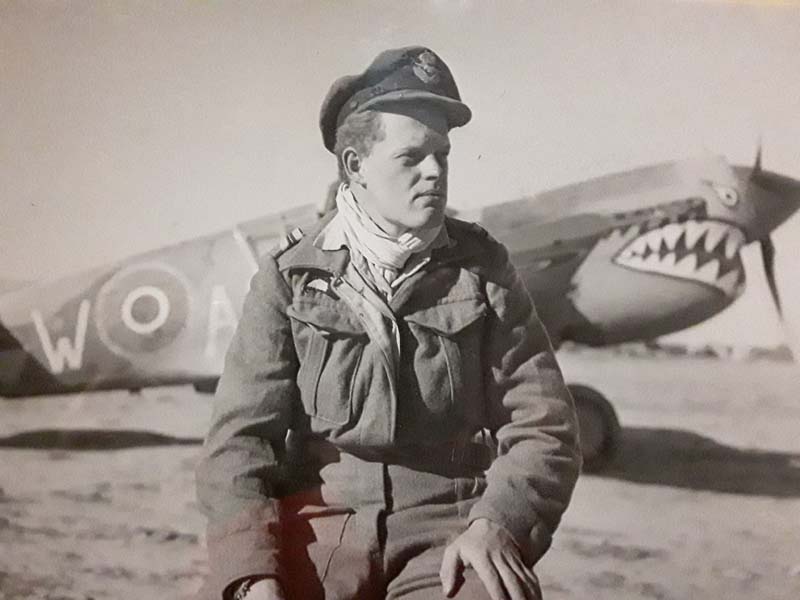
By now he was 21 and a very experienced fighter pilot. Gary Wright served as an instructor in an Operational Training Unit - often considered more hazardous than combat operations - and then he transferred to No. 442 RCAF as a flight commander, flying Spitfires in Johnnie Johnson’s wing in the Normandy invasion. Johnson was a high-scoring fighter pilot, so action was hectic. Gary Wright ended the war as a flight lieutenant - and immediately switched to the Royal Canadian Navy, where he flew off carriers: in those days, a risky business. Clearly, Gary couldn’t get enough flying.
*************************************************
My ‘Odds & Sods’ has a section called Horseplay, with examples of off-duty high jinks. Gary Wright rarely talked about the war, but he told Peter about his memories of horseplay in North Africa. His squadron was in a hotel in Alexandria when a large potted plant got tipped over the balcony. Nothing to get excited about (drink had been taken), but the pot had hit a horse and flattened it. The squadron went downstairs. The horse belonged to a merchant, and it had pulled his cart; so his livelihood was harmed. The pilots felt guilty. How much was a dead horse worth? They passed the hat. The collection satisfied the merchant. He unbuckled the horse’s harness, pushed the cart, and went on his way.Whereupon the horse recovered and stood up. Now the squadron owned the horse, so they took it back to their hotel room.Which is another story.
‘Up the blue’- slang for in the desert - Gary’s squadron found a fairly intact Junkers 87 Stuka divebomber. Their mechanics made it flyable, painted it orange with RAF roundels, and it got flown for fun by pilots of Shark Squadron. The Stuka was a two-seater, with ample space, so they used it for beer and food runs to Cairo, always with a Kittyhawk escort. Why not? Johnnie Johnson did much the same thing in Normandy. Here’s his Spitfire’s brewer’s dray to prove it.
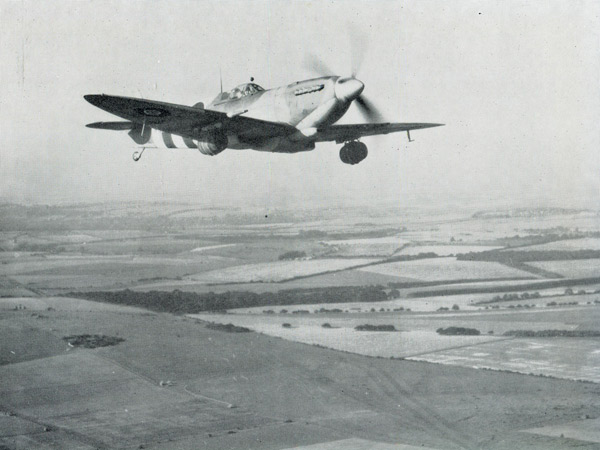
*********************************************************************************
Readers Write #79 September 2021
Swift exit for Mussolini.
In 1940, Musso badly needed a victory. He had watched as Hitler's blitzkrieg had stormed across Europe, and at the last minute Italy became an ally of Germany, hoping to get a chunk of France. But when Italy intervened, the Italian invaders got a bloody nose from French soldiers. In June 1940 the Italian battle fleet had to retreat, damaged by British warships in the Mediterranean. The Italian army had camped inside Egypt, built strongpoints, and showed no sign of moving.
Mussolini hoped to get some glory from Hitler's threatened invasion of Britain. He offered the Italian air force to help the Luftwaffe throughout the Battle of Britain, and he was always declined. Then, in mid-September - when invasion seemed unlikely - Germany agreed. Mussolini's Corpo Aero Italiano flew to Belgium.
With 178 bombers and fighters, they might have made an impact. In fact it wasn't until 11 November that they went into action. On that day - coincidentally when British aircraft battered the Italian fleet at Taranto - an Italian force of ten bombers and forty fighters set out to attack Harwich, a British port 100 miles from Belgium. A few German Me-109s went with them, perhaps to navigate.
British radar found them and three squadrons of Hurricanes were scrambled. The Italian force was slow and ponderous, and the combat was a turkey shoot. The Italian CR42 fighter was a biplane with an open cockpit and fixed undercarriage; it lacked speed, armour and guns, but it was very agile. Mostly it dodged Hurricanes.
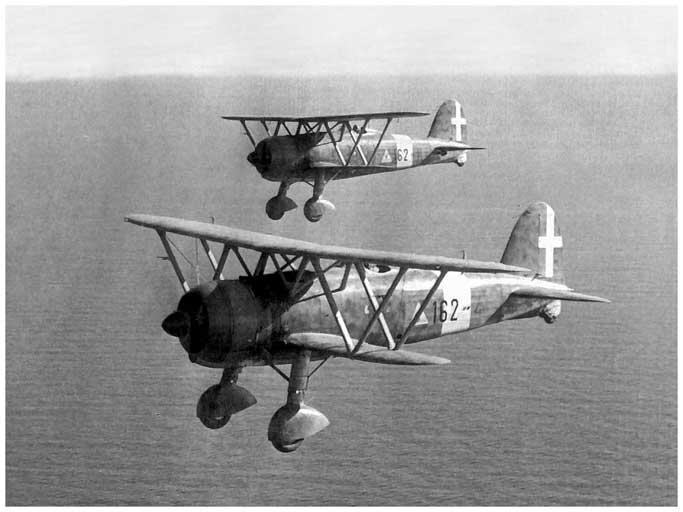
Three CR42s and six bombers were destroyed, and the cherry on the cake was the shooting down of a Messerschmidtt 109. The RAF squadrons had no loss. Harwich was spared. The folly of sending biplanes against Hurricanes was demonstrated by Flight Lieutenant 'Cowboy' Blatchford, a Canadian leading 257 squadron. In the fight he ran out of ammunition and he attacked the upper wing of a CR42 with his propeller, shredding it. The CR42 crashed. Blatchford landed safely, as this picture shows.
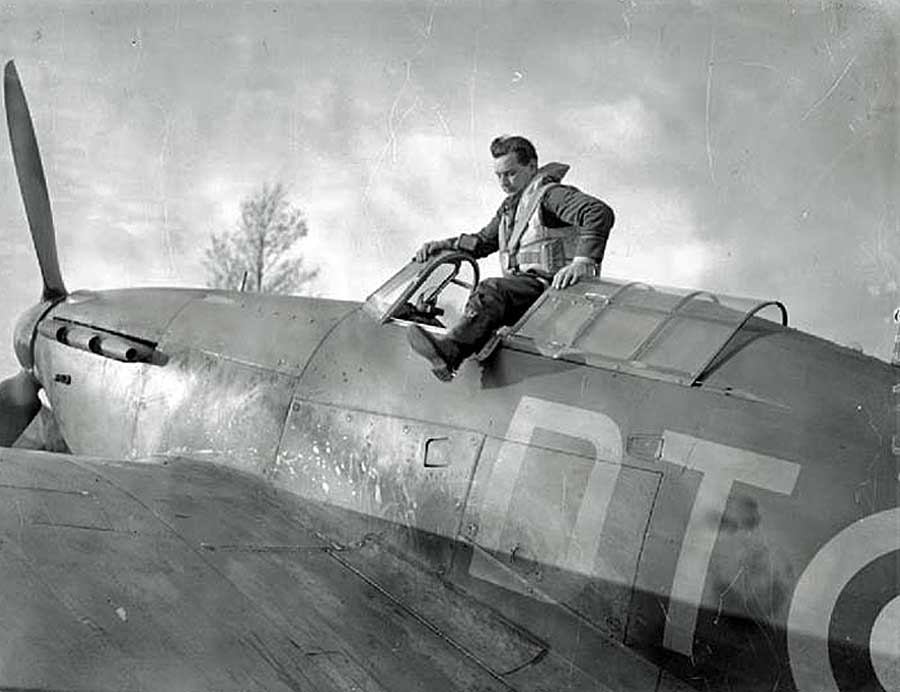
Clearly, the training and equipment of the Italian air force were inadequate. The Corpo left Belgium in the New Year. Mussolini looked to his army for victory. When Hitler invaded Russia, Mussolini sent a division to fight at Stalingrad. Same result.
*************************************************
The arrival of a special edition of Goshawk Squadron, celebrating its fifty years in print, got a tremendous review in The Times and a flurry of congratulations. It prompted Roger in London to get the novel: "Am enjoying it very much." Jonathan in Melbourne, Australia, told me: "I own and have read multiple times all of your RFC and RAF novels. They have amused, troubled and moved me over many readings and I remain grateful for the experience." He wondered about Churchill's questioning of the RAF's 'cricket scores' of enemy aircraft destroyed in the Battle, so soon before his 'The Few' speech. In fact there was no contradiction: Churchill's speeches were partly aimed at America, whose aid he desperately needed. 'The Few' speech reminded America that Britain was a pugnacious friend.
****************************************************************
Readers Write #80 November 2021
Goshawk Squadron by Derek Robinson review —
this savage portrait of war is a modern classic
This novel, first published 50 years ago, was championed by Saul Bellow and nearly won the Booker Prize. Review by Antonia Senior
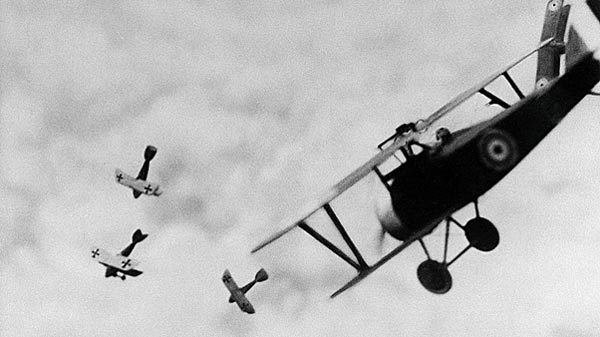
A British Sopwith Camel in battle with German biplanes during the First World War BETTMANN ARCHIVE/GETTY IMAGES
In 1971 an acerbic debut novel about fighter pilots in the First World War nearly won the Booker Prize. Goshawk Squadron was championed by Saul Bellow but it lost out to VS Naipaul's In a Free State. If Bellow had swayed his fellow judges, Derek Robinson would be a household name, rather than the darling of a small band of devotees.
Robinson, who is 89, has written 25 books, but Goshawk Squadron, reissued next week by MacLehose Press, remains his finest. It centres on the unforgettable figure of Stanley Woolley, the commanding officer of the squadron. He is 23, “young for a major and old for a pilot”. His pilots hate him and he hates them. He wants them to live, and drives them with an unceasing ferocity which teeters on madness.
The Royal Flying Corps pilots are being turned into heroes in the British press. Their aerial dogfights are seen as a noble counterpoint to the horror of the trenches. Lloyd George calls them “the cavalry of the sky”. Woolley knows this is utter rot. Their job is to lurk in a cloud and shoot the Germans in the back. As each replacement pilot arrives, full of enthusiasm and bombast, Woolley shatters their illusions.
“Every second you are in the air someone is trying to kill you,” Woolley tells one of the new recruits. “They go up every day and murder nice chaps like you.” Woolley, Robinson writes, “made nice chap sound like a genetic defect”.
The training is brutal. The pilots loathe Woolley’s relentless drills and dark harangues. Life in the cockpit is unpleasant; the castor oil fumes from the engine give them the runs, and they try to block their bowels with booze. Robinson, who served in the RAF during his National Service, is particularly convincing in conjuring up the boozy banter of these young men and their wild fatalism.
As the squadron’s death toll mounts, young replacements arrive, 19 years old, fresh from school, so green they do not even know how to turn a plane. Two newbies discuss “the old man”, his scruffiness, his violence, his insistence on fighting dirty. One idealist says: “It’s absolute nonsense to say that chivalrous men can’t fight a chivalrous war. That’s why I put in for the RFC. We’re literally the only sportsmen left.” He does not last long. Some survive longer: girl-mad Killion, who dreams of nurses but when he meets one is “young and trembling with desperation”; Gabriel, whose religious fervour and refusal to drink before lunchtime make him a figure of suspicion.
Not all the characters are men. There is Margery, a nurse who loves Woolley. Her romantic notions of the war were soon shattered by the squalid reality of nursing on the front. She understands Woolley’s nihilism, although she finds it painful. There are glimpses in his relationship with Margery of the man he could have been if the war had not pushed him into a logical, necessary brutality.
The Germans are not Woolley’s only problem. The squadron is being harried by the French authorities who want to prosecute members of the squadron for manslaughter after a drunken night of excess, involving off-duty pilots, left a local man dead. The British high command needs French support to counter the German offensive and Woolley is fighting his own side as much as the enemy.
Goshawk Squadron, with its flashes of black humour, is often compared to Joseph Heller’s Catch-22. Both capture the absurdity of war, but Catch-22 does so through authorial tricksiness; Robinson uses realism to create the same effect. This savage portrait of war is a modern classic; and Major Woolley is an unforgettable creation.
(The Times 11 August 2021)
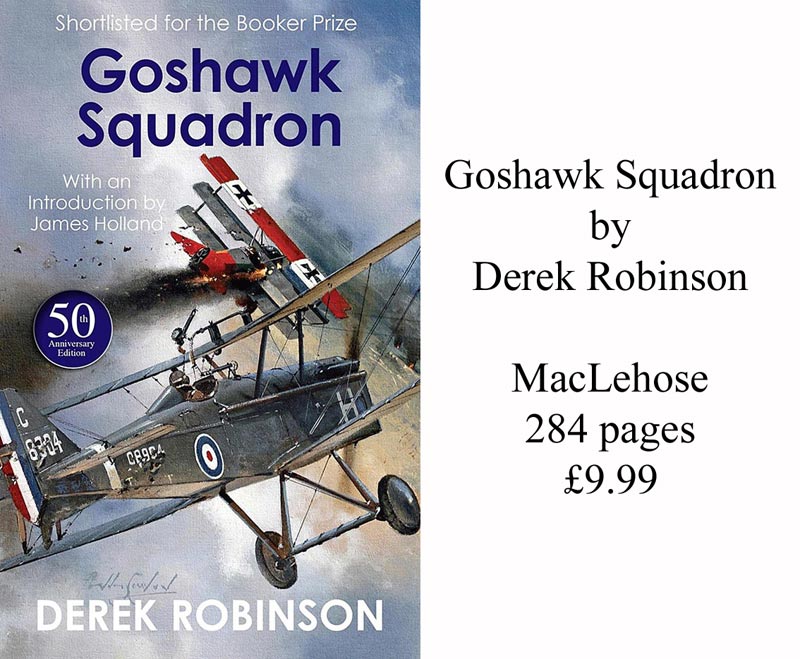
In 1941, Japan knew as little about the USA as the USA knew about Japan. The USA was unaware of Japan's intention to make a military empire by conquest, and Japan was convinced that the USA would negotiate a peace, rather than endure the hardships of war.
Britain and America were shocked by the first Japanese triumphs, especially at Pearl Harbour and Singapore. Language was a problem: in the West, nobody had broken Japanese military codes. Yet any pre-war visitor to Japan could see that it was an ambitious militarised nation with aggressive imperial ambitions. Japan had a flourishing aircraft industry (four big companies), a powerful modern navy, and a massive army with a wealth of experience in China.
Churchill dismissed the Japanese. 'They are not likely to gamble. They are usually most cautious,' he said. Yet Japan must gamble: the US had imposed an oil embargo, and to survive Japan must seize the oil-rich Dutch East Indies (now Indonesia), betting that America would crumble when faced with a challenge. This mutual ignorance explained much of the Pacific War.
Statesmen rarely read histories. They should: 1905 was Japan's great leap forward. The Russian fleet sailed to defeat Japan (the two countries disputed control of Manchuria and Korea). The Tsar expected a stunning victory over the upstart orientals. Crossing the North Sea, Russian officers mistook English fishing vessels for Japanese torpedo boats and sank a few, paid compensation, and sailed on. The blunder was an omen. At the Battle of Tsushina, of 36 Russian warships, Japan sank 22, captured 6, and did it all in an hour. Japan had seen its future, and it was a military one.
When aircraft became a war weapon, Japan created an air force incorporating the technical advances of the rest of the world, while the world dismissed the Japanese as imitators. In 1941, Churchill sent a battleship and a cruiser, without air support, to defend Singapore. Japanese torpedo bombers sank the Prince of Wales and the Repulse in 45 minutes.
Two of the many Japanese designs stand out. The Zero fighter was outstanding.
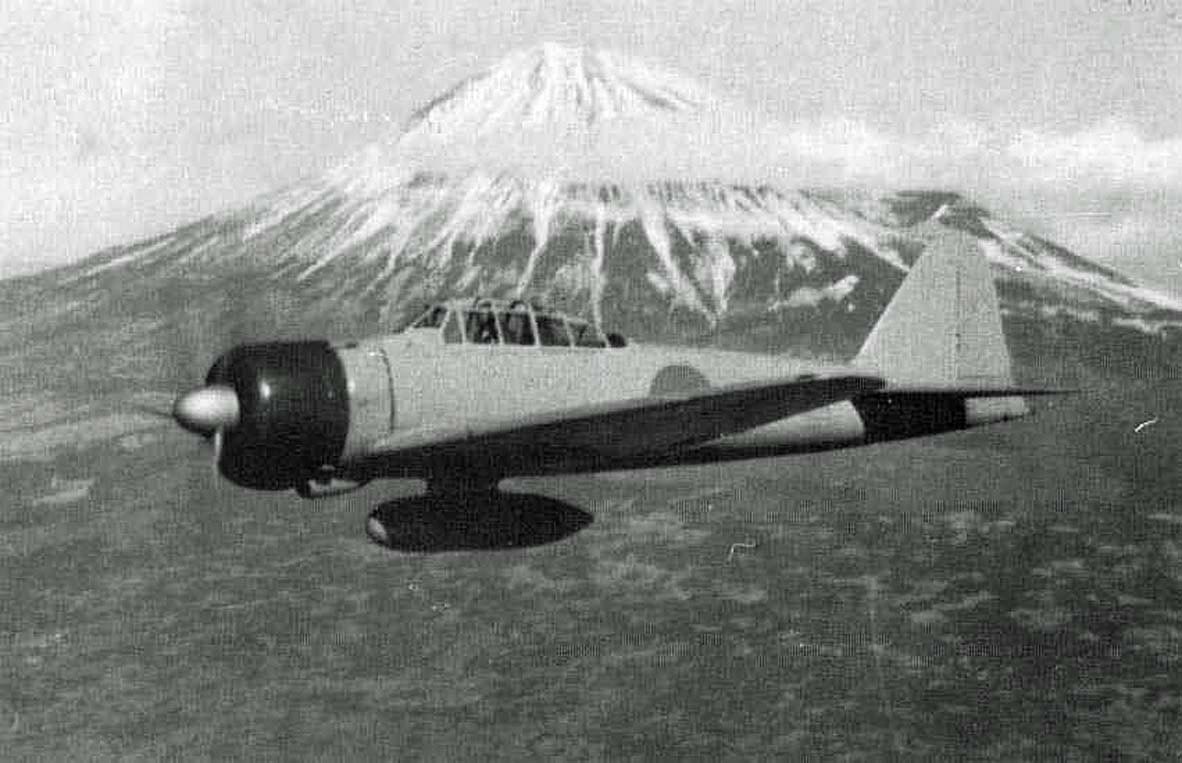
The Zero had a max speed of 340 mph, powered by a radial air-cooled engine with 14 cylinders and a two-speed supercharger. It was lighter and smaller than the Spitfire, equally fast, very agile, and with a machine gun firing through the airscrew and two Oerlikon cannon in the wings. In June 1942, in the Battle of Midway, an entire US squadron of Devastator torpedo bombers was hacked down by Zeros; more to the point, the torpedoes made no hits. The Zero was vulnerable (no armour plating, no bulletproof windscreen, unprotected fuel tanks) but Allied pilots treated it with respect.
The same was the case with the Emily, a giant Japanese flyingboat, some said the best seaplane of WW2.
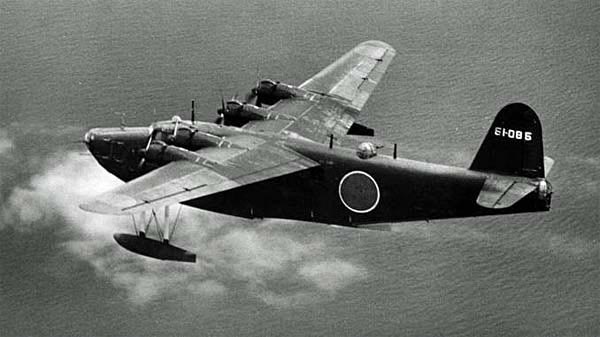
It was a superb aircraft: it had a span of 124 feet, four 14-cylinder engines driving four-blade airscrews, protected fuel tanks, fire extinguishers, a kitchen and a restroom, and for defence it had nose, dorsal and tail gun turrets plus gunners on both beams. Enemy fighters kept their distance. An Emily could fly 3,000 miles; in fact a pair of them flew across the Pacific intending to bomb Pearl Harbour, six months after the 7 December attack; but the weather there was foul, so they flew back (another thousand miles) and refuelled on the island of Truk.
The closest thing to the Emily was the British Sunderland, a supreme anti-submarine flyingboat with an endurance of up to 18 hours and so many guns that it was called a Flying Porcupine. Compared with a handful of Emilys, 749 Sunderlands were built. Japan had gambled on the Pacific War being brief. After Pearl Harbour, Admiral Tadaichi said: 'We won a great tactical victory and thereby lost the war.' And Admiral Yamamoto said; 'All we have done is to awaken a sleeping giant.' Hindsight.
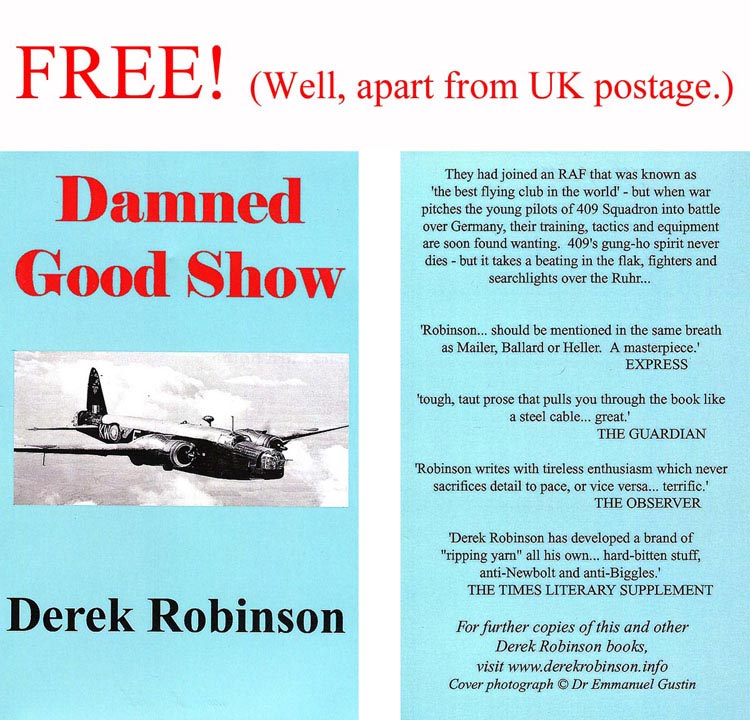

Six thousand people have climbed to the summit of Everest, and six thousand is a lot of people, verging on excessive. If an expedition halfway up Everest meets another expedition that is halfway down, then the point of the whole operation comes into question. Who cares? Nepal cares. The government of Nepal has to send squads of Sherpas up Everest to collect the garbage that climbers have thrown away: oxygen bottles, food containers, bottles, maps, ropes, even frozen corpses that mountaineers have left behind because they were too heavy to carry back to base camps.
Simply climbing Mount Everest is not enough: climbing without oxygen is the goal. What next? Being the first paraplegic to climb Everest? Will someone climb it in tennis shoes? Barefoot? A solo teenager? With red hair? A solo teenager in tennis shoes with red hair? Anything to get into the Guinness Book of Records. Too many people climb Everest because it's in their Bucket List. That bucket has gone to the well too often.
The
second-best joke about climbing Everest involved Sir Edmund Hillary's
first ascent, which coincided with Queen Elizabeth's coronation. A
flunkey murmured in the Queen's ear: 'It's Everest, ma'am.' And the
Queen said, 'I've told you before that we don't need double glazing.'
The best joke was about a man who began climbing Everest. After
three days he saw a house. He knocked on the door. A man opened it and
he was completely naked apart from a bowler hat. The climber asked:
'Why are you naked?' The man said: 'Nobody ever comes
here.' The climber asked: 'Then why the bowler hat?' The
man said: 'Well, somebody might.' If you don't think that's funny, try
John Chafee's story.
Senator Chafee, who was running for election in Rhode Island, had doubts about the electorate, so he raised funds by a non-event. For $25 a supporter could avoid campaigning by staying at home. For $35 you got a signed speech that Chafee never delivered, and for $40 you were allowed not to read it. If you felt like donating $75, the prize was a chicken dinner, but it was in your home, the chicken came from KFC, and the Senator didn't attend. A really keen supporter might cough up $150, for which the Senator and his wife dined at your home and he played a tape of his speech that was inaudible. Chafee guessed right. He raised an impressive $6,000 from his grateful fans, and in 1982 that was a sizeable sum.
Non-events are a fine idea, and I wish charities would copy. Whenever I hear about a man who is planning to jump a pogo stick from John O'Groats to Land's End for charity, I would pay him not to suffer the monotony, the blisters and the traffic jams, but instead to stay at home and read a good book. The cheque is in the mail. John Chafee had the right idea. The best way to admire Everest is from a distance.
********************************************************************************************************************Readers Write #83 May 2022
New Book - Odds and Sods Mk 3
|
Following Mk 1 and Mk 2, Odds and
Sods Mk 3 is now printed and is full of reports from anywhere and everywhere
- including the truth about Pegasus bridges, and Jane Austen's get-up-and-go
... the Flying Suitcase and drop-kicking history ... the origin of
Bristol Fashion and cowboy stampedes ... Stalin blinked and German frostbite boots
... the RAF's Bloody Paralyser and Skull's desert blazer. Price £7.50 including UK postage. |
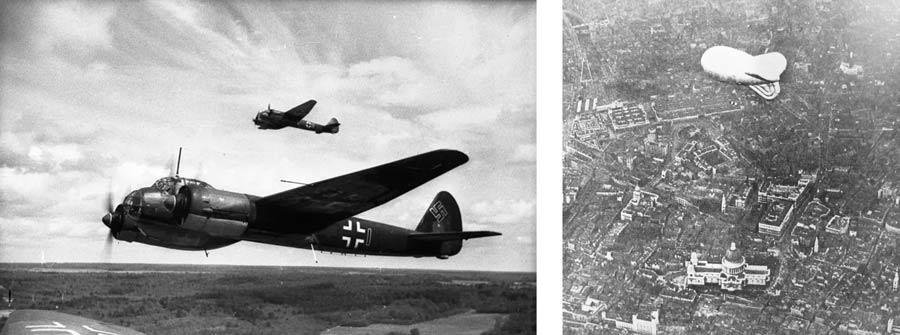
Herrmann's controls
were sluggish and he couldn't escape: he ended up on top of the
balloon. His engines were working but his bomber was at a dead
stop, perched on the balloon like a bird on a nest. Next thing he
saw was that 'the British searchlights were shining from above - we had
fallen off the balloon and were upside-down.' Amazingly, he
regained control, flew through the anti-aircraft barrage, dropped his
mines and went home.
He flew on ops for the whole
war, served ten years in a Soviet prison, emerged as an unrepentant
Nazi (and a Holocaust denier) and died, aged 97, in 2010.
Readers Write #84 July 2022
Burma had fallen to the Japanese armies. The Burma Road disappeared and
China was isolated. One obvious target was India. Half a million
refugees fled from Calcutta. Eastern India panicked: shops were shut,
food was scarce, and rumours of parachutists and bombing raids spread.
The Japanese navy dominated the Bay of Bengal and sank a dozen Allied
freighters. No wonder that Churchill wrote 'how gravely our British
affairs have deteriorated since December 7th.' He feared that the
invasion of India would lead to a disastrous break in oil supplies to
Britain, without which war would be impossible. Russia and Japan had
agreed on their neutrality, and the High Command in Tokyo was
contemplating a link with German forces if Rommel captured Egypt and
seized the oil supplies. For the Allies, this was a very black moment.
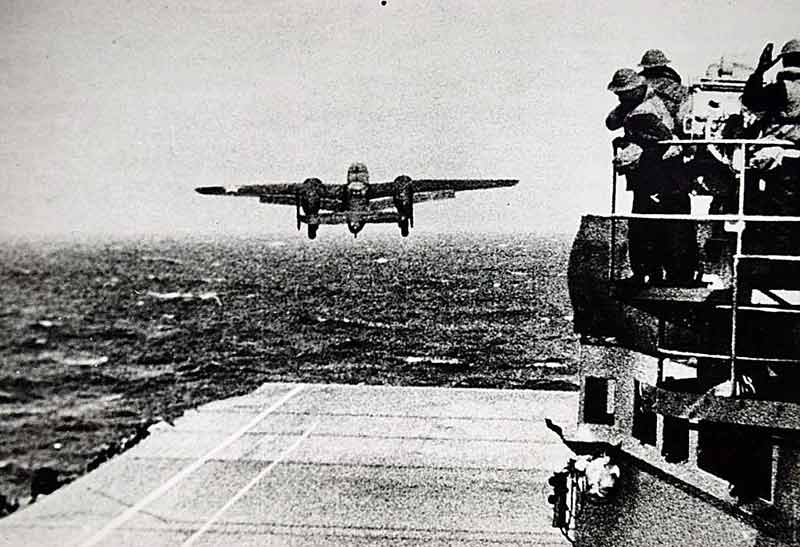
Readers Write #85 September 2022
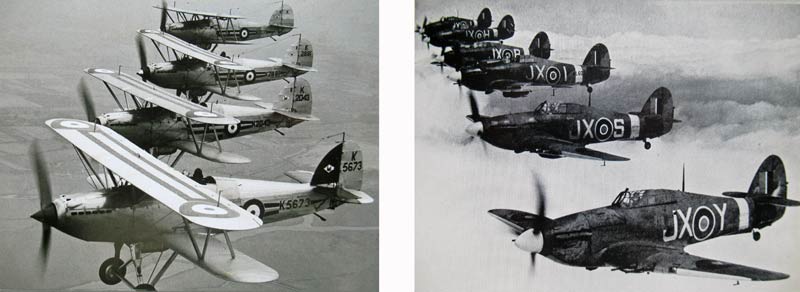
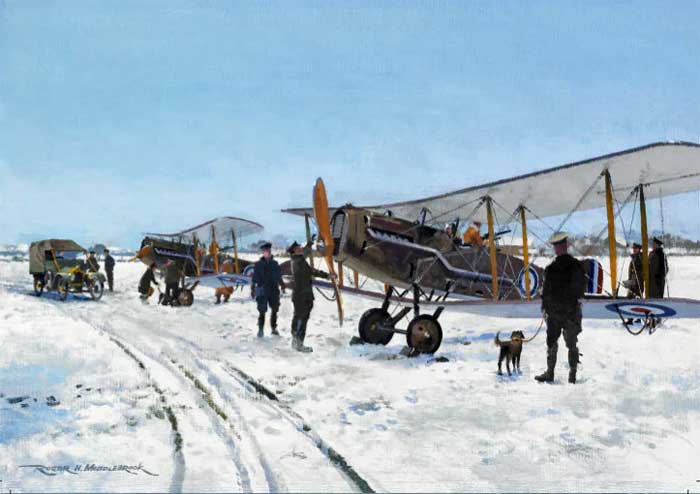
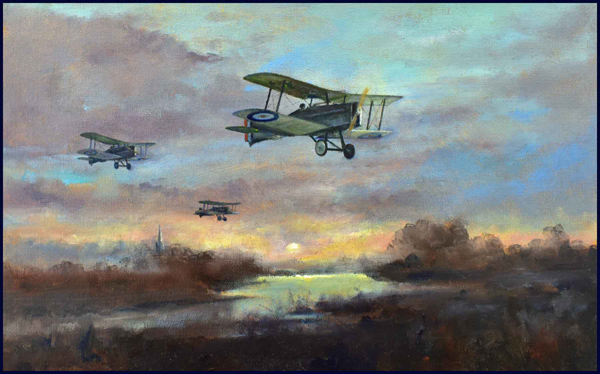
Readers Write #89 July 2023
